Read our blog
.jpg)
2025 in review: a transformative year for ProBackup

What a year it has been! As we wrap up 2025, we want to take a moment to reflect on the incredible journey we've shared with our customers. This year marked a significant milestone for ProBackup, and we couldn't be more excited about what we've accomplished together.
ProBackup 3.0: a fresh start
The highlight of 2025 was undoubtedly the launch of ProBackup 3.0 in August. This wasn't just an update. It was a complete reimagining of how you interact with your data backups.
Our brand new user interface transforms the way you navigate through your backed-up data. The intuitive tree structure in the left sidepane lets you drill down to exactly the right project, board, or list in seconds. Once there, simply switch between tabs to view items, comments, files, or fields for your selected project.
The redesigned home page now provides a quick overview across all your connected apps at a glance. You can instantly see the status of each connected app, browse a calendar view summarising each day, review recent backup activity, and track new records through our visual graph.
After months of careful development and learning from ProBackup 2.0, we're proud to say this was our most stable launch yet .
Find anything in seconds with global search
Lost track of that crucial task or important comment? Our new global search feature has you covered. Search for any text string across different data types and find exactly what you need, no matter where it lives in your backups. This powerful addition complements our improved navigation, making data recovery faster than ever.
Flexibility where it matters
We listened to your feedback and introduced a more flexible usage-based pricing model. Now you can scale within your tier based on actual data usage, ensuring you only pay for what you need. Whether you're backing up Asana, ClickUp, Trello, Monday, or any of our twelve supported platforms, our pricing grows with you .
Premium features for power users
For our Premium customers, we introduced bulk download of attachments. Need all the files from a specific project, board, or list? Download them all in one go. This feature has been a game-changer for teams managing large volumes of documentation.
We also extended our data retention options up to four years for Premium users, giving you even more historical access to your backups.
Enhanced team collaboration
Managing team access just got easier. You can now invite users across multiple apps with granular permission controls. Decide whether team members can view only, or also restore and export data. Choose between restricted access (matching their permissions in the source app) or grant full access to your backups.
Security and performance at our core
Behind the scenes, we've made substantial improvements to security, performance, and architecture. Your data continues to be stored exclusively in AWS data centres with AES-256 encryption at rest and SSL protection in transit [2]. These infrastructure investments ensure ProBackup remains the reliable, secure backup solution your business depends on.
Expanding the Ecosystem
We continued to expand our support for the tools you use every day. Early in the year, we launched support for GitHub and Webflow , ensuring your repositories and web projects are as safe as your project management data. We also deployed numerous micro-updates to iron out restore nuances for our existing integrations.
Looking ahead to 2026
We're just getting started. Here's a sneak peek at what's coming:
Data residency options
Soon you'll be able to choose where your data is stored. We're launching with US-based storage as our first additional option. Interested in joining the closed beta? Email us to get early access. More locations will follow shortly after.
Expanding our integration portfolio
We're adding Pipedrive to bring our backup protection to even more CRM users. This is just the beginning of our expansion into the CRM space.
And there's more
We have plenty of other exciting features in development. Stay tuned for more announcements in the coming months.
Thank you
None of this would be possible without you, our customers. Your feedback, patience, and trust drive everything we do. As we head into 2026, we remain committed to one mission: giving you peace of mind by protecting the data that powers your business.
Here's to another year of keeping your SaaS data safe.
Ready to secure your data for 2026? Start your free trial of ProBackup today:
https://app.probackup.io/onboarding
.jpg)
Product update: Introducing Global Search

At ProBackup, we understand that data loss doesn’t always look like a catastrophic server failure. Often, it is subtler: a single task deleted by accident, a comment lost in a busy project, or a record moved to the wrong board.
Recovering that data relies on one crucial factor: finding it quickly.
Previously, our search functionality allowed you to find records within a specific table - requiring you to select the exact project, board, or list first. While effective, this required you to know exactly where the item was located before it went missing.
Today, we are upgrading that experience. We are excited to announce the launch of Global Search, a powerful new way to navigate your backups.
How Global Search works
We have rebuilt our search engine to look beyond individual tables. The new Global Search allows you to query your entire backup history instantly across all hierarchies of your SaaS application .
When you type a query, our system now scans across all tasks, records, comments, file names, documents and field names.
Whether you are backing up Asana, Trello, ClickUp, or Monday , you no longer need to remember which specific board a missing item belonged to. If it is in the backup, Global Search will find it.
How to use it
We have designed this feature to be as frictionless as possible to help you save time during critical recovery moments:
- Access your backups: Navigate to the data backups of one of your connected apps.
- Locate the Search Bar: Click the search bar located prominently in the menu bar.
- Search: Type in your text (record name, content, or keyword).
- View: The items matching your text will appear in the results. Simply click on a record to jump directly to the item view, where you can inspect the details or initiate a restore.
Availability and Pricing
We want every customer to experience the power of this new tool, but because searching across thousands of encrypted records requires significant processing power, availability varies by plan:
- Pro and Premium Users: Global Search is fully available with no limitations. You can search your entire archive as often as you need.
- Plus Users: We have enabled a trial of this feature restricted to 3 searches per day so you can test the functionality.
Reducing Mean Time To Recovery
Data resilience isn't just about having a backup; it is about the "Mean Time to Recovery" (MTTR). By removing the need to click through specific projects to find a lost item, Global Search significantly reduces the time it takes to fix human errors or glitches , letting your team get back to work faster.
Log in to your dashboard today to give it a try.
.jpg)
4 Reasons why you should sync your data backups to Google Drive

At ProBackup, our primary mission is to provide you with peace of mind. When we back up your SaaS apps. whether it’s Asana, Monday, or ClickUp, we utilize heavy encryption to store that data securely on our own servers . This automated, daily process is the foundation we rely on when you need to restore a specific record or an entire project back to your account.
However, we believe in robust data resilience. That is why we offer our users the option to sync a copy of their data backups directly to their own Google Drive. While this feature is optional (available on our Pro and Premium plans ), we strongly recommend it.
Why add this extra step? Here are four reasons why syncing to Google Drive elevates your data security strategy.
1. An extra layer of redundancy
In the world of data protection, redundancy is key. While ProBackup maintains a rigorous uptime schedule to protect you against glitches, human error, or malicious intent, true "cloud resilience" means never relying on a single point of failure.
By syncing to Google Drive, you create an independent fallback. In the unlikely event that our service is temporarily unavailable, you retain immediate access to your data through your own Google infrastructure. This ensures that you are never cut off from your vital business information, regardless of the status of your SaaS provider or your backup service.
2. Instant accessibility in a familiar format
While the ProBackup app provides an easy way to navigate and search your data backups, you might prefer a more familiar workflow.
Syncing your data to Google Drive converts your records into Google Sheets. This provides a major advantage: familiarity. Unlike obscure file formats like CSV or JSON, Google Sheets are easy to read, share, and analyze. This allows stakeholders who may not have access to the ProBackup dashboard to review archived data in a format they already use every day .
3. Bulk downloading made easy
Need to get your data out of the cloud entirely? Within the ProBackup app interface, downloading every single data table across your account simultaneously isn't always feasible. Google Drive solves this.
When your data is synced to Google Drive, your entire backup history is organized into folders. With just a few clicks, you can select the parent folder and download it as a Zip file.
- Pro Tip: If you enable the sync of files and attachments , this method allows you to bulk download every document and image attached to your tasks in one go—saving you hours of manual clicking.
4. Automated local backups via Drive for Desktop
The "3-2-1 backup rule" suggests keeping at least one copy of your data off-site/locally. You can automate this workflow by combining ProBackup with the "Google Drive for Desktop" application.
Once installed, Drive for Desktop syncs your cloud folders to your local hard drive. This creates a seamless chain of data flow:
- ProBackup captures data from your SaaS app.
- ProBackup syncs that data to your Google Cloud.
- Drive for Desktop pulls that data down to your local computer.
This setup ensures that even if you lose internet access entirely, you have a local, searchable copy of your business data waiting for you.
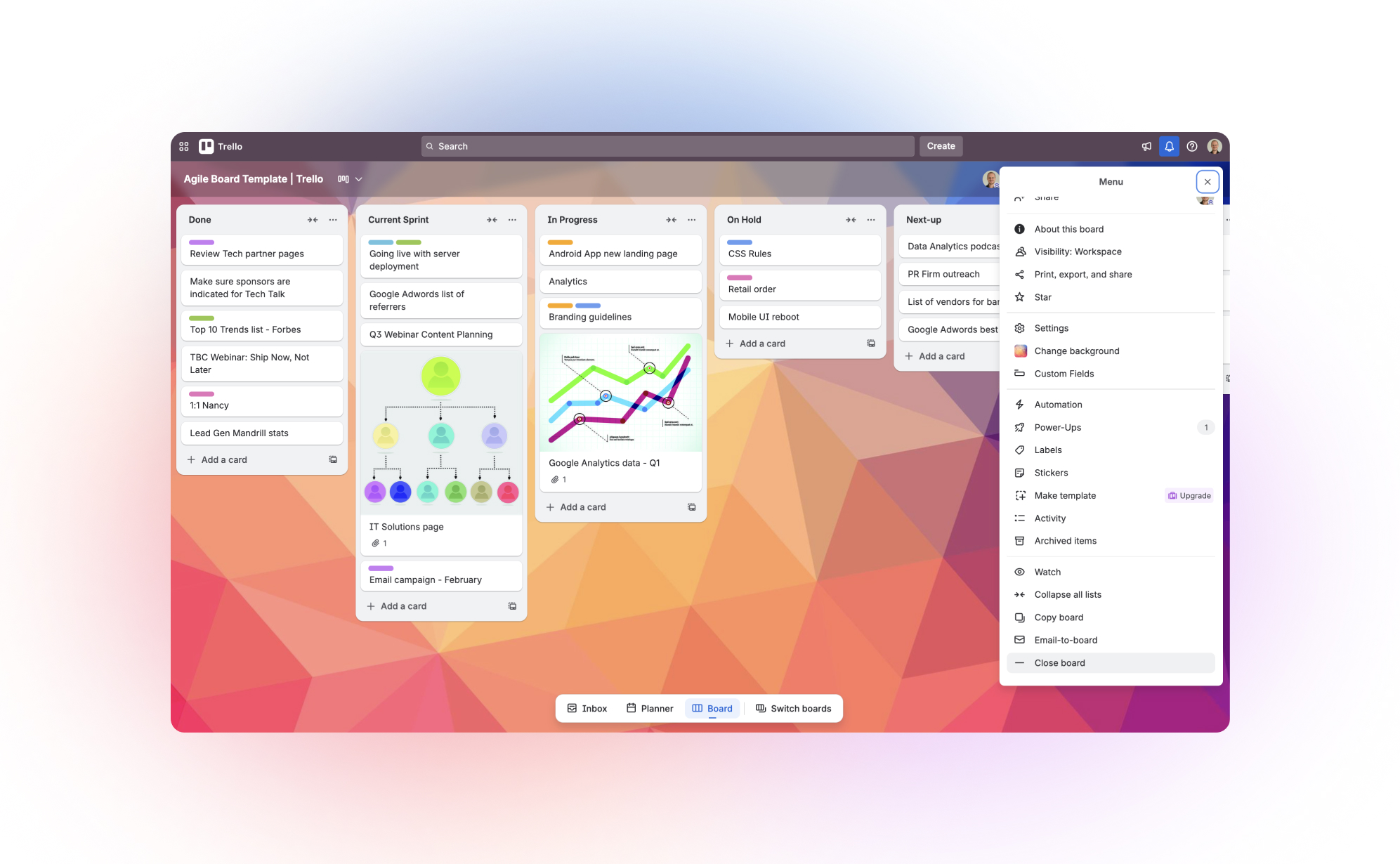
How to delete and restore data in Trello

Trello is an intuitively visual project management tool, but as your boards grow with hundreds of lists and cards, maintaining order can become a challenge. Whether you are performing a routine board cleanup or panicking over a missing card, understanding how deletion works within Trello’s unique interface is critical.
In our experience regarding SaaS data management, many users don’t realize the risks until it is too late. Risks such as human error, malicious deletion by disgruntled employees, or technical glitches can set a team back hours or even days .
This guide will walk you through the hierarchy of deletion in Trello, the distinction between "Archiving" and "Deleting," and how to ensure your data remains safe permanently.
Understanding the hierarchy: What can you delete?
Before cleaning up your workspace, it is vital to understand the cascading effect of deletion in Trello. Deleting a high-level item removes everything contained within it.
You can delete (or close) nearly all content types, including:
- Workspaces: The overarching container for your team (deleting this removes all associated boards).
- Boards: The project canvas (deleting/closing a board removes all lists and cards inside).
- Lists: Columns that categorize your tasks.
- Cards: The individual units of work.
- Checklists, Attachments & Comments: Contextual data within cards.
Best practice: Archive vs. Delete
Expert Tip: We strongly recommend Archiving over deleting naturally because Trello is designed this way.
- Archiving (often called "Close" for boards) removes the card, list, or board from your active view but preserves the data history. These items can be restored at any time.
- Deleting is a permanent action. Trello does not have a generic "Trash can" for items once you hit the delete button. Once deleted, the content is removed from Trello's servers immediately.
Only use delete when you are 100% certain the data is obsolete or if it was created in error.
How to archive or delete data in Trello
Uniquely, Trello often requires you to Archive an item before you are given the option to Delete it.
Cards
- Open the specific card.
- Click Archive in the "Actions" menu on the right sidebar.
- Once archived, a red button labeled Delete will appear in the same spot.
- Click Delete only if you want it gone forever.
Lists
- Locate the list on your board.
- Click the three dots (...) next to the list title.
- Select Archive this list.
Note: Trello does not offer a native way to permanently "delete" a list effectively, only archive it, though you can delete the specific cards within it.
Boards
- Click the Menu (...) in the top right corner of the board.
- Select Close board.
- Once closed, you will see a message saying "Link to this board not found."
- Click Permanently delete board if you wish to remove it entirely.
How to restore deleted data (natively)
If you have followed best practices and Archived your content rather than deleting it, Trello makes restoration easy.
To access Archived items:
- Open the Board Menu by clicking the three dots (...) in the top right.
- Select Archived items.
- You can toggle between Cards and Lists in the search bar provided.
- Locate your item and click Send to board.
Crucial Constraints:
- The "Delete" Cliff: If you chose to hit the red "Delete" button after archiving a card, there is no native way to restore it. Trello support cannot recover permanently deleted cards, lists, or boards.
- Granularity: You typically cannot "undo" the deletion of a specific checklist item or comment once removed.
The risks: What cannot be recovered?
The native Archive functionality of Trello is a great safety net, but it is not a backup solution. There are significant gaps in data safety:
- Permanent Delete: As mentioned, if a user (malicious or accidental) clicks "Delete" instead of just leaving it in the Archive, that data is lost instantly.
- Power-Ups & Integrations: Errors caused by 3rd party integrations can sometimes wipe data or change field configurations in ways that the Archive history cannot reverse .
- Service Downtime: While rare, if the service is down, having your data only accessible via the Trello UI limits your access to critical information .
Ensuring total data safety (beyond the Archive)
To satisfy compliance requirements or simply for peace of mind, relying solely on Trello's Archive list is rarely enough for professional teams.
Strategies to prevent data loss:
- Restrict Permissions: Ensure only Admins have the authority to Close (Archive) and Delete boards.
- Education: Train your team to never use the "Delete" button on cards unless explicitly authorized.
- Third-Party Backups: Establish a redundancy plan.
Because Trello does not offer a "Trash bin" that holds permanently deleted items for 30 days, specialized solution providers like ProBackup are essential. ProBackup provides daily, automated backups of all API-available data .
Unlike the native features, a dedicated backup allows you to:
- Restore Granularly: Perform one-click restores of single records, comments, files, and entire boards .
- Snapshot History: Because ProBackup backs up every 24 hours automatically, you can revert to a version of your board from a specific date .
- Export Data: Option to sync your records and files directly to Google Drive (Google Sheets and folders) for an accessible, readable fallback format in case Trello is unavailable .
Summary
Deleting data in Trello requires a deliberate two-step process, but the final step is irreversible. Trello's "Archive" is a filing cabinet, not a disaster recovery plan.
To maintain true data authority and security:
- Archive and never Delete unless absolutely necessary.
- Audit your board members and permissions.
- Implement an automated backup solution like ProBackup to protect your cards, lists, and workflows from permanent loss.
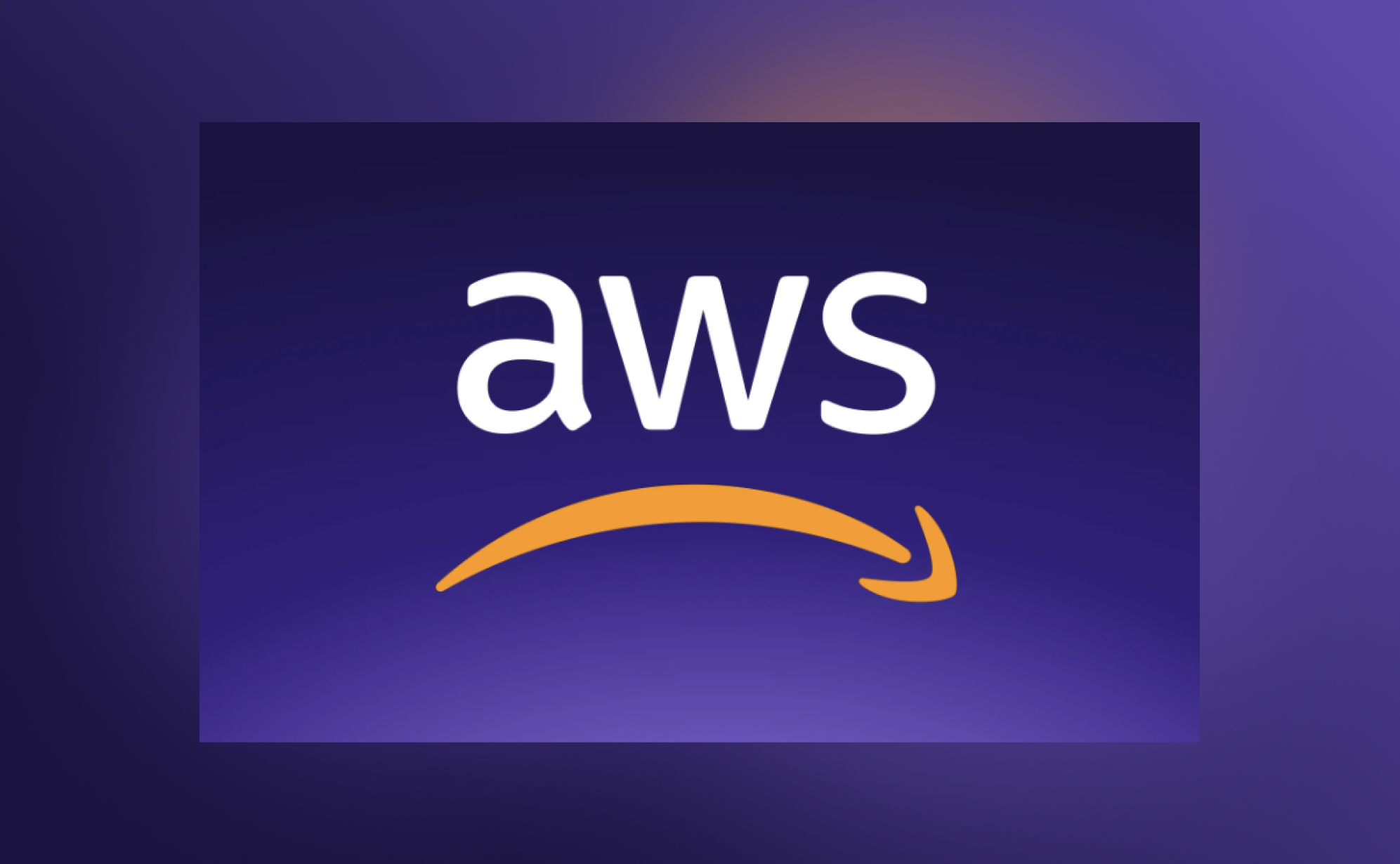
How to stay productive during major cloud service outages (like our customers during the recent AWS outage).

On Monday 20th of October 2025, a major outage at Amazon Web Services (AWS) sent ripples across the internet, impacting thousands of companies and affecting millions of users. For businesses that rely on cloud-based SaaS applications to run their daily operations, the disruption was a stark reminder of a critical vulnerability: when a foundational service goes down, access to your own essential data can vanish in an instant.
While countless businesses scrambled to find workarounds, our customers at ProBackup experienced a different reality. Because our platform provides independent, daily backups of their critical SaaS data, the widespread outage didn't lock them out. They could still sign in to ProBackup, view their complete data backups, and access the business-critical information they needed to keep moving forward.
Core checklist / principles to protect productivity from major outage
When you use cloud productivity apps to manage your work, it is strongly recommended to protect yourself against any service interruptions or downtime. Guaranteeing a 100% uptime to your cloud data will be difficult, but there are a few things you can do to minimize the risks of not having access to your data. Here’s a checklist to minimize downtime:
- Implement automated, daily backups: Don't rely on manual processes that can be forgotten or overlooked. The best strategy is to use a service that automatically backs up all your data once every 24 hours, ensuring you always have a recent copy without any manual effort .
- Keep your backups independent: Store your backups on a platform that is separate from your primary SaaS application. This ensures that if your main service provider experiences an outage, your critical backup data remains safe and accessible.
- Maintain a fallback data source: For ultimate peace of mind, have a secondary, easily accessible version of your data. Services that offer an optional sync to familiar formats like Google Sheets provide a crucial fallback, allowing you to access your information even if the primary application is down.
- Ensure easy and granular restore options: A backup is only useful if you can restore it quickly. Look for a solution that offers granular, one-click restore capabilities. This allows you to recover single records, comments, or even entire projects with just a few clicks, minimizing disruption .
- Regularly verify your backup status: Don't just "set it and forget it." Use automated status reports, such as weekly summary emails, to confirm that your backups are running successfully and that your data is protected.
Example: our customer’s business continuity during the recent AWS outage
400 Businesses Continued
The numbers from Monday tell a compelling story of resilience. During the outage, **more than 10% of the 4,000+ organizations we support logged into ProBackup.** This wasn't just passive viewing; it was active engagement. We saw around **2,000 data tables requested** and **85 of them exported to Excel** as teams retrieved vital information to continue their work. In a moment of widespread digital paralysis, our customers found a lifeline to their data.
A Multi-Layered Safety Net
Beyond direct access through our app, many customers benefited from an additional layer of preparedness. Our optional sync to Google Drive feature proved invaluable, allowing users to access their backups directly in Google Sheets and folders [1]. This provides a powerful fallback, empowering teams with access to their data in a familiar format they can rely on, even if our own service were ever unavailable [1]. For those using "Desktop for Drive," this data was even accessible offline, creating a truly robust and independent data reserve.
Beyond Outages: The Real Reason for Backups
While a large-scale outage is a dramatic example, it’s just one of many reasons why a dedicated backup strategy is non-negotiable for modern businesses. The most common threats to your SaaS data are often less sensational but just as damaging:
- An accidental field change or a flawed data import can corrupt records and set a project back by days
- Malicious Intent: A disgruntled employee can intentionally delete crucial data, causing significant harm to the company.
* Glitches and Bugs: Technical errors within an application or a third-party integration can lead to unexpected data loss.
Monday’s events were a widespread stress test, but these smaller, more frequent risks are what make a reliable backup and restore solution an everyday necessity.
Saving the day
The most rewarding part of the day was hearing directly from our customers. We received a handful of messages from organizations telling us that ProBackup had "saved the day," enabling them to continue serving their own clients and keep their operations running smoothly.
We are incredibly proud to have our customers' backs during one of the most significant service disruptions in recent memory. Incidents like these reinforce our mission: to provide peace of mind and unwavering data resilience, ensuring that your business is prepared for the unexpected.

How to delete and restore data in Airtable

Airtable manages to blend the simplicity of a spreadsheet with the complexity of a relational database. However, as your Bases grow into complex ecosystems of linked records, interfaces, and automations, data management becomes high-stakes. Whether you are pruning old records or facing a blank table where data used to be, understanding Airtable's deletion logic is essential.
In our experience with SaaS data management, the flexibility of Airtable is also its greatest risk. Accidental deletion of a field configuration or a wrong CSV import can set a team back hours or even days . Furthermore, risks aren't just accidental; disgruntled employees or simple synchronization glitches can lead to significant data loss .
This guide will walk you through the hierarchy of deletion in Airtable, the limitations of "Snapshots," and how to ensure your data remains safe permanently.
Understanding the hierarchy: What can you delete?
Before cleaning up your Base, you must understand the relationships between your data. Deleting a parent item often creates a domino effect.
- Workspaces: The highest level (removing this deletes all Bases inside).
- Bases: Your database container (deleting this removes all tables, interfaces, and automations).
- Tables: The individual tabs within a base.
- Fields (Columns): The structure of your data. Warning: Deleting a field deletes that data for every record in the table.
- Records (Rows): The individual data entries.
- Views: Configurations of how you see data (deleting a view does not delete the data, only the filter/sort configuration).
Best practice: "Soft Delete" vs. Delete
Expert Tip: Unlike Trello, Airtable does not have a native "Archive" button for records. We recommend creating a "Soft Delete" system using Views.
- "Soft Delete" (Archiving): Create a checkbox field or Single Select field named "Status" with an option for "Archived." Create a Main View that filters out any record where
StatusisArchived. This hides data from daily work but keeps it safe. - Deleting: This sends data to the Airtable Trash. This should be reserved for junk data or duplicates.
How to delete data in Airtable
Records (Rows)
- Right-click on the record (or select multiple).
- Select Delete record.
Fields (Columns)
- Click on the dropdown arrow next to the field name.
- Select Delete field.
Note: This is dangerous as it removes the data for that specific attribute across the entire table.
Bases
- Go to the Airtable home screen.
- Click the three dots (...) on the Base icon.
- Select Delete base.
How to restore deleted data (natively)
Airtable provides two distinct safety nets depending on what was deleted.
1. The Trash (For Records, Fields, and Views)
For granular items, Airtable uses a Trash bin.
- Open your Base.
- Click the Trash icon (usually located in the view bar or bottom right depending on UI version).
- Locate the item and click Restore.
2. Base Snapshots (For Global Disasters)
If a Base is corrupted or massive amounts of data are lost, the Trash bin is tedious. Airtable automatically takes "Snapshots" of your base regarding the help article you provided.
- Open the Base history (Clock icon) or Settings.
- Select Snapshots.
- Choose a timestamp and restore.
Crucial Constraints:
- The "New Base" Problem: Restoring a snapshot does not revert your current base. It creates a brand new Base with the old data.
- This changes the Base ID, meaning all your API integrations, Zapier connections, and shared links will break and need to be reconnected manually.
- Time Limits: Items in the Trash are purged after a set time (usually 7 days for free plans, up to 1 year for Enterprise, but commonly 30 days for paid Pro plans).
The risks: What cannot be recovered?
The native tools in Airtable are powerful but leave gaps in a professional workflow:
- Granular History: If a cell value is overwritten (not deleted, but changed—e.g., "Status" changed from To-Do to Done), finding the previous value can be difficult without trawling through the individual record's activity log one by one.
- Broken Links: As mentioned, relying on Snapshots effectively breaks your workflow integrations, leading to downtime while you re-configure your tech stack.
- Google Drive Sync: Native Airtable backups are proprietary files; you cannot easily export your entire base history to a neutral format like Google Sheets automatically for safekeeping .
Ensuring total data safety (beyond Snapshots)
To satisfy compliance requirements or avoid the "New Base" restoration headache, specialized solution providers like ProBackup are essential.
ProBackup provides daily, automated backups of the API available data in a cloud app .
Unlike native Snapshots, a dedicated backup allows you to:
- Restore Granularly: Perform one-click restores of single records, comments, and files directly into your existing Base (keeping the ID intact) .
- Sync to Google Drive: Automatically sync your text data and files to Google Sheets and folders. This provides a fallback format you are familiar with if Airtable is ever down or inaccessible .
- Search Globally: Search across your entire backup history to find specific lost data points .
Summary
Managing deletion in Airtable requires discipline. While the "Trash" handles small mistakes and "Snapshots" handle total apocalypses, neither is perfect for the common "middle-ground" errors regular teams face.
To maintain true data authority:
- Use Views to "Archive" data rather than deleting it.
- Understand that restoring a Snapshot creates a new Base, breaking your integrations.
- Implement an automated backup solution like ProBackup to allow for granular restoration without disrupting your workflow.
.jpg)
How to Evaluate the Security of a SaaS App Before Storing Business-Critical Data

Choosing the right SaaS app to store your business data is a big decision. If an app isn’t secure, your data could be stolen, lost, or accidentally deleted. A security breach could cost your business money, time, and trust. So, how can you tell if a SaaS app is safe to use? Here’s a checklist to help you decide before you commit to a new app.
Can the Admin Make Everyone Use Two-Factor Authentication (2FA)?
Two-Factor Authentication (2FA) adds an extra layer of protection, making it much harder for hackers to access accounts. A good SaaS app should allow admins to enforce 2FA for all users. If it’s optional, some users might skip it, leaving your business at risk.
With 2FA, even if a password gets stolen, hackers still need a second factor, like a mobile code or biometric confirmation to access an account. Apps that offer 2FA but don’t enforce it leave a major security hole. Always check if admin enforcement is available and ensure your team follows the policy.
Has the App Had Security Problems in the Past?
Before trusting an app, check if it has had any security breaches. Search online for reports of past hacks or data leaks. You can also check the company’s security page or transparency reports. If the app has had issues but handled them well and improved its security, that’s a good sign. However, if it has a history of repeated problems, you might want to look for a more secure alternative.
Look at how the company responds to incidents. Do they have a history of taking quick action, notifying users, and strengthening security? A provider that learns from past breaches and actively invests in security improvements is far better than one that tries to cover up issues or ignores them.
Does the App Have a Good Uptime Record?
Uptime refers to how often the app is working without outages. Frequent downtime can indicate security issues or poor infrastructure. Many SaaS apps have a status page where you can check their uptime history. If an app goes down often, it might not be reliable enough for business-critical data.
Downtime doesn’t just mean inconvenience. It could indicate underlying security issues, such as DDoS attacks or poor server management. Check the provider’s history of downtime incidents, read user reviews, and ensure they offer a service level agreement (SLA) with uptime guarantees.
Does the App Have a Trash Bin or Archive System?
People make mistakes, and sometimes important files get deleted by accident. A secure SaaS app should have a trash bin or archive feature that lets you restore deleted data. Make sure to check how long deleted data is stored before it’s permanently erased.
Some apps keep deleted data for only a few days, while others offer extended retention periods. Ideally, the app should have flexible options where admins can set retention policies to match business needs. If an app permanently deletes data with no way to recover it, you could be at risk of losing crucial information.
Does the Admin Get Alerts When Data is Deleted?
Admins should be notified when important data is deleted. A good SaaS app will send alerts when someone removes files or records, allowing you to catch accidental or unauthorized deletions before they cause problems.
These alerts should include details like who deleted the data, when it happened, and whether it can be recovered. Some apps even allow admins to review and approve deletions before they take effect. If an app lacks these features, it may be harder to track and prevent data loss.
Can You Control Who Can Delete Data?
Not every team member should have permission to delete data. A strong SaaS app will let you assign different roles and permissions so that only certain users can make changes. This prevents accidental deletions and limits the risk of internal security threats.
Role-based access control (RBAC) is essential for managing user permissions. The best apps allow detailed customization so that sensitive data is only accessible to those who need it. If an app doesn’t offer this, consider whether it’s secure enough for your business.
Does the App Have Backups, Snapshots, or Export Options?
Even the best systems fail sometimes. A secure SaaS app should have automatic backups, snapshots, or export features that let you recover old versions of your data. If an app doesn’t offer these options, losing data could be permanent.
Find out how often backups are made, where they are stored, and how easy it is to restore them. Some apps only back up data once a day, while others offer continuous backup. The more frequent and accessible the backups, the safer your data will be.
Can the App Work with Backup Services Like ProBackup or SysCloud?
Relying solely on the app’s internal backup system can be risky. Third-party backup services like ProBackup offer extra protection by automatically saving copies of your data. This ensures that even if the app itself fails, you still have a backup to restore your information.
Using an external backup service adds an extra layer of protection. It prevents data loss due to software errors, cyberattacks, or human mistakes. If a SaaS app doesn’t integrate with third-party backup providers, you may need to rely on manual exports, which are time-consuming and less reliable.
Does the App Connect with Automation Tools Like Zapier and Make.com?
Integration with automation tools like Zapier and Make.com can help improve security. These tools allow you to set up automated backups, data transfers, and alerts that keep your information safe and accessible.
For example, you could create an automated workflow that saves a copy of your records every week to a separate cloud storage provider. These integrations also help you streamline processes, reducing human error and ensuring your data is always backed up properly.
Conclusion
Security should be a top priority when choosing a SaaS app. By looking for these key features, you can make sure your data stays protected, backed up, and easy to recover if something goes wrong. Taking the time to evaluate security now can prevent costly problems in the future.
Before committing to any SaaS app, run through this checklist. The right app should not only meet your business needs but also provide peace of mind that your data is secure. A little research now can save you from big headaches later.
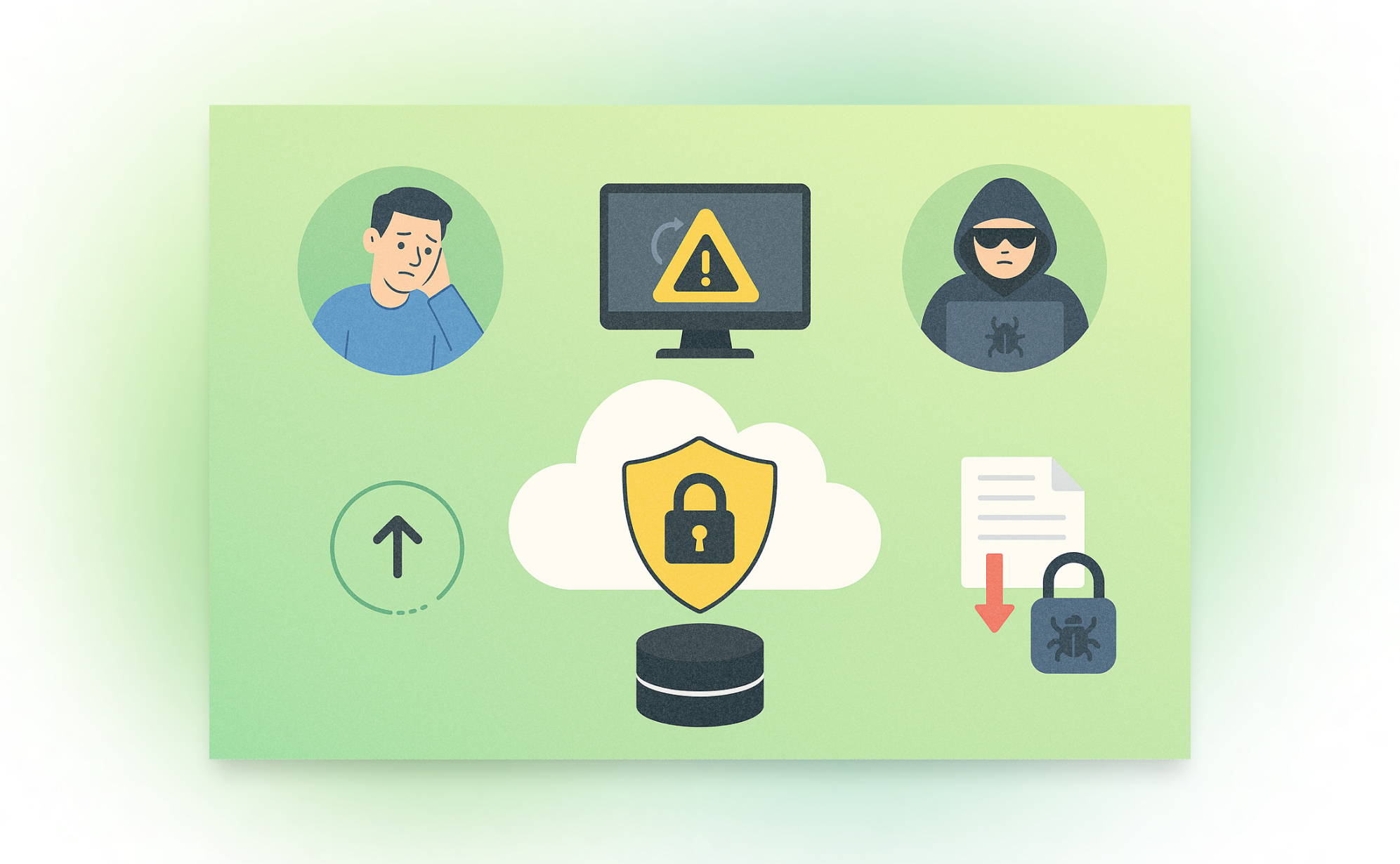
5 Common SaaS Data Loss Scenarios (and How to Prevent Them)
.png)
While most SaaS (Software as a Service) providers have robust disaster recovery plans for their platforms, they don't typically take responsibility for data loss within your individual account. This means that if critical information is lost due to an issue on your end, you are ultimately responsible for its recovery.
Using SaaS applications to manage your work introduces certain risks, and losing key data can happen in several ways. Here are four major threats you should protect your team against.
1. Human Error
This is the number one reason for data loss. It's surprisingly easy for a team member to make a mistake that can set you back hours or even days. In many productivity apps, it only takes a few clicks to delete an entire project or board. A user might intend to delete a single task but accidentally have the whole table selected, or they might choose the "delete" option instead of "archive."
It's also common to need to roll back smaller mistakes, like accidentally changing a field configuration, removing a value from a selection field, or overwriting the wrong column with a data import. While some of these minor issues can be undone within the app itself, others require a dedicated backup and restore tool to revert the changes.
2. Malicious Users
Internal threats can be just as damaging as external ones. In many companies, authorization controls can be relaxed, allowing most team members to make significant updates or even delete crucial data. A disgruntled employee could intentionally delete entire projects or boards to harm the company.
There are also less severe but still problematic cases where lazy team members might delete data to lighten their workload, such as removing sales leads to avoid follow-ups or deleting tasks to hide a missed deadline. When work is managed in a shared online space, an independent backup ensures you have a true record of all activity.
3. Glitches & Down-time
Most major SaaS apps have a strong record for uptime, but no service is perfect. Even minor glitches, bugs from third-party integrations, or temporary down-time can significantly impact your business operations.
Imagine not being able to access prep work right before a client meeting or look up contract details during a call. An independent, third-party backup of your data ensures you have 24/7 access to your essential business information, even when the primary service is unavailable.
4. Faulty Data Imports & Third-Party Integrations
Integrating other applications or importing data from spreadsheets is a common way to streamline workflows, but these operations can be deceptively risky. A simple misstep, like a bad field mapping or importing a file with the wrong format, can instantly compromise your data's integrity.
5. Ransomware
Many people assume ransomware only targets large corporations, but in reality, hackers often go after smaller businesses, which may lack stringent security controls. By gaining access through a single employee's credentials, attackers can hold your data hostage and demand a hefty ransom. An effective backup strategy is your best defense, allowing you to restore your data and continue operations without paying the attackers.
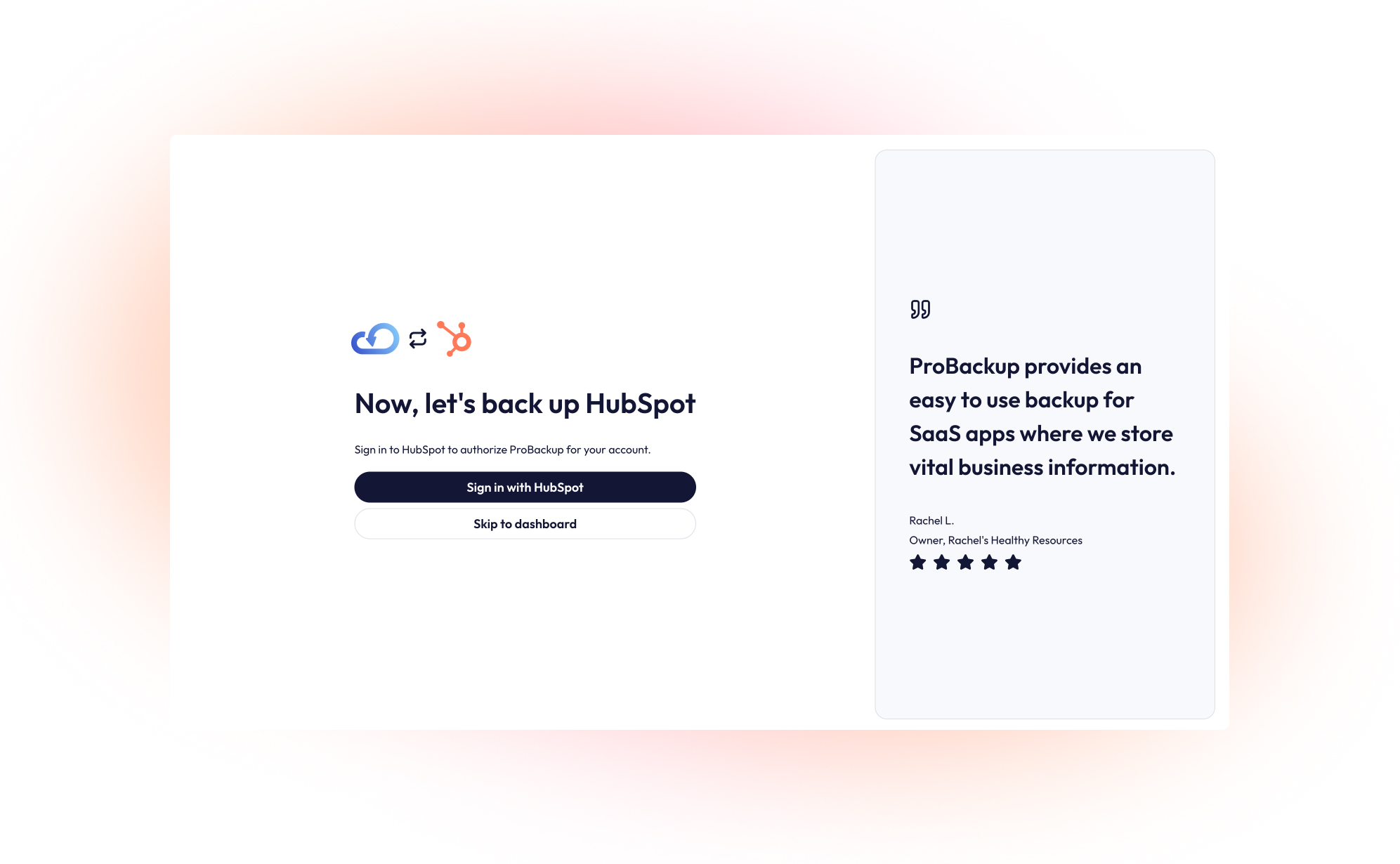
How to secure your HubSpot data: A step-by-step guide to backing up HubSpot

HubSpot is a leading customer platform for business of all sizes, covering all aspects to manage your CRM, marketing, sales, services, content management & operations. While you rightfully trust cloud apps like HubSpot to be secure and reliable, managing your business's critical data on any single platform opens the door to potential risks.
Using HubSpot to manage your CRM can expose your team to issues such as accidental data deletion from human error, malicious actions by disgruntled employees, or data loss due to technical glitches and downtime. Losing an important contacts, notes or deals can set your team back hours.
To gain peace of mind and protect your CRM, implementing an automated backup solution is essential. This guide will walk you through setting up a daily, automated backup for your HubSpot account using ProBackup.
Part 1: Create a ProBackup Account
Getting started is easy and comes with a 7-day free trial.
- Visit the ProBackup for HubSpot page by navigating to https://www.probackup.io/backup/hubSpot
- Click on the Start free 7 day trial button.
- Select HubSpot as the app you would like to back up and click Continue
- Fill in your email, first name, and last name, then click Continue.

- Verify your email address by following the instructions sent to your inbox.
Part 2: Connect HubSpot and Start Your First Backup
Once your ProBackup account is created and verified, you can connect your HubSpot account.
We recommend that you sign in to the right HubSpot account first, before connecting your account.
- In ProBackup, click on Sign in with HubSpot. This will redirect you to HubSpot to authorize the connection. If you are not signed in to HubSpot, then you will have to sign in first.
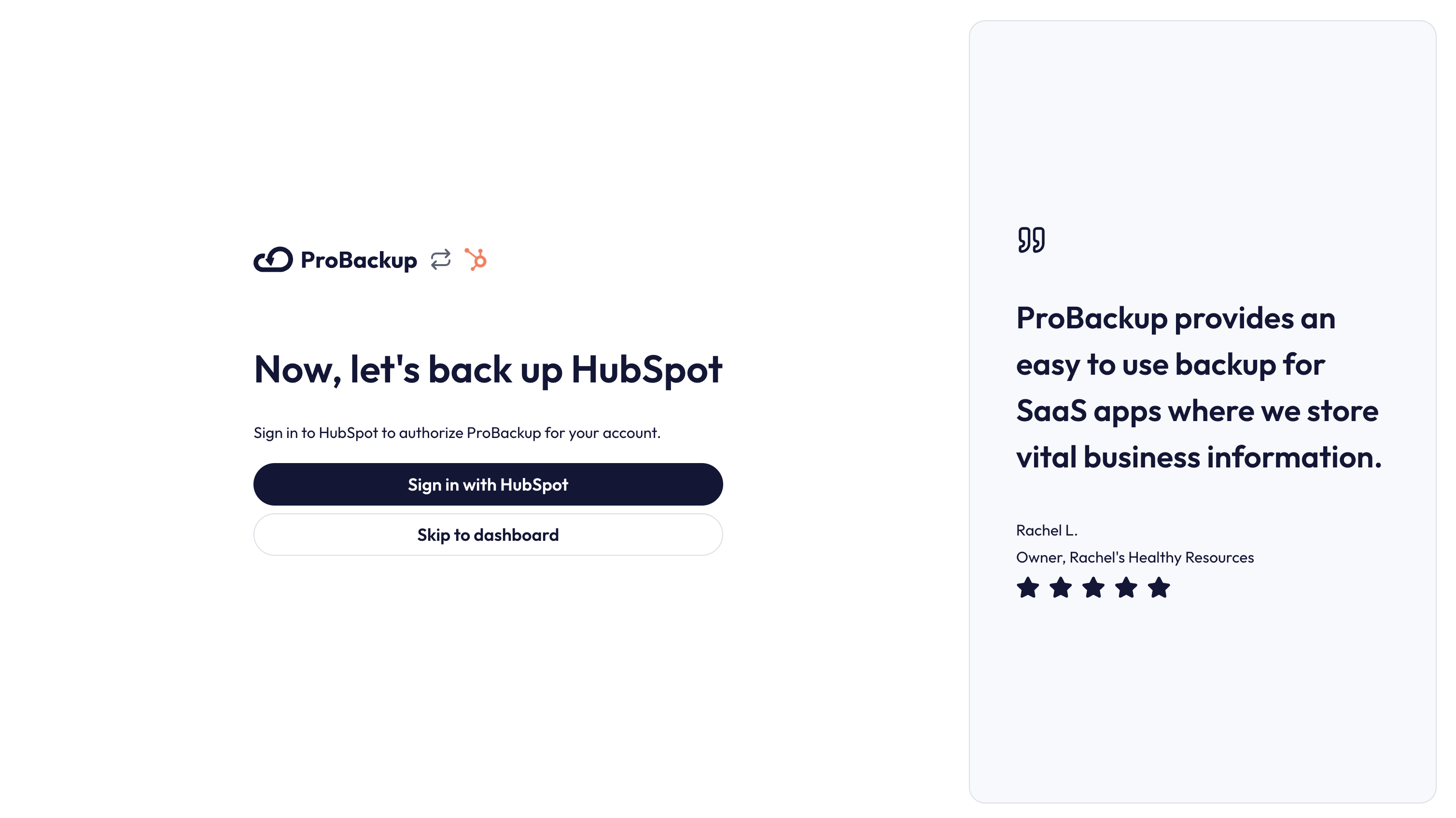
- On the HubSpot authorization page, select the account you would like to back up
- Click on Choose Account

- On the next step of the onboarding wizard, click on Start Backup to start your first backup.
What Happens Next?
After you confirm, the initial backup of your selected HubSpot will begin automatically. Our backup app will fetch all relevant data types such as contacts, organizations, deals, quotes and related information such as notes, tasks and emails. Depending on the size of your HubSpot account, the initial backup can take up to a few hours. You will be notified by email as soon as the first backup is complete.
Click on Go to HubSpot to view the data that is already backed up.
That’s it! Your HubSpot account is now protected with daily automated backups, ensuring your data is safe and easily restorable when you need it most.
.jpg)
Why Your Business Needs a Free CRM (and How HubSpot Makes it Effortless)

Running a SaaS business means managing a lot of moving parts: leads, partnerships, support tickets, onboarding emails. In our early days at ProBackup, we tried to stay on top of it all with spreadsheets and in-house built tools. It didn’t take long before things started slipping through the cracks.
We needed something simple and reliable to keep track of our customer relationships, without committing to a massive tool or long onboarding process. That’s when we found HubSpot’s Free CRM.
The Mess Before the CRM
If you’ve ever:
- Lost track of who followed up with which lead
- Had two team members contact the same prospect
- Missed a sales opportunity because someone forgot to reply
…you’re not alone. We’ve been there too.
The problem wasn’t our effort. It was our tools. Keeping everything in sync without a proper CRM was just not scalable.
Why We Chose HubSpot’s Free CRM
We didn’t want to spend weeks setting up a tool. HubSpot was quick to try, free to start, and did what we needed right out of the box. Here’s what stood out for us:
1. One Place for Everything
We imported our contacts, connected our inboxes, and instantly had a central view of who we were talking to, what we last discussed, and what needed to happen next.
2. Clear Visual Pipeline
The drag-and-drop board helped us finally see where our deals were. It was like Kanban for sales, which felt familiar and intuitive.
3. Built-In Productivity
We use the tasks, reminders, and email templates daily. It’s made it way easier to follow up without things falling through the cracks.
4. It Just Plays Nice
It connects with Gmail, Google Calendar, and the other tools we already use, so there’s no context switching or copy-pasting.
Getting Started Took Less Than 10 Minutes
- Created an account
- Imported a CSV of contacts
- Set up deal stages
- Added teammates
- Started logging emails and calls automatically
We’re still using the free plan, and it’s doing what we need.
Final Thought
CRMs can feel like overkill if you’re a small team, but trust us, waiting too long to get organized will cost you more. HubSpot’s Free CRM was the low-friction tool we needed to get our sales and support in order. If you’re juggling leads in your head or chasing conversations across inboxes, give it a try. No pressure, no pitch... just sharing what’s worked for us.
Click here to sign up for HubSpot’s Free CRM

ProBackup launches integration for Webflow

We are excited to announce that ProBackup now supports Webflow, our first-ever website builder integration! This marks an important milestone in our mission to become the one-stop backup solution for SMEs relying on SaaS applications.
What is Webflow?
Webflow is a powerful website-building platform that allows users to design, build, and launch websites visually, without the need for traditional coding. It combines the flexibility of custom development with the ease of a drag-and-drop editor.
Why Webflow?
Many SMEs, designers, and marketers rely on Webflow for its intuitive interface, robust customization options, and ability to create pixel-perfect, responsive websites. Since a large portion of our customers already use Webflow, adding backup support was a logical step in expanding our services. It’s a favorite among SMEs, designers, and marketers who need an intuitive yet powerful tool to build and manage their online presence. Since many of our customers already use Webflow, this integration was a natural next step.
What This Means for You
- Automated Backups for Webflow: Keep your Webflow projects safe with daily backups.
- Free for Existing Customers: If you're a paid user, you can now back up Webflow alongside your other SaaS apps at no additional cost.
- More Website Builder Support? Let us know if we should add more website apps!
How to Add Webflow to ProBackup
- Log in to your ProBackup account.
- Click the "+ New App" button.
- Select the Webflow app to start connecting and authorize ProBackup.
- Start automatic backups
More Integrations Coming Soon
Webflow is the first of a series of new updates. We are actively working on integrations for Figma and Canva, and we're also working on a complete revamp of the user interface. Stay tuned for more product updates.
Try our new Webflow integration today and keep your websites secure with ProBackup!

Why Backups Matter for SOC 2 and ISO 27001 Compliance
.png)
Imagine losing all your business data in an instant - customer records, project files, and important documents gone forever. It sounds like a nightmare, right? That’s why security standards like SOC 2 and ISO 27001 require businesses to have reliable backup systems in place. These rules help protect data from getting lost, stolen, or damaged. In this article, we’ll break down what these standards say about backups and how you can follow them easily.
What are SOC2 and ISO 27001?
SOC 2 and ISO 27001 are two widely recognized frameworks for information security and data protection. SOC 2 (Service Organization Control 2), created by the American Institute of Certified Public Accountants (AICPA), is a framework specifically designed for technology and cloud-based service providers. It evaluates a company’s controls around security, availability, processing integrity, confidentiality, and privacy.
ISO 27001 on the other hand is developed by the International Organization for Standardization (ISO) and is a globally accepted standard for establishing, implementing, maintaining, and continuously improving an Information Security Management System (ISMS). It focuses on risk management and best practices to protect sensitive data. Both frameworks aim to ensure that businesses safeguard customer data, mitigate security risks, and build trust with their clients and stakeholders. In general SOC 2 is more prevalent in the US while ISO 27001 is more popular in Europe.
What does SOC 2 say about backups?
SOC 2 is a security framework that helps businesses keep customer data safe. It focuses on five key areas: security, availability, processing integrity, confidentiality, and privacy. Here’s what it says about backups:
- Keep data available: You must have a backup system in place so you can restore your data if something goes wrong.
- Keep data safe: Backups should be encrypted to prevent hackers from accessing them.
- Control who Sees it: Only authorized people should have access to backup files.
- Check your backups: Regularly test your backups to make sure they work when needed.
- Plan for disasters: If an emergency happens, you need a strategy to recover your data quickly.
What does ISO 27001 say about backups?
ISO 27001 is an international standard for keeping business data secure. It is widely adopted because it provides a structured approach to managing security risks and is recognized globally as a benchmark for information security. Unlike SOC 2, which is primarily used in the U.S. and focuses on customer data protection, ISO 27001 takes a broader approach to managing security across an entire organization. It outlines key requirements for backup management:
- Have a aackup plan: Businesses must create, document, and test backup processes regularly.
- Keep backups secure: Backup data should be stored safely to prevent unauthorized access.
- Be ready for problems: If a cyberattack or system failure occurs, backups should help restore normal operations.
- Follow retention policies: Businesses should define how long they keep backups based on legal and operational needs.
How Can You Follow These Backup Rules?
There are different ways to back up your data, and the best method depends on your business needs. Here are three common approaches:
Manual Backups (Do-It-Yourself)
- Download data: Manually export important files and save them to your computer or an external hard drive.
- Use cloud storage: Store copies of your data in cloud services like Google Drive or Dropbox.
On-Premises Backup
- Use external hard drives: Copy files to an external hard drive or USB stick.
- Set up a local server: Store backup data on a secure, private network.
Cloud-Based Backup Solutions
- Automated backup services: Use tools like ProBackup to schedule automatic backups with encryption and easy restoration.
- Extra protection: Cloud-based backups are stored in multiple locations, ensuring data is safe even if one system fails.
Final Thoughts
Backups aren’t just a smart business practice - they’re required by security standards like SOC 2 and ISO 27001. Whether you choose manual exports, external hard drives, or a cloud-based service like ProBackup, having a solid backup plan keeps your business secure and compliant. Take action today to ensure your data is always protected.

The complete guide to deleting, restoring, and protecting data in ClickUp
.png)
ClickUp is an incredibly powerful productivity platform, but managing multiple spaces, lists and ClickUp docs can quickly become complex. Whether you are performing a routine workspace cleanup or panicking over a missing folder, understanding how deletion works is critical.
In our experience regarding SaaS data management, many users don’t realize the risks until it is too late. Human error, such as accidentally deleting the wrong list or changing a field configuration, is common and can set a team back hours or even days.
This guide will walk you through the hierarchy of deletion in ClickUp, the limitations of its native recovery tools, and how to ensure your data remains safe permanently.
Understanding the hierarchy: What can you delete?
Before hitting that trash icon, it is vital to understand the cascading effect of deletion in ClickUp. Deleting a high-level item removes everything contained within it.
You can delete nearly all content types, including:
- Spaces: Top-level project areas (deleting this deletes all folders, lists, and tasks inside).
- Folders: Collections of lists.
- Lists: Groups of related tasks.
- Tasks & Subtasks: The individual units of work.
- Docs: Collaborative documents.
- Attachments & Comments: Contextual data within tasks.
Best practice: Archive vs. delete
Expert Tip: We strongly recommend Archiving over deleting whenever possible.
- Archiving hides the item from your immediate view but preserves the data and history.
- Deleting will permanently delete the content from ClickUp's servers.
Only use delete when you are 100% certain the data is obsolete or if it was created in error.
How to archive or delete data in ClickUp
Tasks
- Open the specific task.
- Click the three dots (...) menu in the top right corner.
- Select Archive or Delete.
To archive multiple tasks at once, select the tasks in the list or table view and click on the Archive or Delete icon

Lists, folders, and spaces
Warning: This action will delete all child tasks inside the selected item.
- Locate the item in the left sidebar.
- Click the three dots (...) next to the name to open the list settings
- Select Archive or Delete.
- Confirm the action in the pop-up prompt.
Docs
- Open the Doc.
- Click the three dots menu in the top right.
- Select Archive or Delete
How to restore deleted data (natively)
If you catch a mistake early, ClickUp provides a safety net via the Trash feature. However, this is not a permanent backup.
To access the Trash:
- Click on your profile avatar (in the top right corner)
- Select Trash.
- Search for your item and click on the three dots (...) on the right
- Click Restore.
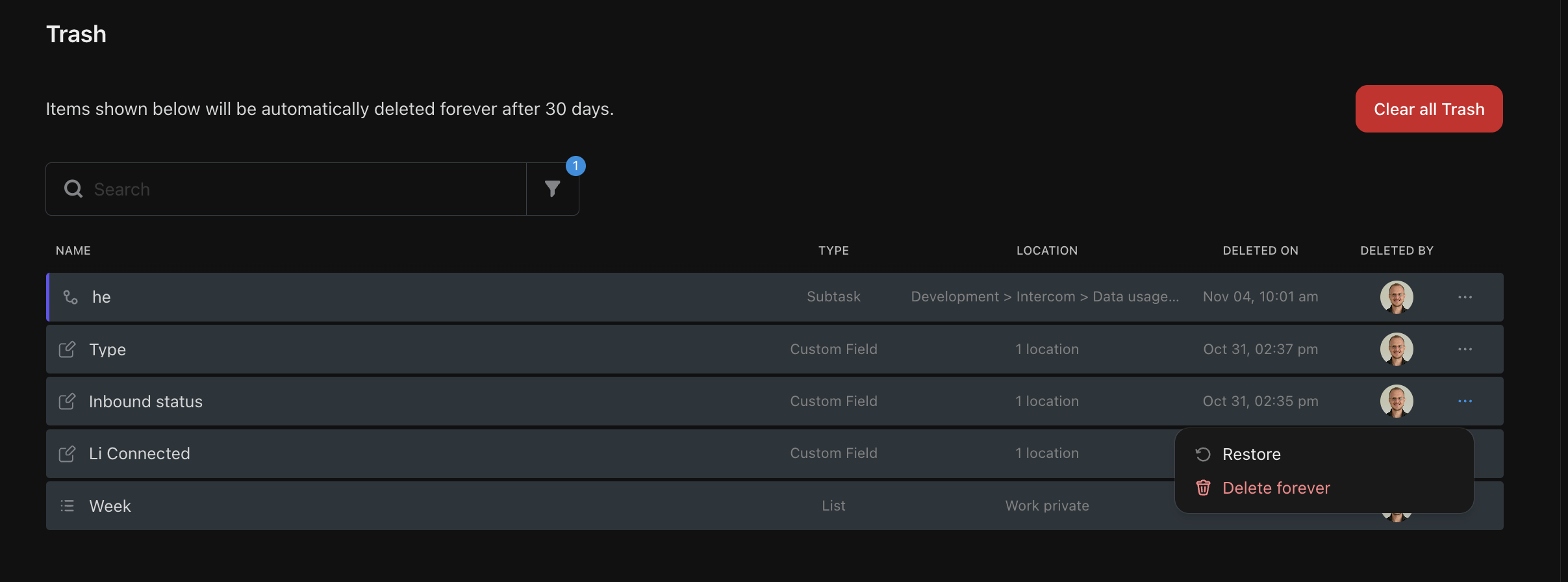
Crucial Constraints:
- The 30-Day Timer: Items in the trash are automatically purged after 30 days. Once purged, they cannot be recovered by ClickUp support.
- Permissions: Only Workspace admins can view and restore items deleted by other users.
The risks: What cannot be recovered?
The native trash functionality of ClickUp is useful to quickly recover deled data. However there are a few important cases where the trash option won't be enough:
- Granular Data: Not all data types can be restored via the trash bin: When you delete single comments, files or custom fields, they do not appear in the trash.
- Previous versions: Sometimes the list, task or field still available in the app, but you need to go back to a previous version of that item. ClickUp does not offer the option to look up and restore previous versions of your data. The most common cases for this are incorrect data imports or unwanted bulk updates by 3rd party integrations.
- Expired Trash: Anything deleted more than 30 days ago is gone forever.
Ensuring total data safety (beyond the trash can)
To satisfy compliance requirements or simply for peace of mind, relying solely on the Trash folder is rarely enough for professional teams.
Strategies to prevent data loss:
- Restrict Permissions: Limit who has "Delete" privileges in your workspace settings.
- Regular Audits: Review the Trash folder weekly to catch accidental deletions before the 30-day window closes.
- Third-Party Backups: Establish a redundancy plan.
Because ClickUp does not offer an internal "Time Machine" for your data, specialized solution providers like ProBackup have filled this gap. ProBackup provides daily, automated backups of all API-available data. Check out our How-to guide to learn how you can back up your ClickUp data with ProBackup.
Unlike the native Trash, a dedicated backup allows you to:
- Restore Granularly: Perform one-click restores of single records, comments, files and entire lists.
- Access Forever: Bypass the 30-day limit.
- Export Data: Option to sync your records and files directly to Google Drive for an accessible, readable fallback format like Google Sheets .
Summary
Deleting data in ClickUp is easy - perhaps too easy. While the native Trash feature offers a 30-day buffer for simple mistakes, it is not a substitute for a disaster recovery plan.
To maintain true data authority and security:
- Archive instead of delete.
- Audit your permissions regularly.
- Implement an automated backup solution if your ClickUp workspace holds critical business data.
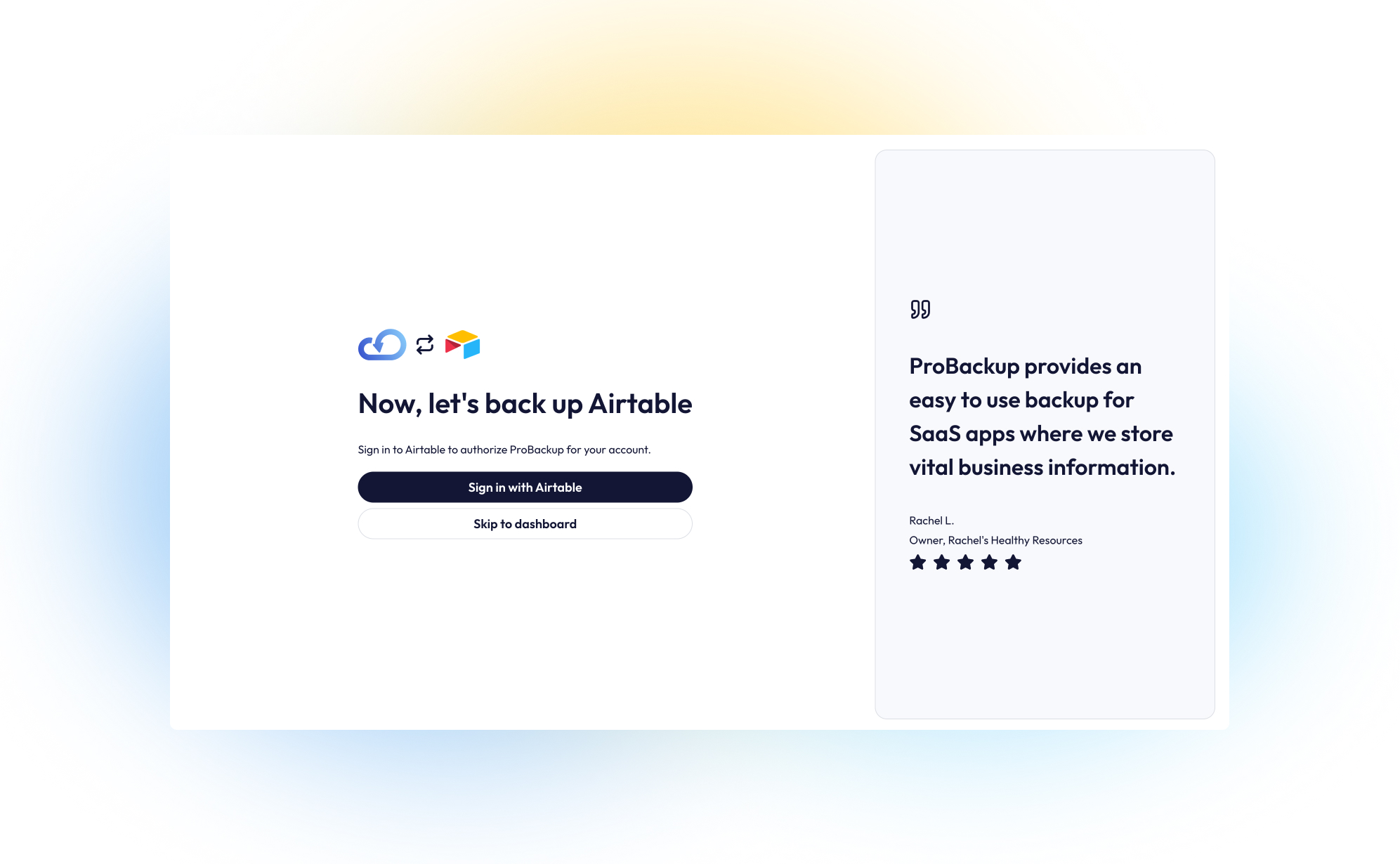
How to secure your Airtable bases: A step-by-step guide to back up Airtable

Airtable’s AI app platform offers a great way to build custom apps to accelerate your business operations. Your teams can move from idea to impact in minutes, turning data into custom apps, automations and AI even agents.
By combining the features of a spreadsheet and a database, it's a powerful platform that can organize huge amounts of data in one location. While you rightfully trust cloud apps like Airtable to be secure and reliable, managing all of your business's critical data on any single platform opens the door to potential risks.
Using Airtable to manage your data can expose your team to issues such as accidental data deletion from human error, malicious actions by disgruntled employees, or data loss due to technical glitches and downtime. Losing an important set or records or an entire table can set your business back hours, or even days.
To gain peace of mind and protect your bases, implementing an automated backup solution is essential. This guide will walk you through setting up a daily, automated backup for your Airtable account using ProBackup.
Part 1: Create a ProBackup Account
Getting started is easy and comes with a 7-day free trial.
- Visit the ProBackup for Airtable page by navigating to https://www.probackup.io/backup/airtable
- Click on the Start free 7 day trial button.
- Select Airtable as the app you would like to back up and click Continue
- Fill in your email, first name, and last name, then click Continue.
- Verify your email address by following the instructions sent to your inbox.
Part 2: Connect Airtable and Start Your First Backup
Once your ProBackup account is created and verified, you can connect your Airtable account.
We recommend that you sign in to the right Airtable account first, before connecting your account.
- In ProBackup, click on Sign in with Airtable. This will redirect you to Airtable to authorize ProBackup to the relevant workspaces. If you are not signed in to Airtable, then you will have to sign in first.

- On the Airtable authorization page, you can either click on Add all resources (to add all workspaces) or on Add a base to add specific bases to the backup scope.
- Once you have added the relevant resources, click on Grant Access
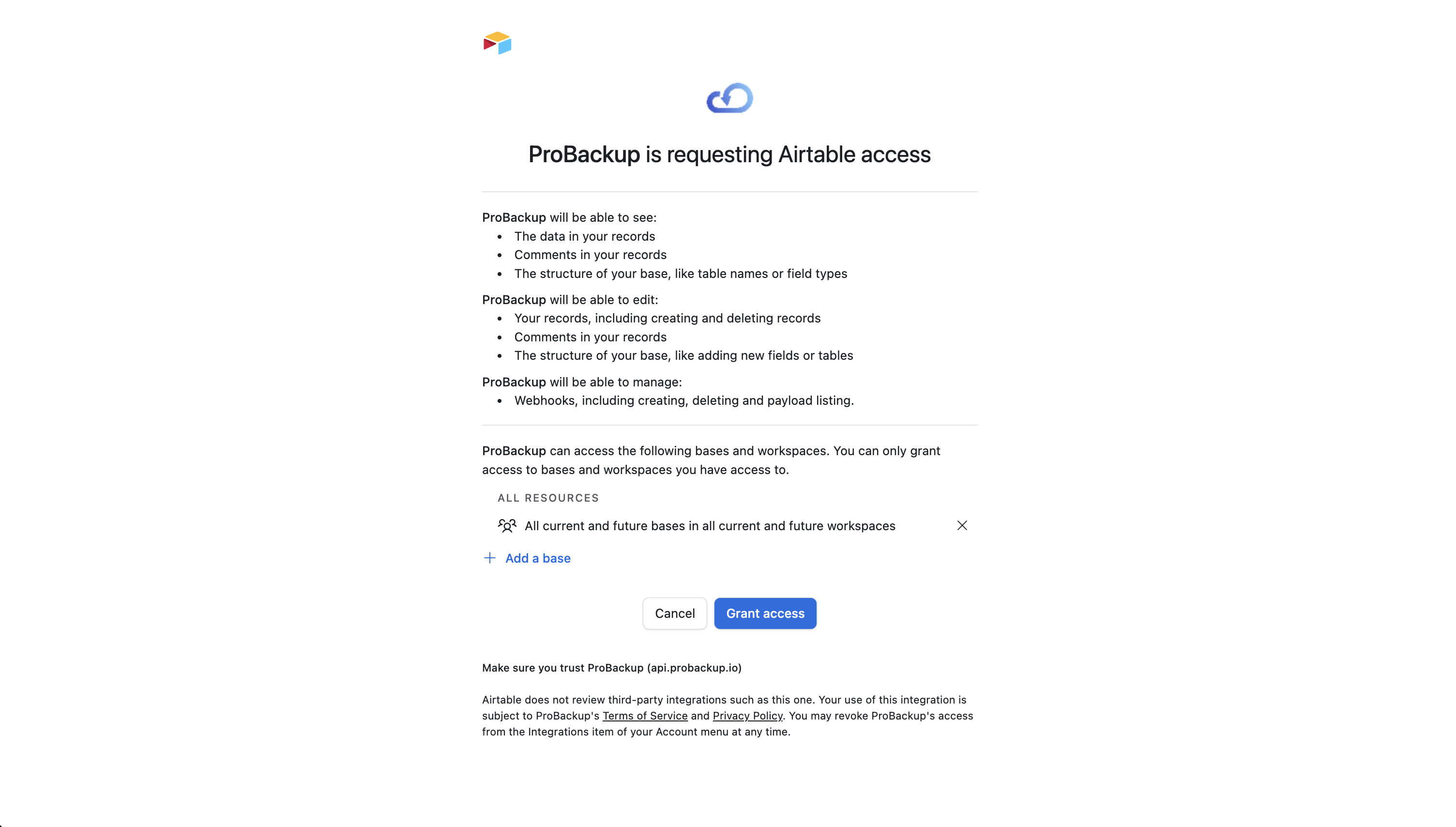
- On the next step of the onboarding wizard, click on Start Backup to start your first backup.
What Happens Next?
After you confirm on the next step, the initial backup of your selected Airtable resources will begin automatically. Our backup app will fetch all relevant data types such as records, comments, files and field configurations. Depending on the size of your Airtable account, the initial backup can take up to a few hours. You will be notified by email as soon as the first backup is complete.
In the meantime, you can click on Go to Airtable to view the tables that are already backed up.
That’s it! Your Airtable account is now protected with daily automated backups, ensuring your data is safe and easily restorable when you need it most.
Inviting other Airtable users
During the onboarding flow of Airtable, you choose which workspaces you want to back up. Once the initial backup is started, we can back up all data that your Airtable account has access to. This means that any private bases that you don’t have access to, will not be included in the scope of the backup. You can solve this by inviting other team members to your account.
- In ProBackup, go to Settings > Users.
- Click on Invite Team Member and confirm the popup.
Each invited team member needs to create their own ProBackup account and authorize ProBackup to their Airtable account. Once they’ve done this, then their selected resources will be added to the backup scope.
.jpg)
Master Data Management in Monday.com: Deleting, Restoring, and Protecting Your Work
.png)
Monday.com is the operating system for many businesses, managing everything from simple tasks to complex project portfolios. However, as workflows evolve, data cleanup is inevitable. Whether you are archiving old projects or deleting a column that is no longer needed, understanding the consequences of these actions is critical.
In this guide, we will break down the data deletion lifecycle in Monday.com, the specific limitations of its native recovery tools, and how to ensure your project history remains secure.
Understanding the hierarchy: What can you delete?
Before you remove data, it is essential to understand how Monday.com structures its data. Deletion flows downwards—removing a high-level container removes everything inside it.
- Workspaces: The highest level. Deleting this removes all boards, dashboards, and permissions within it.
- Boards: The project containers. Deleting a board removes all groups and items inside.
- Items (Tasks): The individual rows on a board.
- Columns: The structural data fields (Status, Date, Text, etc.).
- Files: Documents or images attached to items. Warning: These behave differently than other data types (see risks below).
How to delete data in Monday.com
Items (tasks)
- Select the item in the board
- In the popup at the bottom, click on Archive or Delete

Expert Tip: In 99% of cases, you should Archive an item rather than Delete.
- Archive: Removes the Item from your active view but preserves the data indefinitely. You can restore it at any time, years later.
- Delete: Moves the data to the Trash, starting a 30-day countdown to permanent destruction.
Only use "Delete" if you created an item by mistake or for compliance reasons (e.g., GDPR). For everything else, Archive is the safer choice.
Columns
Warning: Deleting a column deletes that data point for every single item on the board.
- Click the three dots next to the column name.
- Select Delete (last option).
Boards
- Click the three dots next to the board name in the sidebar.
- Select Archive or Delete.
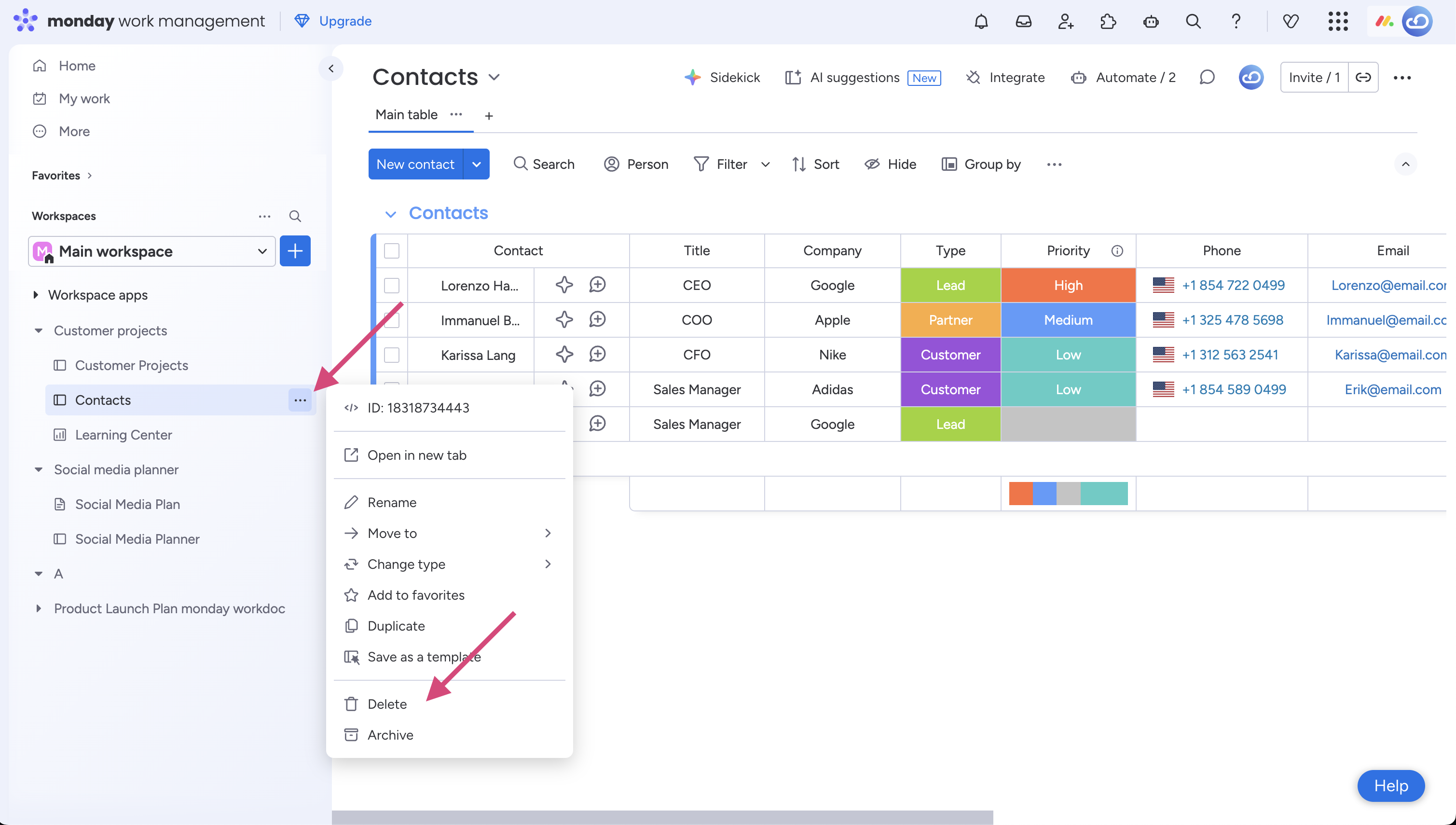
Workspaces
- Use the left side pane to navigate to the right workspace
- Next to Workspaces, click on the three dots
- Select Delete workspace.

How to restore deleted data
If you have archived or deleted data, Monday.com provides an easy way to recover this data.
- In the left side pane, click on the three dots next to Workspaces
- Select View archive/trash, then Archive or Trash
- Search the Item: You will see a list of deleted items, boards, and columns. You can also filter on the data type or use the search bar
- Click Restore: The item will return to its original location.
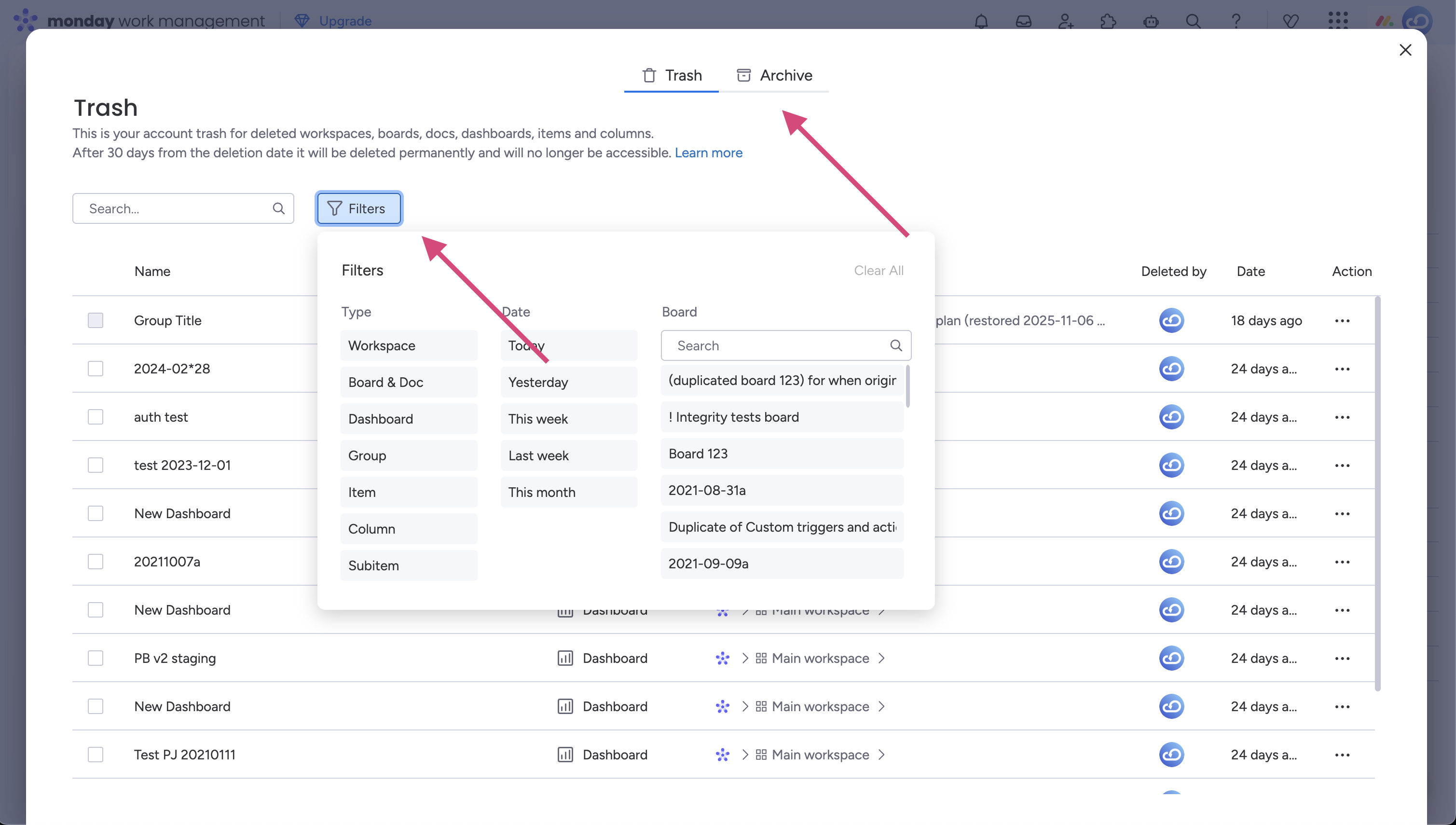
The "Workspace Trap":
There is a specific nuance regarding Workspaces that trips up many users. If you restore a deleted Workspace, it typically restores an empty shell. You must often restore the Workspace first, and then go back into the Trash to individually restore the Boards that used to be inside it.
The Risks: What cannot be recovered?
Monday.com’s native safety nets have holes that can lead to permanent data loss due to human error of glitches.
- Granular Data: Not all data types can be restored via the archive or trash: When you delete single comments or files, they do not appear in the trash.
- Previous versions: In most cases, the board, item or column is still available in the app, but you need to go back to a previous version. monday.com does not offer the option to look up and restore previous versions of your data. The most common cases for this are incorrect data imports or unwanted bulk updates by 3rd party integrations.
- Expired Trash: Anything deleted more than 30 days ago is gone forever.
Ensuring total data safety with ProBackup
To satisfy compliance requirements or simply for peace of mind, relying solely on monday.com is is rarely enough for professional teams.
Strategies to prevent data loss:
- Restrict Permissions: Limit who has "Delete" privileges in your workspace settings.
- Regular Audits: Review the Archive/Trash for each workspace weekly to catch accidental deletions
- Third-Party Backups: Establish a redundancy plan.
Because monday.com does not offer an internal "Time Machine" for your data, specialized solution providers like ProBackup have filled this gap. ProBackup provides daily, automated backups of all API-available data. Check out our How-to guide to learn how you can back up your monday.com data with ProBackup.
Unlike the native Trash, a dedicated backup allows you to:
- Restore Granularly: Perform one-click restores of previous versions of your items and boards.
- Access Forever: Bypass the 30-day limit.
- Export Data: Option to sync your records and files directly to Google Drive for an accessible, readable fallback format like Google Sheets .
Summary
Managing data in Monday.com requires discipline. The native "Archive/Trash" feature is a helpful undo button for recent mistakes, but it is not a backup strategy.
To keep your projects safe:
- Archive old items; rarely delete it.
- Be careful with files and columns, as they are harder to recover.
- Implement a third-party backup if your team relies on Monday.com for critical revenue-generating workflows.
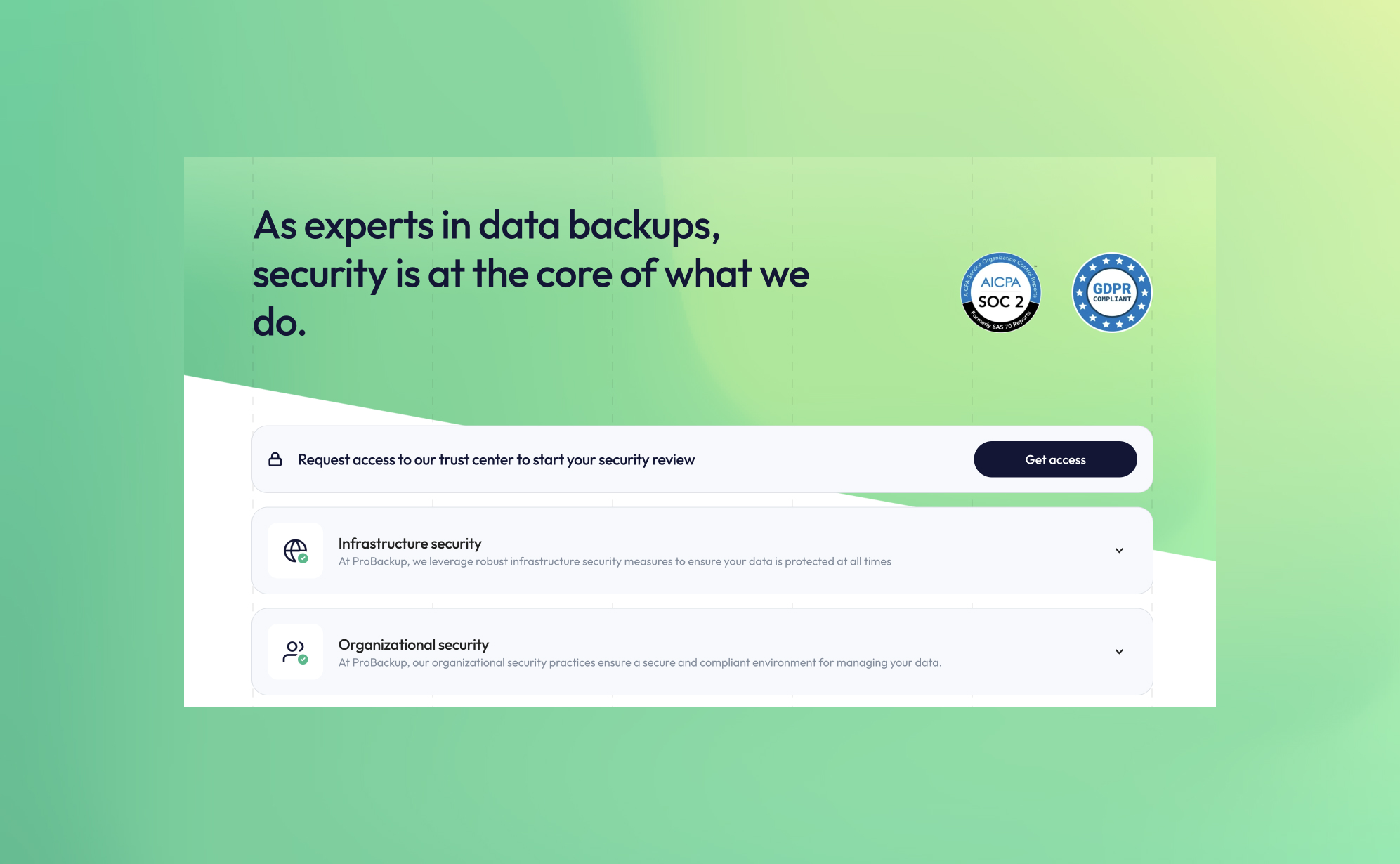
ProBackup is now officially SOC 2 Type 2 Compliant

At ProBackup, security and compliance are at the core of our mission. We are thrilled to announce that we are now officially SOC 2 Type 2 compliant! This achievement reflects our ongoing commitment to providing a secure and reliable cloud backup and restore service for businesses using Asana, Airtable, ClickUp, Trello, and other productivity and CRM apps.
What is SOC 2 Type 2 compliance?
SOC 2 (System and Organization Controls 2) is a rigorous security standard designed for SaaS companies handling sensitive customer data. It evaluates a company’s ability to manage and safeguard data based on five key trust principles:
- Security – Protecting systems and data from unauthorized access.
- Availability – Ensuring services are operational and accessible.
- Processing Integrity – Guaranteeing accurate and reliable data processing.
- Confidentiality – Keeping sensitive business information secure.
- Privacy – Handling personal data responsibly and in compliance with regulations.
SOC 2 Type 2 certification goes beyond the initial audit (Type 1) by demonstrating continuous adherence to security controls over an extended period.
Enhanced security resources now available
To further enhance transparency and trust, we have updated our security page (https://www.probackup.io/data-security) with detailed insights into our product and infrastructure security. Here’s what you’ll find:
- SOC 2 Report – Download the latest report verifying our security compliance.
- Penetration Test Report – Access our most recent third-party security assessment.
- Data Processing Addendum (DPA) – Review our data protection commitments.
Additionally, users can now request access to our renewed Trust Center, where they can explore all policies and controls related to SOC 2 compliance. This provides deeper insights into our security framework and compliance measures.
Why SOC 2 compliance matters for cloud backups
For businesses relying on cloud backups, ensuring that backup data is secure, monitored, and compliant is critical. Achieving SOC 2 Type 2 compliance means our users can trust that ProBackup meets industry-leading standards for safeguarding their data.
By choosing ProBackup, you gain more than just an automated backup solution—you get a partner dedicated to data security, compliance, and reliability.
Stay secure with ProBackup
We are proud to offer SOC 2 Type 2 compliant cloud backup services, giving our users peace of mind when it comes to data protection and disaster recovery. Explore our updated security page today and download our latest reports!
.jpg)
The ultimate guide to Asana data management: Deletion, recovery and restoration
.png)
Keeping your Asana workspace organized requires more than just checking off tasks: it involves rigorous data hygiene. Whether you are clearing out completed projects to reduce clutter or frantically trying to recover a task deleted by mistake, understanding Asana’s data lifecycle is critical.
In this guide, we will explore the technical steps to delete and restore data in Asana, while highlighting the critical limitations you need to know to maintain a secure workspace.
The hierarchy of deletion: What can you remove?
Before you begin cleaning up, it is essential to understand how different data types behave when deleted. Asana treats deletion differently depending on the object:
- Tasks: When deleted, these move to a "Deleted Items" state. They hold a 30-day retention policy before permanent erasure.
- Projects: Owners and admins can delete entire projects. This is a high-risk action as it removes all associated tasks, comments, and attachments.
- Safety mechanism: The specific user who deletes the project receives a recovery email link.
- Sections and Columns: You can only delete these if a project has at least two.
- Flow: Asana forces you to decide the fate of the tasks inside (delete them or move them).
- Attachments: File removal is straightforward but generally practically irreversible via native tools once the parent task is gone.
- Comments: Critical Warning. Unlike tasks, user comments cannot be restored once deleted. If you delete a comment, it is permanently lost immediately.
How to delete data in Asana
Tasks
- Open the specific task pane.
- Click the three-dot menu (...) in the top right corner.
- Select Delete task.
- Confirm the prompt.
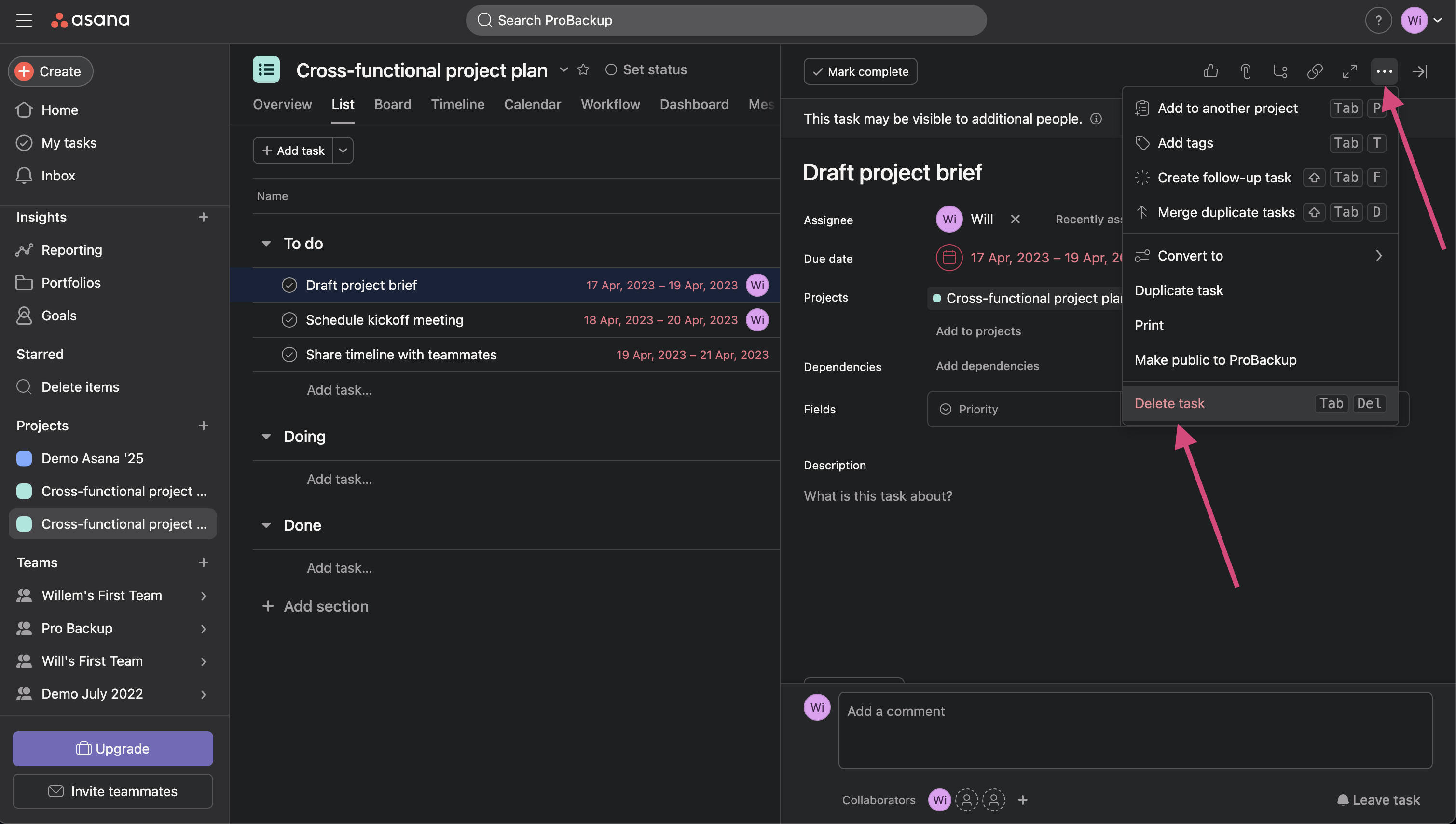
Projects
- Navigate to the project to be removed.
- Click the dropdown arrow next to the Project Name header.
- Select Delete project.
- Confirm your choice.
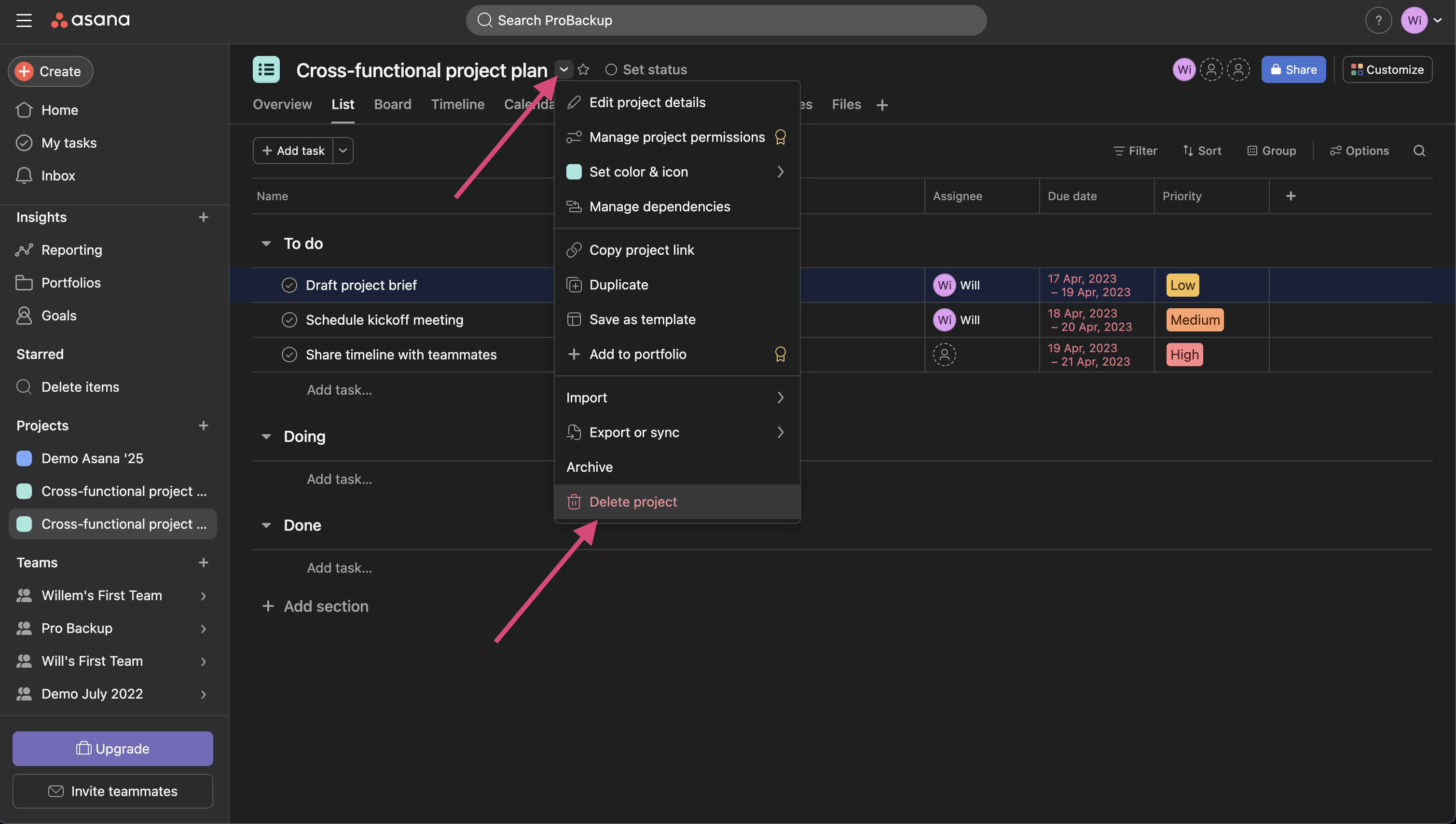
Custom fields
- Click the dropdown arrow next to the field.
- Select Delete field from project.
- Decision Point: Choose to either delete the tasks inside or move them to an adjacent section.
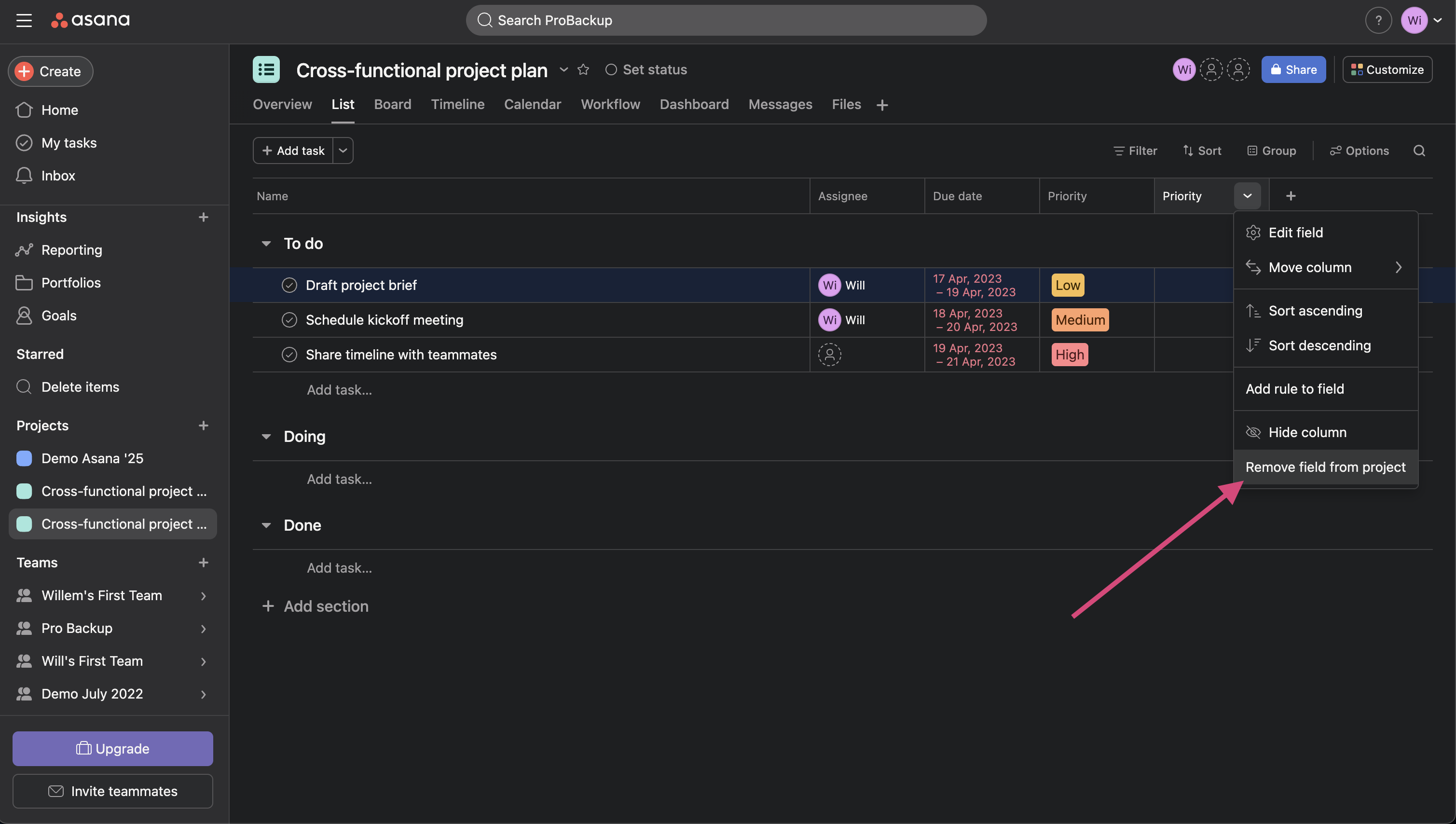
Immediate recovery (the "oops" moment)
Asana provides two "soft" safety nets for immediate errors:
- The Toast Notification: Immediately after deletion, a notification appears at the bottom left of your screen. You have approximately 15 seconds to click Undo.
- The Undelete Button: If you delete a task but remain on the task pane, an Undelete button will remain visible in the details pane until you navigate away.
Advanced recovery: finding lost data
If the immediate undo window has passed, you must use the Advanced Search feature to locate items within the 30-day grace period.
How to restore deleted tasks
- Click the Search bar at the top of the workspace.
- Select Advanced Search (the filter icon).
- In the Deleted field (often under "More" > "Status"), select Deleted.
- Pro Tip: Filter by "Assigned To" or "Date Modified" to narrow down the results.
- Click Search.
- Locate the task and click Restore in the task pane.
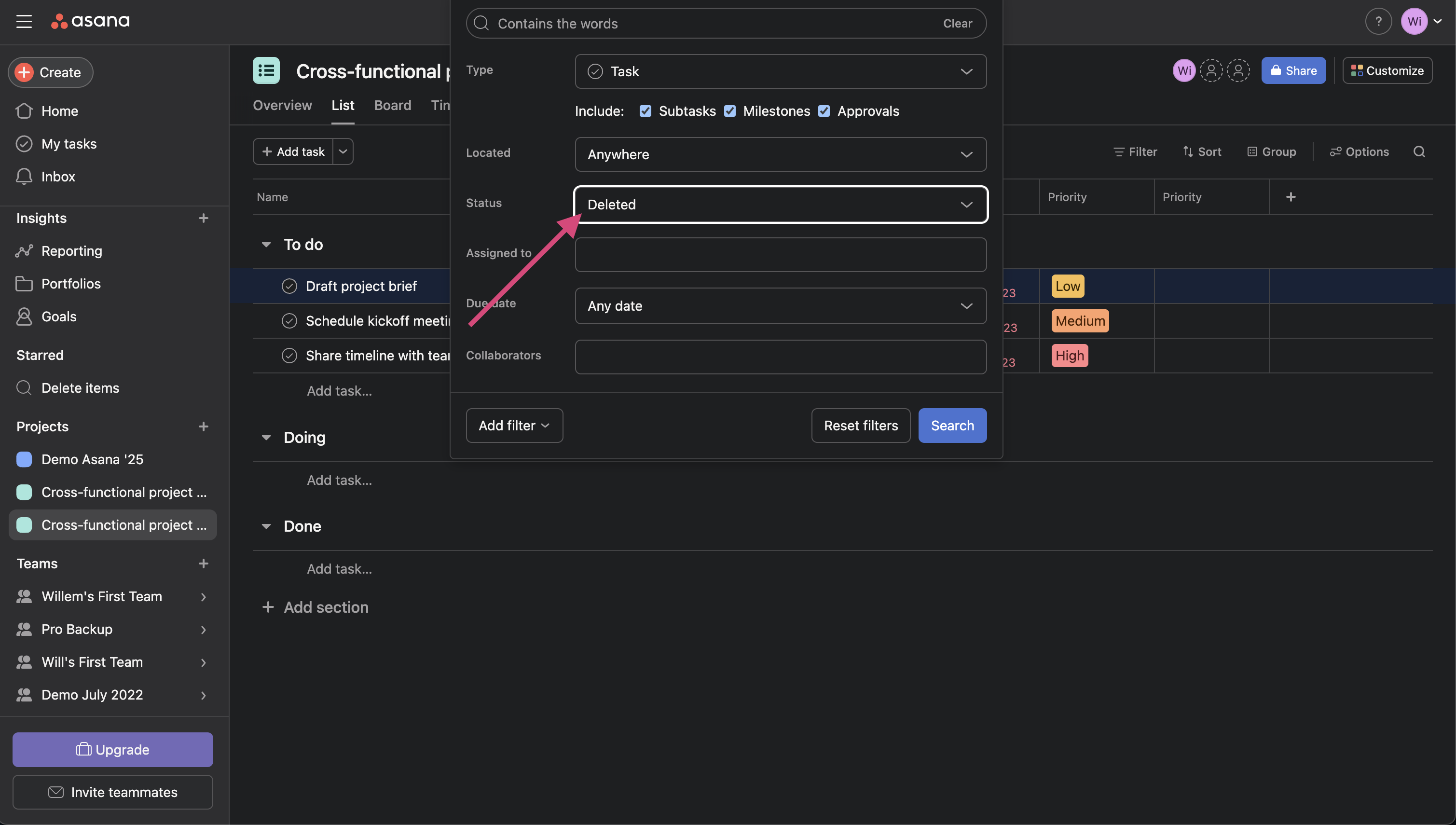
How to restore deleted projects
Project restoration is more restrictive.
- Check your Email: The person who deleted the project receives an automated email with a unique Recovery Link. This is the fastest method.
- Search Method: Similar to tasks, use Advanced Search filters to look for "Deleted" items specifically filtered by "Projects."
The Risks: What cannot be recovered?
The native functionality of Asana is useful to quickly recover deled data. However there are a few important cases where the trash option won't be enough:
- Granular Data: In the search bar you can only search for tasks, subtasks, milestones and approvals. If you delete comments files or custom fields, they do not appear in the trash.
- Previous versions: Sometimes the task, project or field are still available in the app, but you need to go back to a previous version of that item. Asana does not offer the option to look up and restore previous versions of your data. The most common cases for this are incorrect data imports or unwanted bulk updates by 3rd party integrations.
- Expired Trash: Anything deleted more than 30 days ago is gone forever.
Best practices for data safety
To satisfy compliance requirements or simply for peace of mind, relying solely on the app's restore functionality is rarely enough for professional teams.
Strategies to prevent data loss:
- Restrict Permissions: Limit who has "Delete" privileges in your workspace settings.
- Regular Audits: Review the deleted tasks weekly to catch accidental deletions before the 30-day window closes.
- Third-Party Backups: Establish a redundancy plan.
Because Asana does not offer an internal "Time Machine" for your data, specialized solution providers like ProBackup have filled this gap. ProBackup provides daily, automated backups of all API-available data. Check out our How-to guide to learn how you can back up your Asana data with ProBackup.
Unlike the native Trash, a dedicated backup allows you to:
- Restore Granularly: Perform one-click restores of single records, comments, files and entire lists.
- Access Forever: Bypass the 30-day limit.
- Export Data: Option to sync your records and files directly to Google Drive for an accessible, readable fallback format like Google Sheets .
Final thoughts
Deleting data in Asana is easy - perhaps too easy. While the native search functionality offers a 30-day buffer for simple mistakes, it is not a substitute for a disaster recovery plan.
To maintain true data authority and security:
- Archive instead of delete.
- Audit your permissions regularly.
- Implement an automated backup solution if your Asana workspace holds critical business data.
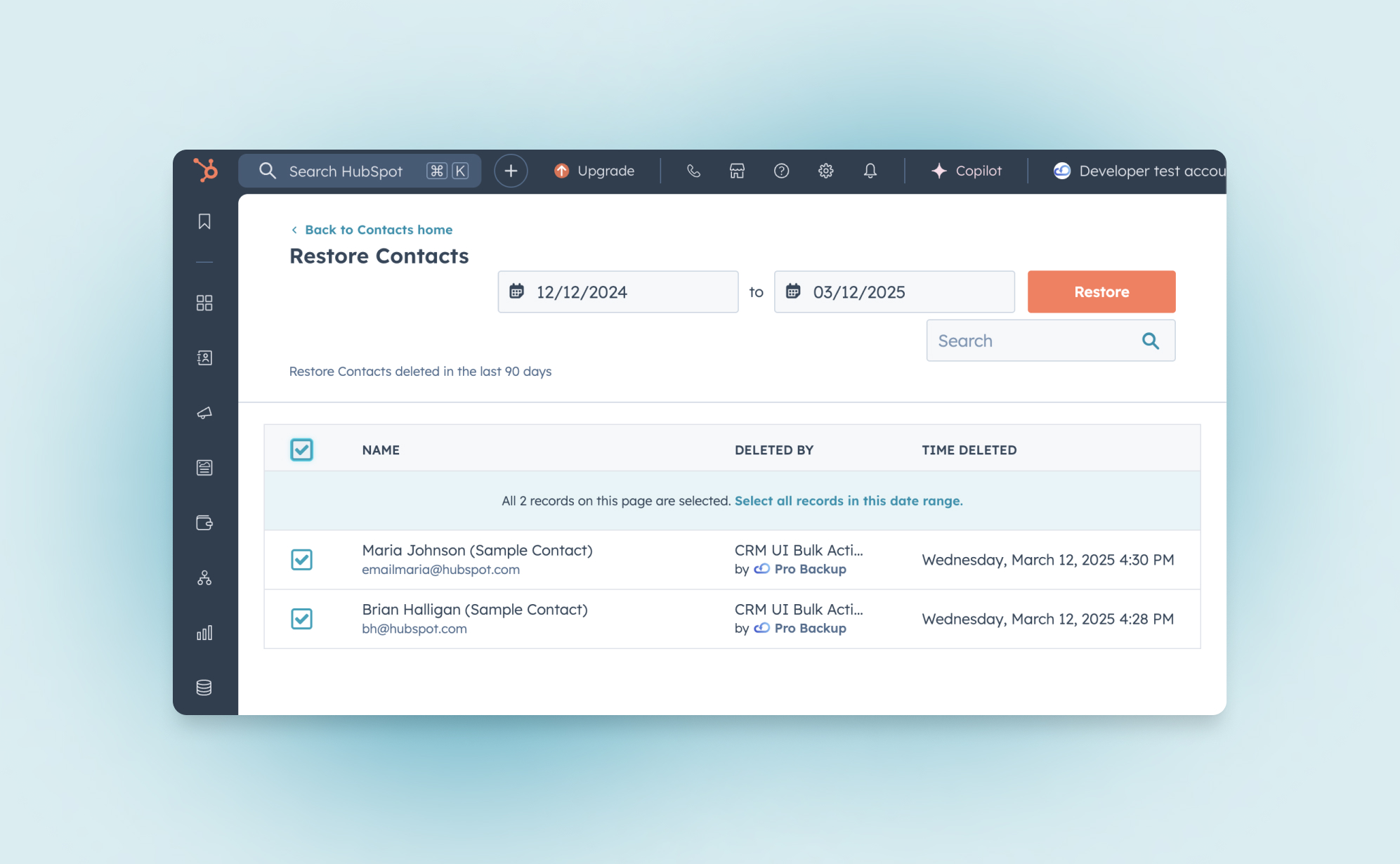
Maximum data integrity: How to delete, restore, and protect data in HubSpot
.png)
Keeping your HubSpot CRM organized is essential for maintaining data integrity and sales efficiency. However, the line between a clean database and a data disaster is often just one click away. Whether you are decluttering outdated leads for GDPR compliance or panicking over a lost deal pipeline, understanding HubSpot’s data lifecycle is critical.
In this guide, we will navigate the hierarchy of deletion, the limitations of native recovery, and how to ensure your CRM remains bulletproof.
Understanding the data: What can you delete?
HubSpot allows you to delete a wide variety of data types. It is important to understand that deleting a core object (like a contact) often removes associated interactions.
You can delete:
- CRM Objects: Contacts, Companies, Deals, Tickets, and Custom Objects.
- Content & Sales Assets: Products, Quotes, and Emails.
- Automation: Workflows (automation rules and sequences).
- Interactions: Calls, notes, tasks, and logged activities.
- User Accounts: Removing team members who no longer need access.
Best practice: Archive vs. Delete
Expert Advice: Before you delete, consider if you actually need to destroy the data or simply hide it.
- Deletion should be reserved for duplicate data, junk leads, or GDPR compliance requests (where data must be permanently removed).
- Archiving (Soft Deletion): For old leads or lost deals, use a custom property (e.g., "Status: Archived") or a "Suppression List." This keeps the historical data for reporting and future reactivation without cluttering your daily views.
How to delete data in HubSpot
HubSpot offers two types of deletions: Restorable Delete (moves to the recycle bin) and Permanent Delete (irreversible, used for GDPR).
Deleting individual records
1. Navigate to the relevant object (e.g., Contacts or Deals).
2. Click on the specific record name.
3. In the left panel, click the Actions dropdown > Delete.

4. Select Restoreable delete (recommended) or Permanent delete.

5. Confirm by clicking Delete [record].
Deleting multiple decords
1. Navigate to the object index page (e.g. Contacts).
2. Select the checkboxes next to the records
3. Click Delete in the top header row.

4. Enter the number of records to confirm the deletion.
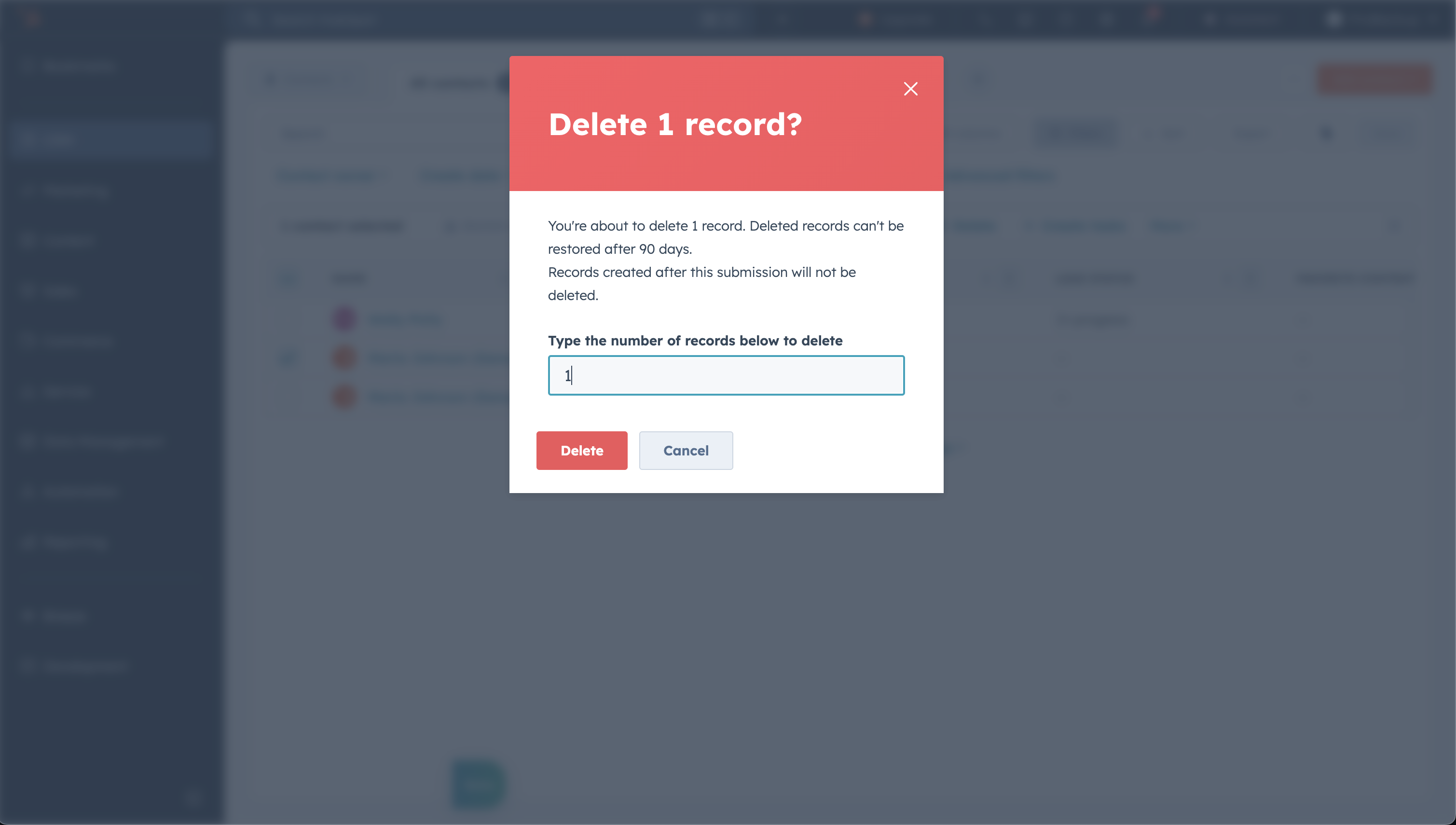
Automated deletion (Pro & Enterprise only)
For advanced users, you can automate hygiene.
- Go to Automations > Workflows.
- Set enrollment triggers (e.g., "Last Activity Date is more than 3 years ago").
- Add Action: Delete Contact.
- Warning: Use this with extreme caution. Automated deletion is the fastest way to lose data if a trigger is configured incorrectly.
How to Restore Deleted Data in HubSpot
HubSpot provides a Recycle Bin that acts as a safety net for 90 days.
Restoring CRM Records
- Go to the index page of the object (e.g., Contacts).
- Click the Actions dropdown in the top-right corner.
- Select Restore records.
- Select the records from the list and click Restore.
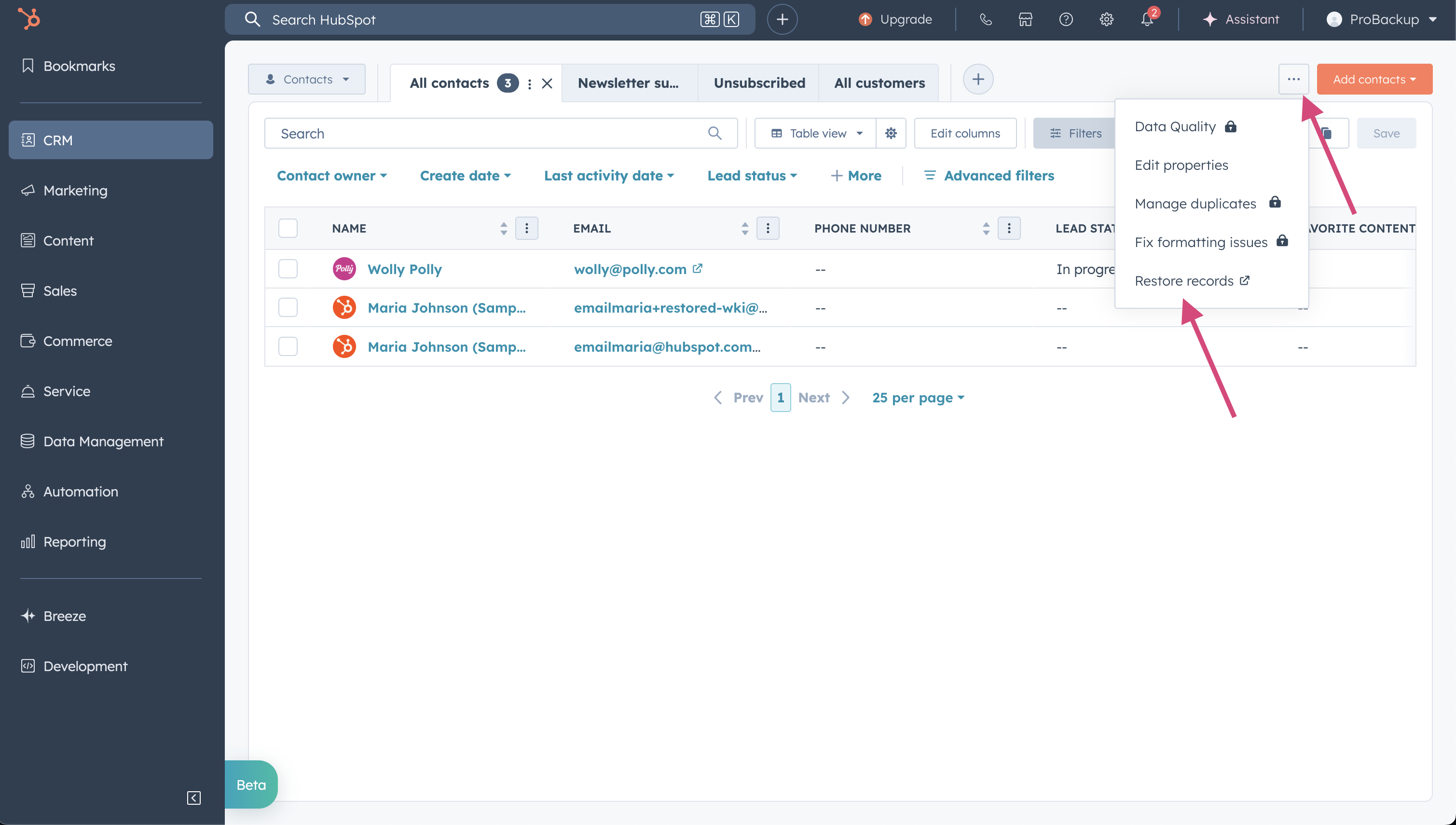
Restoring Deleted Activities (Tasks/Notes)
If a sales rep accidentally deletes a critical note or call log:
- Navigate to the record where the activity existed.
- In the activity timeline, filter or look for the "Actions" menu.
- Select Restore Activity.
- Use the date filter to find the specific engagement and restore it.
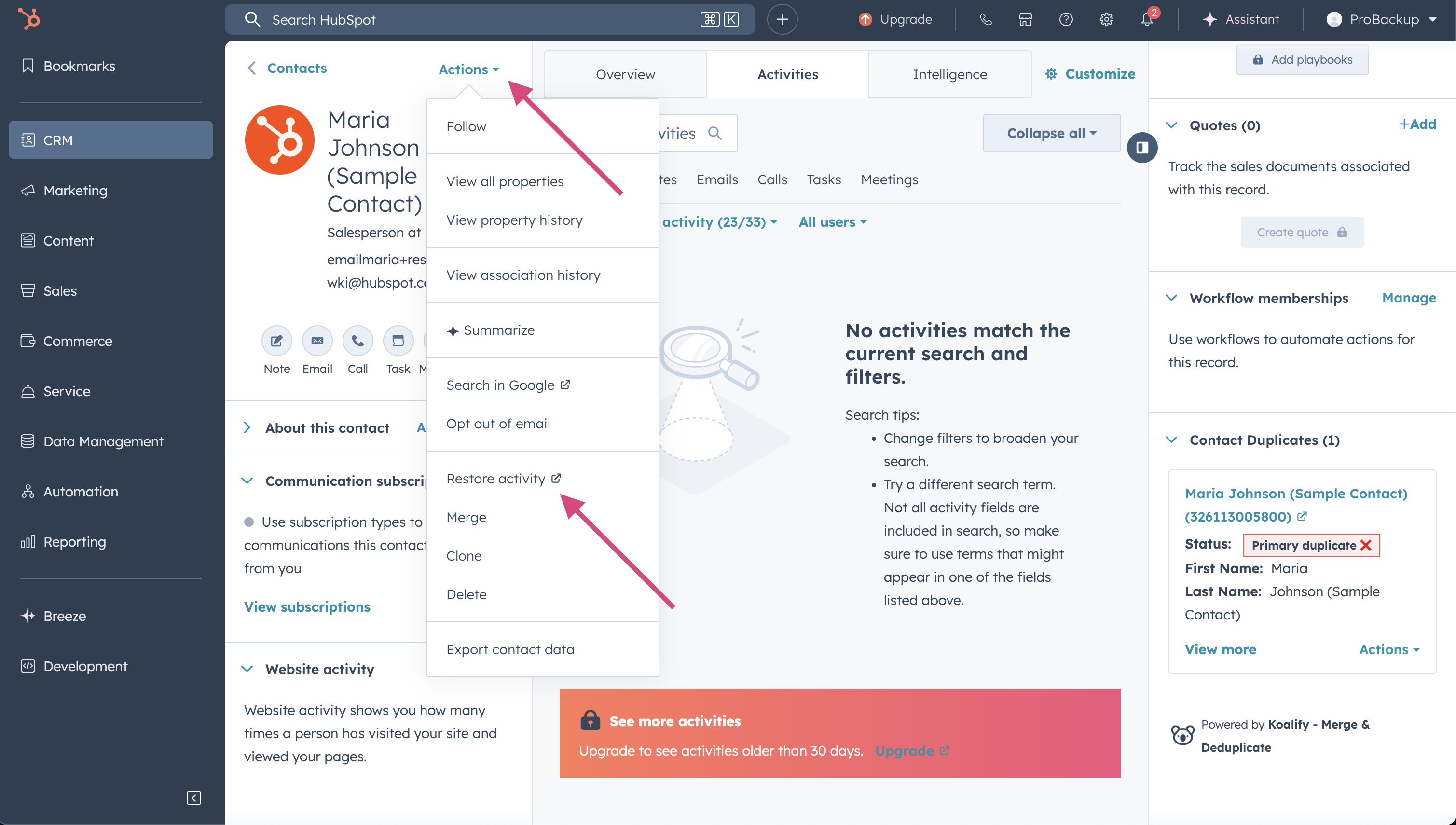
Restoring Workflows
If a workflow is deleted, you have a limited recovery option:
- Navigate to Automations > Workflows.
- Click the Deleted tab.
- Hover over the workflow and click Clone.
- Crucial Limitation: This restores the structure of the workflow, but it does not recover the enrollment history or data. The contextual history is lost.
The Risks: What cannot be recovered?
HubSpot's native safety nets have holes that can lead to permanent data loss due to human error of glitches.
- Previous versions: In most cases, the contact, note or deal is still available in the app, but you need to go back to a previous version. HubSpot does not offer the option to look up and restore previous versions of your data. The most common cases for this are incorrect data imports or unwanted bulk updates by 3rd party integrations.
- Expired Trash: Anything deleted more than 90 days ago is gone forever.
Ensuring total data safety with ProBackup
To satisfy compliance requirements or simply for peace of mind, relying solely on the restore functionality is rarely enough for professional teams.
Strategies to prevent data loss:
- Restrict Permissions: Limit who has "Delete" privileges in your account settings.
- Regular Audits: Review the Trash folders weekly for your key data types weekly to catch accidental deletions before the 90-day window closes.
- Third-Party Backups: Establish a redundancy plan.
Because HubSpot ClickUp does not offer an internal "Time Machine" for your data, specialized solution providers like ProBackup have filled this gap. ProBackup provides daily, automated backups of all API-available data. Check out our How-to guide to learn how you can back up your HubSpot data with ProBackup.
Unlike the native Trash, a dedicated backup allows you to:
- Restore Granularly: Perform one-click restores of single records, comments, files and entire lists.
- Access Forever: Bypass the 30-day limit.
- Export Data: Option to sync your records and files directly to Google Drive for an accessible, readable fallback format like Google Sheets .
Summary
HubSpot’s native recovery tools are excellent for day-to-day management, but they assume that deletions are either small mistakes caught quickly or intentional permanent actions.
To manage your CRM with true authority:
- Archive whenever possible.
- Audit your user permissions to prevent authorized deletions.
- Backup your data externally. If you want to protect against malicious users, glitches, or human error beyond the 90-day window, a third-party backup is your best insurance policy .
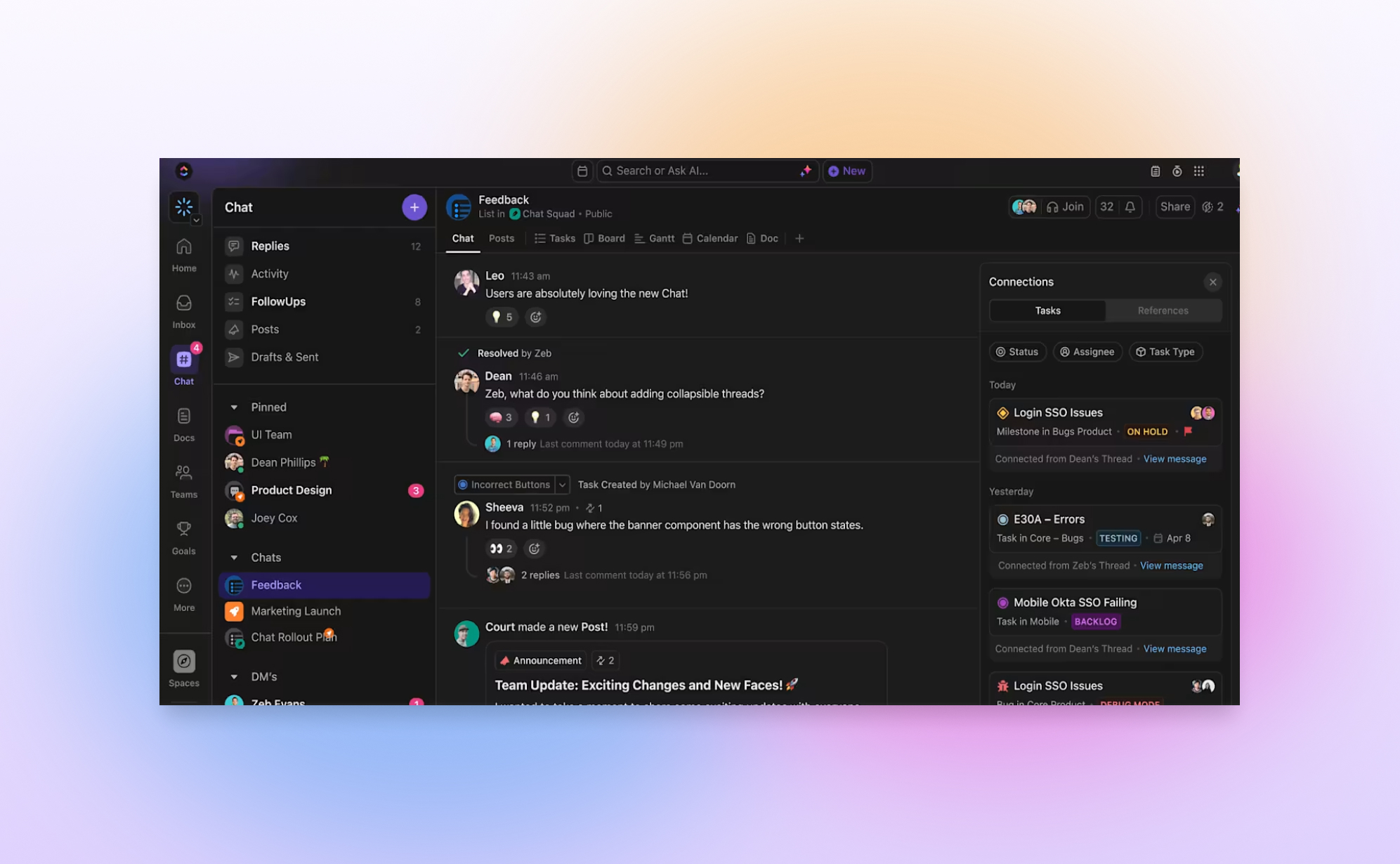
ClickUp Chat: How does it compare to Slack and other productivity apps

ClickUp aims to be the "one app to replace them all". It offers a broad range of project management features such as task managent, time tracking, goals and since recently it has also launched ClickUp Chat. ClickUp Chat lets you send messages to your team members without leaving the app. In this article, we’ll explain what ClickUp Chat is, how to use it, and how it compares to Slack and other tools.
What is ClickUp Chat?
ClickUp Chat is a built-in chat feature in ClickUp. It lets you talk to your team without needing another app like Slack. You can send messages, share files, and even create tasks straight from your conversation. This makes it easier to keep track of discussions and get work done in one place.
How to Use ClickUp Chat
ClickUp Chat is super easy to use. You can:
- Open a chat view to talk with your team.
- Use @mentions to get someone’s attention.
- Share links and files.
- Turn messages into tasks with one click.
- React to messages with emojis.
Is ClickUp Chat Free?
Yes! ClickUp Chat is included in all paid plans and even in the Free Forever plan. Unlike Slack, which deletes old messages after 90 days on the free plan, ClickUp keeps all your messages.
ClickUp Chat vs. Slack: What’s the Difference?
Slack is a great chat tool with advanced features, but ClickUp Chat is better if you want to keep your messages connected to your tasks. A big plus of ClickUp chat is that it keeps all chat messages, even if you're using the free plan. Slack on the other hand deletes messages after 90 days on the free version. Here's a comparison of some of the key features:
Can share files?
- ClickUp: ✅ Yes
- Slack: ✅ Yes
Has an advanced text editor (e.g. quotes, code blocks, etc)
- ClickUp: ✅ Yes
- Slack: ✅ Yes
Allows to have threads within a channel?
- ClickUp: ✅ Yes
- Slack: ✅ Yes
Works with task management?
- ClickUp: ✅ Yes
- Slack: ❌ No
Do old messages remain available?
- ClickUp: ✅ Yes, all messages are kept
- Slack: ❌ No, messages are deleted after 90 days
Doesn't require a separate app & license?
- ClickUp: ✅ Yes
- Slack: ❌ No
Can turn messages into tasks?
- ClickUp: ✅ Yes
- Slack: ❌ No
Do other productivity apps offer similar chat functionality?
Not all productivity apps have a built-in chat like ClickUp. Here’s how some popular tools approach team communication:
- Asana: Instead of live chat, Asana uses task comments to keep discussions tied to specific tasks (which is also possible in ClickUp).
- Trello: Trello doesn’t offer built-in chat, but you can add Slack as a Power-Up to have a closer integration between Trello and Slack. This Power Up allows you to create Trello cards from Slack Conversations.
- Monday.com: It has an Updates section, which works similar to the comments functionality from other apps.
- Airtable: You can leave comments on records, which is great for context, but there’s no dedicated chat feature.
If chatting in the same place where you manage your work is important to you, ClickUp Chat is a solid option that eliminates the need for third-party messaging tools.
Conclusion
ClickUp Chat is a simple and helpful way to talk to your team without switching apps. You don’t have to worry about losing old messages, and you can even turn chats into tasks. If you want an easy way to chat while keeping work organized, ClickUp Chat is a great choice.
Want to see how it works? Watch this video:

How Notion AI Can Boost Your Productivity
.png)
If you find yourself having trouble creating content, improving your writing or organizing information in Notion, Notion AI is here to help. It’s a smart assistant built right into Notion that makes your work easier and faster. It also helps automate repetitive tasks, so you can save time and focus on the more important parts of your work. In this blog post we will cover how Notion AI can help your day-to-day work and what its common use cases are.
How can Notion AI help you?
Notion AI helps you with all kinds of tasks. For example, it can quickly help you write things like blog posts, emails, reports, and presentations. It also makes editing easier by fixing grammar mistakes, improving clarity, and changing the tone if needed. If you have a long text, Notion AI can shorten it into a simple, easy-to-read summary.
When you're stuck for ideas, Notion AI can help you brainstorm and come up with outlines or creative prompts for your projects. It also helps you save time by automatically creating things like to-do lists, SOPs (Standard Operating Procedures), and structured documents. For people working with teams across different countries, Notion AI can instantly translate text into other languages, making collaboration easier. And if you have a lot of information, it can help you find the most important points and highlight them.
Where Can You Use Notion AI?
Notion AI is integrated across different areas of the app, allowing you to enhance productivity in multiple ways:
- Pages & Docs – Generate, refine, and improve your writing directly within Notion.
- Databases – Automate task descriptions, meeting notes, and structured documentation.
- Notes & Knowledge Bases – Summarize lengthy notes and organize complex information.
- Project Management – Save time by generating reports, updates, and structured action items.
Is Notion AI Part of Every Plan?
Notion AI isn’t included with the regular Notion plans. To use it, you’ll need to pay extra. It costs $8 per user per month if billed annually, or $10 per user per month if billed monthly.
Compared to other AI writing tools like ChatGPT Plus ($20/month) or ClickUp AI ($7/user/month), Notion AI falls in the mid-range pricing tier. Its value depends on how deeply you rely on Notion for content creation and organization.
How Does Notion AI Compare to Other AI Tools?
I tested Notion AI and ClickUp AI with the same writing task, and here’s what I found. Notion AI gave well-organized, clear responses, perfect for making documents and notes. ClickUp AI, however, focused more on helping with tasks and project management rather than writing.
When compared to other tools like ChatGPT and Jasper, Notion AI is best for people who need help organizing or taking notes inside Notion. ChatGPT and Jasper are better for writing long, detailed content. Grammarly is great for fixing grammar and improving your writing but doesn't help with creating content from scratch.
For example, when asked to summarize a 500-word project brief, Notion AI produced a well-structured paragraph, while ClickUp AI formatted it into a bulleted action list. This highlights how each AI tool serves different purposes. Notion AI is ideal for structured writing, while ClickUp AI is better for task-oriented breakdowns.
Final Thoughts
In my experience, Notion AI is a great tool for Notion users who need an AI-powered writing assistant embedded within their workflow. It enhances content creation and organization, but the additional cost may not be justified for those who only need occasional AI assistance.
Would I recommend Notion AI? If you heavily use Notion for writing and content management, it’s a valuable addition. However, if your AI needs extend beyond Notion, you may find more flexibility in standalone AI platforms like ChatGPT. The best way to decide is to test Notion AI with your workflow and see if it enhances your productivity.
To learn more about how Notion AI works, check out this video.

Airtable Cobuilder: Create Airtable Apps with AI

What if you could turn your idea into a fully functional app in seconds? That’s exactly what Airtable’s Cobuilder offers. This exciting update allows users to create no-code apps instantly using AI-generated prompts and Airtable interfaces. In this blog post, we’ll explore how Airtable Cobuilder works, its advantages and limitations, and how it compares to other AI-powered no-code platforms.
What is Airtable Cobuilder?
Airtable is redefining low-code app development with Cobuilder. With just a simple prompt (e.g., "I want an app to manage my recipes"), Cobuilder generates a custom app tailored to your request. Each generated app consists of multiple interlinked tables, complete with views, workflows, and filters.
Built on Airtable’s Interface Designer, Cobuilder enables users to create intuitive dashboards and data-driven applications. Interface Designer already allows users to streamline collaboration by displaying only the most relevant information. With Cobuilder, Airtable has taken accessibility even further, allowing businesses to jumpstart the design process and customize applications without writing a single line of code.
Common Use Cases
Cobuilder streamlines operations for a variety of teams and industries. Whether managing projects, organizing inventory, planning events, or tracking sales, users can generate purpose-built apps with minimal effort—no manual setup or external integrations required.
Here are some example prompts:
- "I need an app to launch a women’s skateboarding shoe for the Olympics."
- "Help me track renovations for our boutique hotels in Marrakesh."
- "Create an app to track parts and production schedules for the Artemis SLS rocket."
How Does It Compare to Other No-Code Solutions?
Airtable Cobuilder stands out for its seamless AI-powered app generation, but how does it stack up against other platforms?
- Notion AI – Primarily designed for content generation and knowledge management, while Cobuilder focuses on structured, database-driven applications.
- Glide – Another AI-powered app builder, but geared more toward mobile applications, making it a strong competitor for mobile-first tools.
- Zapier – Specializes in automating workflows between apps, whereas Cobuilder generates complete applications from scratch.
How to Get Started?
Cobuilder is available to all Airtable users. To try it out, log into your Airtable account, click "Create," and select "Build an app with AI." For further inspiration, check out the following demo video showcasing Cobuilder’s capabilities in action.
Final Thoughts
Airtable Cobuilder is a game-changer in the no-code space, making app creation faster and more accessible than ever. While still evolving, it already offers immense value for businesses seeking efficiency without developer resources. If you use Airtable, experimenting with Cobuilder could unlock new opportunities for automation and streamlined workflows.
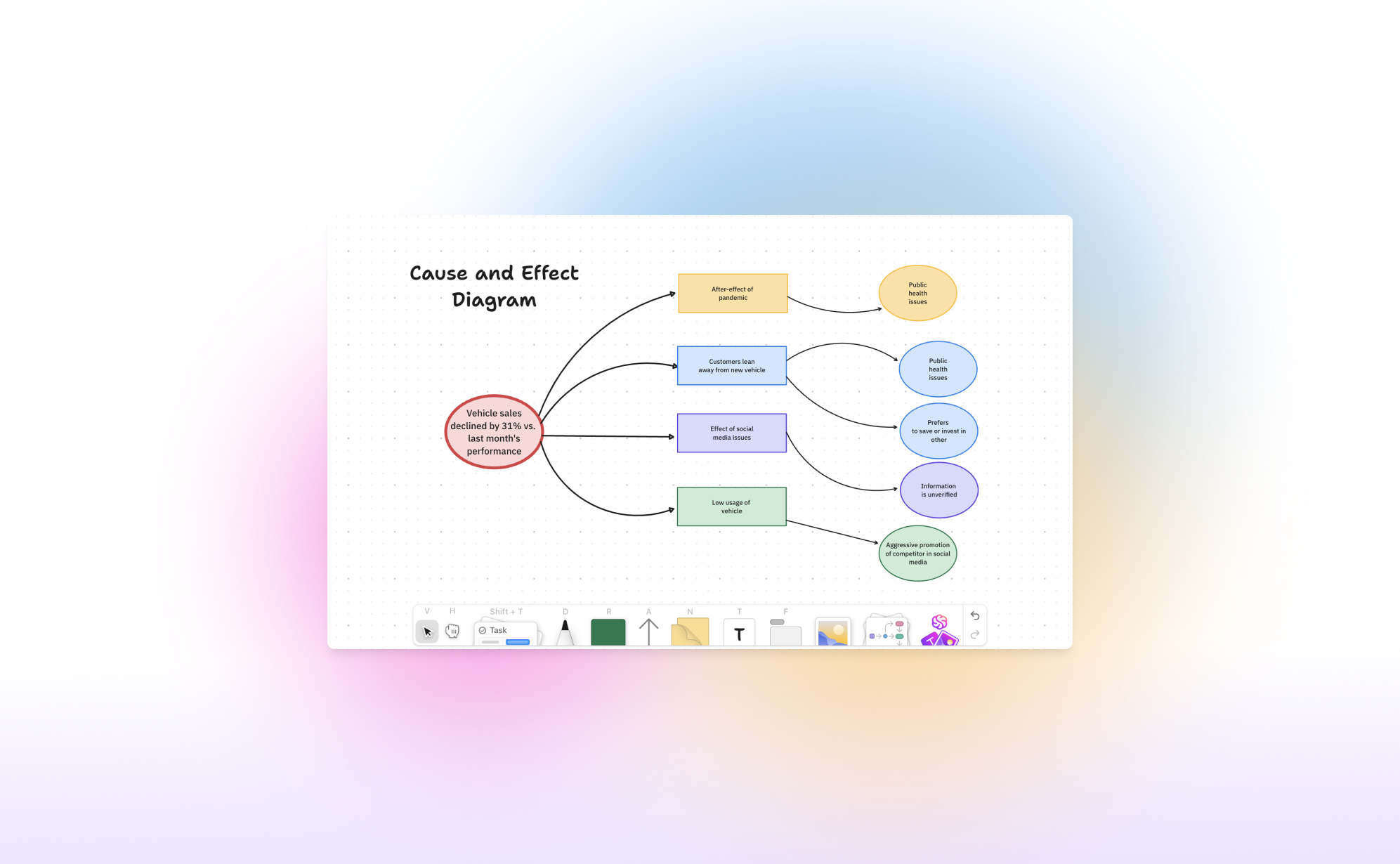
What's new in ClickUp Whiteboards?

Work today moves at lightning speed, and teams need tools that can keep up. Enter ClickUp Whiteboards 3.0 - a huge update that makes brainstorming, planning, and executing easier than ever. In this blog post, we will explain how to use Whiteboards 3.0 and highlight the most important updates in this version.
What is ClickUp Whiteboards 3.0?
In 2022, ClickUp introduced their Whiteboard feature, a fresh approach to virtual whiteboards for hybrid work environments. It is similar to other tools like Miro, but it is fully integrated with ClickUp's task management system. This integration allows you to create a ClickUp whiteboard to start a brainstorming session, design a flowchart, or discuss the team's retrospectives, using the whiteboard as a foundation to kickstart a project.
How to get started with Whiteboards?
The Whiteboard feature is available in every plan, even the free one! You can create a whiteboard in several ways:
- Via the Sidebar: Whiteboards are listed as an option in the sidebar below the home page and inbox. This page shows all whiteboards created in your workspace and lets you create a new one.
- Via a space: Click on the plus next to a space and click on Whiteboard.
- Via a Task: When you open a task, you can add a whiteboard directly to it. Click "/" to open the commands and search for "Create whiteboard." You can embed a whiteboard into the description, making it easy to quickly draw and add flowcharts.
- Via the Menu Bar: Click "New" in the menu bar, and you'll see whiteboards as an option. You can assign each whiteboard to a specific space, folder, or task.
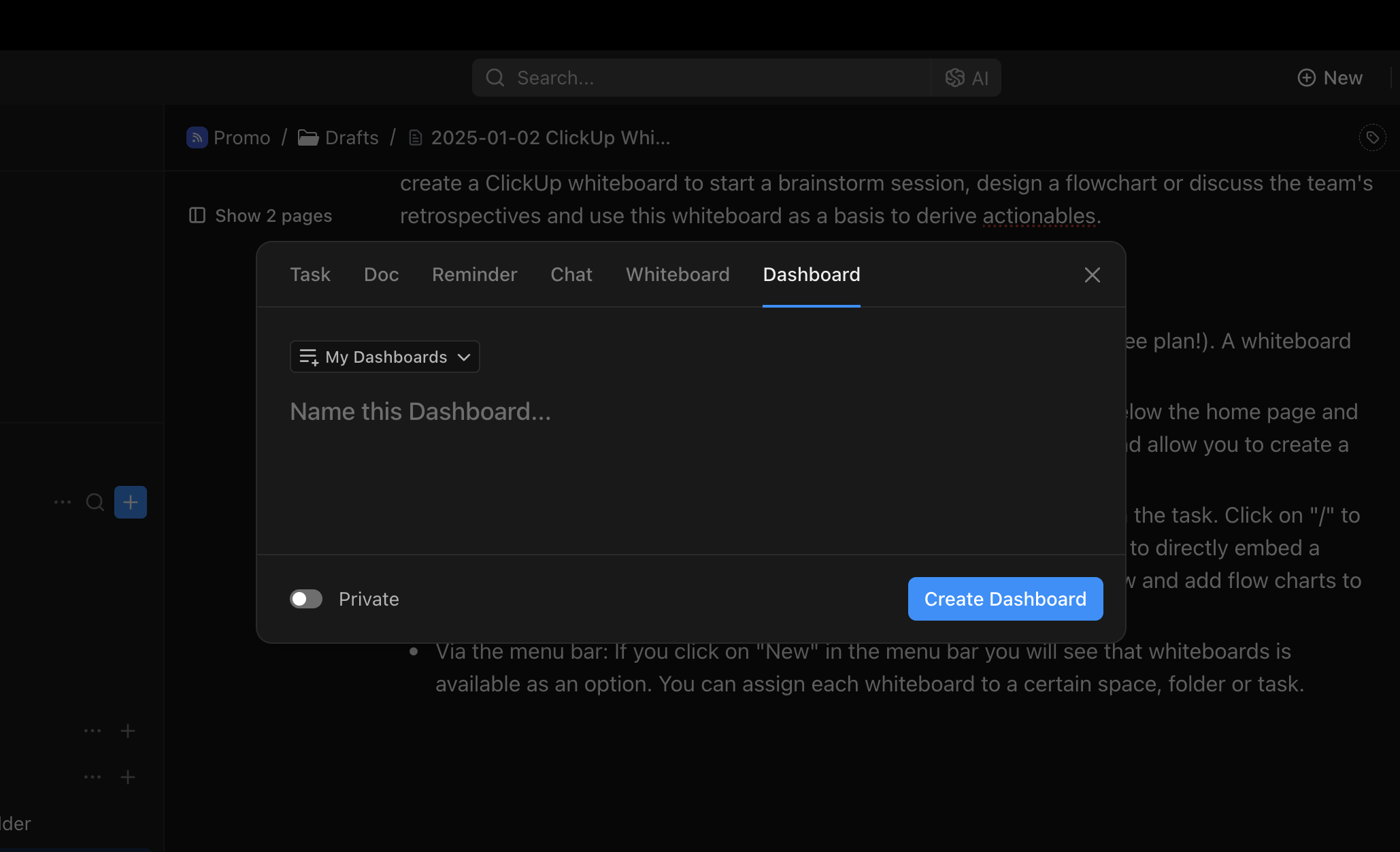
What is new in ClickUp 3.0?
The 3rd iteration of ClickUp Whiteboards introduces some strong new features and impressive quality of life improvements.
Seamless Sharing and Integration
One of the strongest points of Whiteboards 3.0 is its seamless integration with the rest of ClickUp.
- Tasks: You can easily embed whiteboards into task descriptions, mention your team in comments, and create tasks directly on the whiteboard. The connection between Whiteboards and Tasks ensures every great idea is executed. '
- Docs: Embed Docs in Whiteboards and vice versa for real-time collaboration and updates.
- Chat: Whiteboards and chat live together for real-time brainstorming and sharing without switching apps.
This integration make it incredibly useful for turning brainstorm session action items into tasks with due dates, priorities, and assignees.
Improved speed
Nobody likes waiting for things to load. That's why Whiteboards 3.0 is now 10 times faster than the previous version. Whether you're mapping out a project or collaborating live with your team, it's smooth, responsive, and reliable.
A Design That Inspires
Your workspace should be as inspiring as your ideas. Whiteboards 3.0 offers a clean, intuitive interface that's a joy to use. Love working at night? The new dark mode is not only easy on the eyes—it helps you stay focused and creative, no matter the hour.
Turn Text Into Stunning Visuals Using AI
Bring your ideas to life with the power of AI-driven image generation. Simply type out your concept, and the AI will work its magic to create a stunning graphic right on your whiteboard. There's no need to switch between different apps or waste precious time—experience a seamless flow of creativity without any interruptions.
Touch-Friendly Controls
Sometimes, it's just easier to draw things out rather than trying to explain them verbally or through text. The touch interface is designed to let you sketch, draw, and move items naturally on any device you choose to use. Whether you're working on a tablet or a touchscreen laptop, Whiteboards 3.0 feels incredibly intuitive and effortless to use.
Ready-to-Use Templates
Looking for a starting point? Check out the new template library. It's filled with professionally designed options for brainstorming, project planning, and more. These templates let you dive in and get productive right away. Some of our favourites include the 2x2 priority matrix and the 5 whys.
Closing thoughts
We think the that whiteboards functionality is really well executed and covers most of the use cases. It takes a bit of time to get used to the UI but once you're used to adding new shapes and text, it is a very fast and useful tool to visualise your thoughts.
If you're interested to learn more about white, then we strongly recommend watching the tutorial below:

Will Asana AI Studio make a splash?
.png)
2024 marked a pivotal year for productivity apps, with AI becoming an integral part of their offering. Major platforms like monday.com and ClickUp introduced powerful AI-driven features, such as enabling users to summarize Zoom calls, enhance writing, and get instant answers. AI assistants are steadily taking on more routine tasks, making work simpler and more efficient.
At Asana’s Work Innovation Summit in New York, the company unveiled AI Studio—a new tool designed to automate repetitive tasks. Whether it’s assigning work, organizing updates, or summarizing progress, AI Studio helps you focus on high-impact tasks by eliminating busywork.
What is AI Studio?
Asana AI Studio is an extension of the app's existing rules engine. It enables teams to design workflows, embed AI agents into that workflow, and deploy it directly within Asana—without needing to write a single line of code. AI Studio can be used by every kind of team, from marketing and operations to IT and HR. It is designed to approach varied tasks in the same four stages -- intake, planning, execution, and reporting -- regardless of the nature of the project.
Use Cases
Unlike traditional AI tools that focus on synthesizing information, AI Studio integrates directly with teams, acting as a virtual teammate. Here are some practical ways teams are using it:
- AI Teammate for Quick Answers: Tag the AI in task comments to get instant suggestions or answers, simulating a knowledgeable team member.
- Lead Evaluation for Sales: Use Smart Workflows to assess leads based on predefined criteria, helping sales teams prioritize opportunities efficiently.
- Meeting Preparation: Summarize key updates before meetings, ensuring teams are informed and ready to contribute.
- Content Creation Assistance: Enable marketing teams to generate keyword suggestions or automatically tag and organize content drafts, reducing manual effort.
How to get started with AI Studio?
AI Studio is available to Enterprise and Enterprise+ customers. Follow these steps to enable and use it:
- Enable Asana AI Features: Ensure your organization has activated Asana AI features.
- Admins, super admins, and billing owners can enable AI Studio via the admin console.
- Grant access to individual users as needed.
- Access AI Studio:
- In any project or My Tasks, click the Customize button in the top-right.
- Under the Add section, select AI Studio.
- Build Smart Workflows:
- Open AI Studio to create custom workflows tailored to your team’s needs.
Responsible Usage
To maximize the benefits of AI Studio, ensure your workflows are designed responsibly. Familiarize yourself with industry-standard policies from Asana’s AI partners, including OpenAI and Anthropic. These guidelines can help you create ethical and effective AI-driven processes.
AI Studio represents a significant leap forward in workflow automation, making Asana an even more indispensable tool for teams striving to work smarter, not harder. Ready to revolutionize your workflows? Explore AI Studio today.
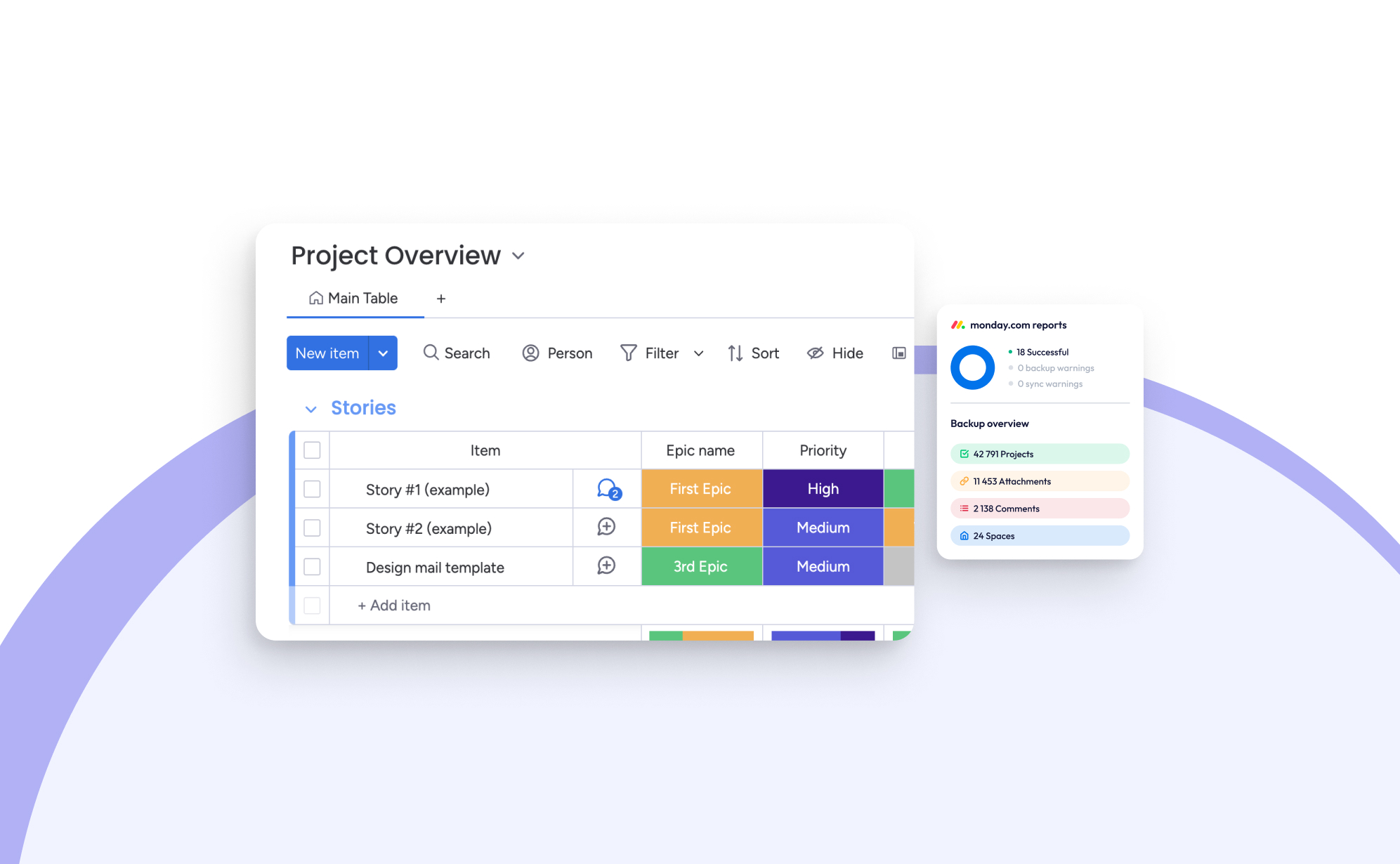
What’s New on Monday.com: The Biggest Updates for 2024
.png)
At ProBackup, we are deeply committed to ensuring that you are always up-to-date with the tools that power your daily workflows. In this blog post, we take a closer look at the most impactful updates introduced to Monday.com in 2024. It’s been another significant year for Monday.com, packed with exciting improvements.
Tailored product suites
One of the standout developments this year is Monday.com’s introduction of four tailored product bundles. These curated suites are designed to cater to specific use cases, making it easier for teams to get started and maximize the platform’s potential:
- Work Management: This bundle offers the classic Monday.com experience, which focuses on helping teams effectively manage projects and tasks. It’s a reliable foundation for streamlining workflows and ensuring productivity.
- Monday CRM: This specialized package provides tools to oversee your entire sales funnel, from managing leads to closing deals and maintaining client relationships. It’s tailored for sales teams looking for greater control and efficiency.
- Monday Dev: Aimed at fostering collaboration between developers, product designers, and business teams, this suite is designed to accelerate the product development lifecycle, helping teams bring ideas to life more efficiently.
- Monday Service: Currently in its beta phase, this suite focuses on streamlining support and IT ticket management, ensuring smoother communication between customer-facing and development teams.
We believe this strategic move by Monday.com is a step in the right direction. While the platform’s flexibility has always been a strong suit, the sheer number of options can sometimes feel overwhelming. By offering these focused bundles, teams can start with a well-defined package tailored to their needs and gradually customize their setup as they grow.
Monday Sales CRM
For those new to Monday Sales CRM, it is a powerful customer relationship management tool seamlessly built into Monday.com. Its primary goal is to streamline sales processes, track deals, and enhance client interactions. What sets it apart from other CRM solutions is its unparalleled customization options and robust integrations with other tools.
Here are some of the most noteworthy updates to Monday Sales CRM:
- Sequences allows you to automate repetitive tasks such as email outreach and task reminders, creating a smooth and efficient workflow for activities like client onboarding and lead nurturing.
- With five available steps—automatic emails, manual email reminders, general tasks, call tasks, and delay steps—you can create sophisticated, multi-step sequences.
- Advanced rules let you define when a sequence should start or stop, such as automatically removing a contact from a sequence once they respond to an email.
- The Sequence Manager provides an overview of all sequences, showing how many contacts are enrolled, active, or completed. This feature, though relatively new, already rivals established tools like Drip and ActiveCampaign.
- Zoom AI integration: Another time-saving innovation is the integration with Zoom AI, which automatically summarizes video calls by capturing key takeaways, action items, and highlights. These summaries are added directly to your activity timeline, allowing you to focus on the conversation without worrying about taking notes.
- Enhanced import tool: Importing data into Monday.com has never been easier. The new and improved import tool provides a step-by-step guide to map columns to the board structure and merge duplicate entries. This ensures that your data is accurate, organized, and ready for use right from the start.
WorkCanvas Updates
This year, Monday.com introduced WorkCanvas, a versatile digital whiteboard tool integrated within the platform. Similar to tools like Miro, WorkCanvas allows teams to brainstorm, visualize workflows, and collaborate in real time. Despite being a relatively new feature, it has already received some impressive updates:
- Synced Templates: This update enables users to create project templates in WorkCanvas that are automatically linked to specific boards. This synchronization ensures that updates, tasks, and progress are always aligned across platforms, saving time and eliminating redundant setup steps.
- Project Timelines: With this feature, you can transform your WorkCanvas into dynamic Gantt charts, providing a clear visualization of tasks, dependencies, and deadlines. This makes managing complex workflows more intuitive.
- Table Element: The new table element allows you to create, edit, and format tables directly within WorkCanvas. You can add or remove rows and columns, apply formatting, and drag-and-drop data to keep everything structured and easily accessible.
Dynamic Values in WorkDocs
WorkDocs, introduced in 2023, has become an indispensable tool for many teams, functioning like Google Docs but fully integrated with Monday.com. In 2024, Monday.com enhanced this feature by adding dynamic values, which allow live data from boards to be embedded directly into documents.
For example, by linking a Doc to a board column, you can automatically pull in data such as dates, statuses, or text updates. This feature is perfect for generating up-to-date reports, summaries, or templates without needing to manually refresh information. It’s a game-changer for teams seeking accuracy and efficiency in documentation.
Work Management Updates
In addition to the major feature rollouts, Monday.com has introduced several updates that enhance its core work management capabilities:
- Advanced Dependencies: This update makes project planning more precise by allowing users to add lead times (tasks starting earlier) and lag times (tasks starting later). It’s an essential tool for teams handling complex projects with interdependent tasks.
- Filter Subitems on Dashboards: Subitem filtering adds a new layer of granularity to dashboards, enabling users to analyze data at a deeper level. For instance, you can now filter tasks by priority, assignee, or status, making it easier to generate detailed reports and actionable insights.
- Reply Directly from Inbox: This seemingly simple but impactful update allows users to reply to comments or updates directly via email, eliminating the need to log into Monday.com or switch between tabs. It’s a small change that significantly improves communication efficiency.
Closing Thoughts
These updates reflect Monday.com’s ongoing commitment to innovation and user satisfaction. From enhanced collaboration tools to improved automation and data management capabilities, the platform continues to evolve to meet the needs of modern teams.
At ProBackup, we’re thrilled to see these advancements and are here to help you make the most of them. As always, we ensure your data stays secure while you explore and implement these exciting new features.
Which of these updates are you most excited about? We’d love to hear how they’re transforming your workflows and boosting your productivity!
.jpg)
Airtable’s Latest Release: Introducing Portals

Airtable has recently unveiled Portals, a feature designed to streamline collaboration with external users like clients, vendors, and partners. With Portals, you can create a tailored, secure experience for guests by offering a custom sign-in page that provides easy access to your Airtable app. This innovation makes sharing relevant data simpler and more secure than ever.
Why is this a big deal?
Portals enable you to give external users or guests access to Airtable Interfaces without requiring them to purchase a full Airtable license. This means you can collaborate with external stakeholders at a fraction of the cost. Pricing for the Portals add-on starts at $8 per guest per month or $120 per month for 15 guests and one portal.
Key use cases for Portals:
- Client portal: Provide clients with real-time access to project updates and deliverables.
- Vendor management: Simplify communication and document sharing with suppliers.
- Partner collaboration: Enable seamless data exchange with business partners.
- Customer support: Enhance customer experience with self-service options, FAQs, and support ticket tracking.
It’s important to note that a guest is defined as a user who does not share your team or company’s email domain, or uses a personal domain (e.g., gmail.com, yahoo.com). This ensures team members cannot be treated as guests to reduce licensing costs.
How is different from Airtable interfaces?
Airtable Interfaces have been available for some time and allow you to share access to underlying Airtable data in a customized way. With Interfaces, you can control what parts of the database are visible and editable, tailoring the experience to suit your needs.
The key distinction with Portals lies in the external login capability. Instead of logging directly into Airtable, external users access your custom partner portal to interact with Airtable Interfaces. This provides a more professional, branded experience.
Key features:
- Custom sign-in page: Allow external collaborators to access your Airtable Interface without needing to log into Airtable itself.
- Granular permissions: Control exactly what guests can see and edit, ensuring secure and tailored collaboration.
- White labeling (coming soon): Personalize your portal by matching it to your brand. Add your company logo and customize the background for a cohesive, professional look.
How to get started with Portals?
Portals are currently in beta for Teams, Business, and Enterprise Scale customers. If you’re eligible, you can add the Portals add-on to invite external users and manage their access easily.
As a trusted backup provider for Airtable, ProBackup ensures your data remains secure no matter how Airtable’s features evolve. Stay tuned for more updates on this powerful tool!
See Portals in action
Here are a few tutorial videos to help you explore Airtable Portals:

ProBackup Picks ClickUp's Highlights of 2024

ProBackup Picks ClickUp's Highlights of 2024
ClickUp ended 2023 strong with the launch of ClickUp 3.0. As 2024 wraps up, we're eager to see if they kept their momentum (spoiler alert: they did!).
Here are some of the biggest updates ClickUp added or improved in 2024.
ClickUp Chat
ClickUp is fulfilling its promise to become the "one app to replace them all" with ClickUp Chat. Previously, you could communicate by commenting on tasks and docs, but now ClickUp Chat has its own spot on the sidebar (here's how to activate it).
The feature set is familiar: post announcements, message colleagues directly, and create channels for each department. The biggest advantage is its deep integration with other parts of the app. Here are two examples:
- Create a chat view for a specific list to ask for general updates related to that list or team.
- Turn conversations into tasks with one click and link chats to related work items.
Additionally, you can use the AI option to suggest replies and summarize threads. This leads us to another significant improvement...
ClickUp Brain
The rise of AI was initially met with skepticism, but 2024 proved it's here to stay. Many big SaaS players are integrating AI into their apps, and ClickUp is leading the way with impressive AI features for productivity.
When you log in, the new AI features are easy to find. The pink widget in the bottom right corner gives quick access to summarize, write, or ask a question. It's a clever way to highlight the three main AI use cases within ClickUp.
Summarize: Select text in ClickUp and "ask AI" to summarize, improve, lengthen, or shorten it. You can also check spelling and grammar or translate it. It's super handy and quick!
Writer: This feature helps you draft new text. Use it for anything: generate a meeting minutes template, draft a brainstorming agenda, or write an email with feedback. While the output is often impressive, a human review is recommended.
Ask AI: This option lets you ask questions to the ClickUp Brain. It's the most exotic option, and we haven't explored it much. In theory, you can ask AI to summarize project updates or explain a team process.
Whiteboards 3.0
In December, ClickUp launched the third version of ClickUp Whiteboards. This version is a complete rebuild, featuring a sleek design and powerful capabilities. With improved features and impressive speed, it's easier than ever to work and chat with your team in real-time on the same board.
ClickUp added hundreds of new, professionally designed templates for brainstorming, project planning, and more. They also introduced AI-powered image generation to transform text into stunning visuals in seconds. These updates make it easy to jumpstart sessions and get ideas flowing quickly.
Once you're done, convert whiteboard ideas into tasks, making it simple to turn brainstorming sessions into assigned tasks. You can also export the whiteboard as a PDF, PNG, or JPEG.
Clips 3.0
With Clips, you can instantly create and share videos, making it easy to convey your message clearly and effectively. The process is as simple as hitting record, sharing your screen, and sending your ideas to your team faster than typing a response.
Clips stand out because they integrate seamlessly into the platforms where you already work. There's no need to switch to Loom or upload files.
The flexibility in sharing Clips is remarkable: embed a Clip directly within ClickUp, send a public link to anyone outside your Workspace, or download the video file. Every Clip you record, whether in a comment, task, or Doc, is automatically stored in the Clips Hub (accessible via the navigation bar).
Conclusion
It's clear that ClickUp has had another banging year with new and improved features. This exciting development makes us even more eager to see what innovative features they'll bring in 2025!
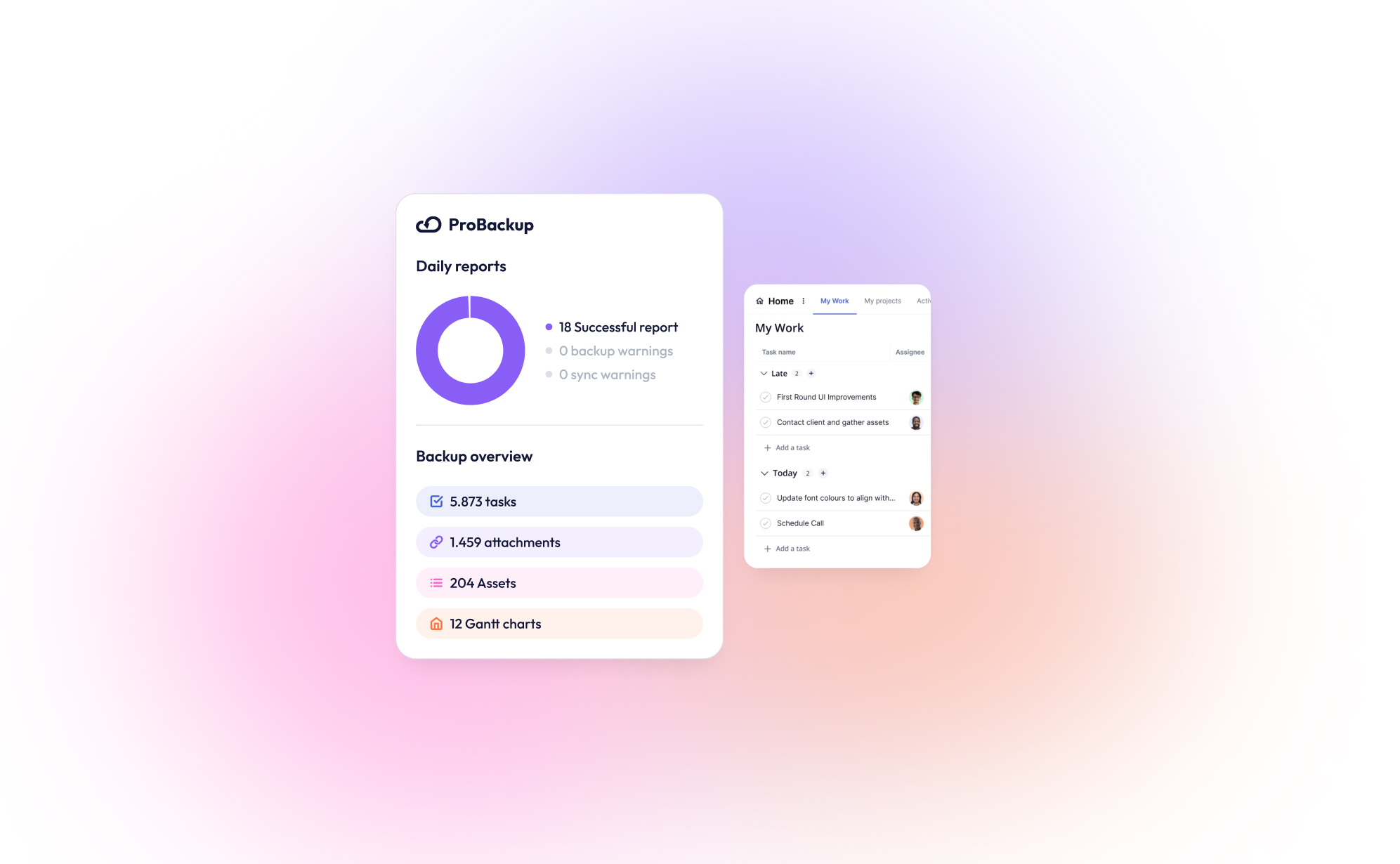
New integration: ProBackup now supports Teamwork.com!

We are thrilled to announce that ProBackup now supports Teamwork.com, the popular project management and collaboration platform. With this new integration, ProBackup continues to deliver on its promise of safeguarding your business-critical data for the SaaS tools you rely on.
Teamwork.com is a project management and collaboration platform designed to help teams plan, track, and manage their work efficiently. It offers tools for project planning, task assignments, time tracking, resource management, and client collaboration, making it especially popular in client-focused industries like marketing, agencies, and professional services.
What makes Teamwork.com unique?
Teamwork.com stands out from competitors by avoiding overly technical or jargon-heavy language. While platforms like Jira have steeper learning curves due to terms like “epic” and “issue,” Teamwork.com uses straightforward terminology, making it accessible to users across various professions and backgrounds.
Its automation features are equally user-friendly. Unlike some tools that require extensive tutorials, Teamwork.com allows you to automate tasks, such as moving items on a Kanban board, with ease.
Additionally, Teamwork.com includes built-in features for time tracking, budget management, and invoice calculations, providing clear insights into your project’s financial health.
To streamline business operations further, Teamwork.com offers complementary products like Teamwork Chat, Teamwork Desk, and Teamwork Spaces. These tools integrate seamlessly with the main platform, eliminating the need for cobbling together disparate systems.
Why Backup Teamwork.com?
Teamwork.com offers a decent trash can feature to recover recently deleted items: Deleted items are stored in the trash can for 30 days, before being permanently deleted. We think it's great that only admins can access the trash which prevents that other team members can empty the trash can.
However, despite this you could still lose business-critical data in some scenarios:
- Malicious deletion of trash can items by the admin
- Recovering items that were deleted more than 30 days
- Rollback data after a wrong bulk import or update
ProBackup provides an answer to these worst-case scenarios by offering:
- Daily Automated Backups: Never worry about losing important project updates.
- Data Restore Options: Quickly recover lost or corrupted data in just a few clicks.
- Comprehensive Security: Your backups are encrypted and stored securely.
What We Back Up
With ProBackup, you can ensure the safety of all your essential Teamwork.com data:
- Tasks
- Projects
- Clients
- Attachments
- Comments
- Task Lists
- Users
Get Started
Integrating Teamwork.com with ProBackup is simple. Log in to your ProBackup account to enable this feature today. Stay ahead of potential data loss and keep your projects secure with ProBackup for Teamwork.com.
Ready to protect your Teamwork.com data? Start your free trial now.

On the Path to SOC 2 Type II Certification: What It Means for You
.png)
We’re excited to share that ProBackup is on the path to achieving SOC 2 Type II certification, with our audit currently underway. We anticipate completing the process by mid-February, marking a significant milestone in our mission to deliver secure and reliable backup solutions for project management apps like ClickUp, Airtable, Jira, and many more.
SOC 2 Type II is widely recognized as a benchmark for data security, evaluating not just the design of security controls but their operational effectiveness over an extended period. This rigorous process reflects our unwavering commitment to safeguarding your data and earning your trust.
What Does This Mean for You?
As we work toward certification, here are the 3 main benefits for you as a customer:
- Enhanced Security: Strong protections against unauthorized access to your data.
- Reliable Operations: Systems designed for high availability and performance.
- Greater Transparency: Assurance that we’re meeting stringent security standards.
The updated policies and security practices will soon be available for customers in a brand new Trust Center. The Trust Center will give customers easy access to all policies and security reports such as the latest pen test results and the SOC2 report. The trust center will be launched by the end of February.
Stay Tuned
We’ll keep you updated on our progress and will share the news once our certification is complete. If you have any questions about our journey to SOC 2 Type II or the measures we take to secure your data, feel free to reach out.
Thank you for trusting ProBackup to protect your business-critical data. Together, we’re building a safer, more secure future for your operations.
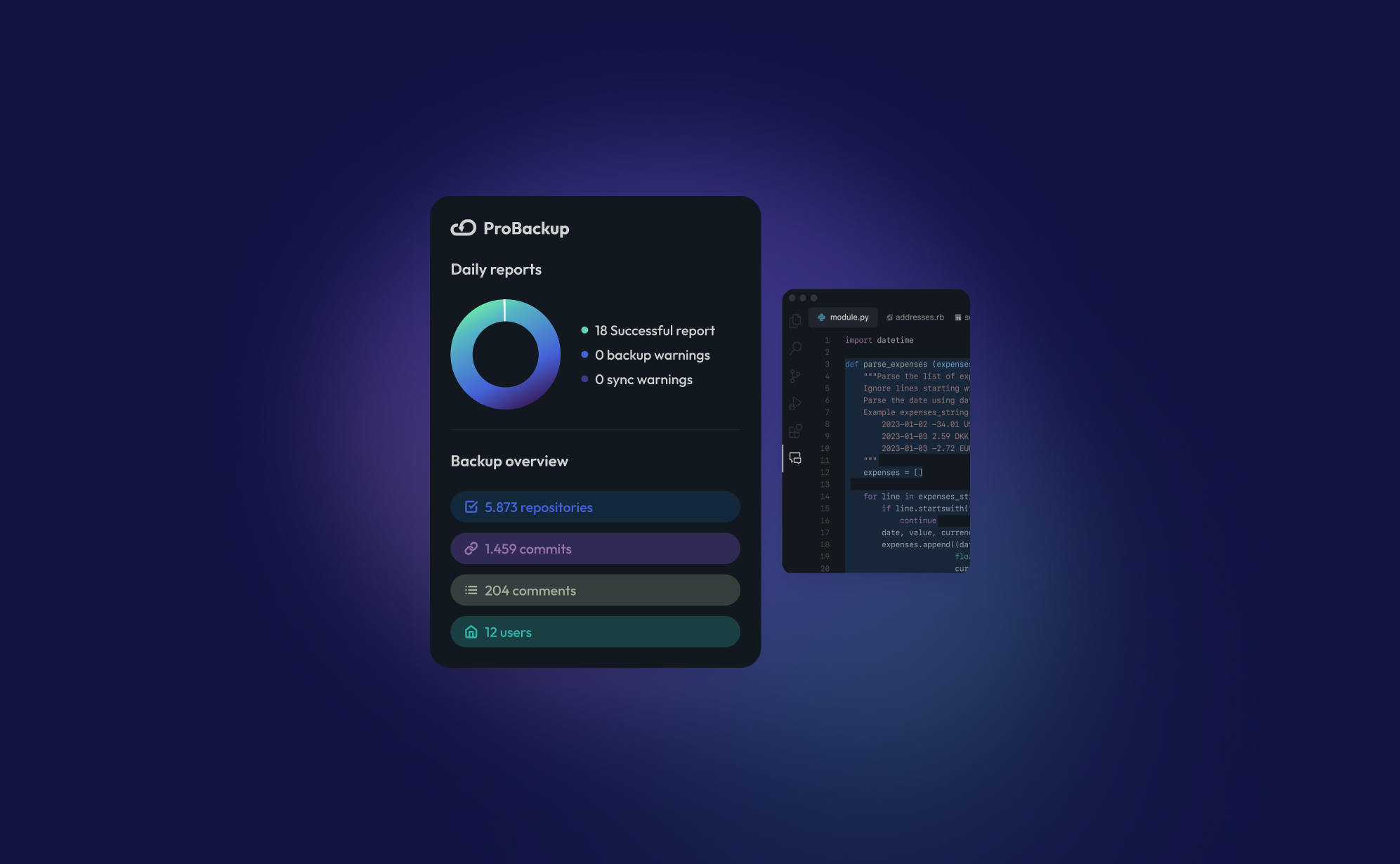
New Integration: Backup Your GitHub Data with ProBackup

We’re thrilled to announce that ProBackup now supports GitHub! With this new integration, you can back up key data from your GitHub account, ensuring your code and development history are safe and secure.
For those unfamiliar, GitHub is the world’s leading platform for version control and collaboration, allowing developers to store, track, and manage their code. It’s a crucial tool for teams working on software projects, providing a centralized place for code repositories, branches, and commits. Developers can work together on projects, review changes, and maintain a complete history of every version of their code.
With ProBackup’s GitHub integration, you can back up:
- Repositories: Secure all your project files and codebases.
- Branches: Preserve every branch of your development efforts.
- Commits: Keep a record of every change made to your code.
- Repository Snapshots: Capture specific points in your repository's history, allowing easy rollback if needed.
ProBackup automatically backs up your GitHub data on a daily basis, so you never need to worry about losing important work. You can view your backups directly in our UI and even sync them to your Google Drive for additional storage and redundancy.
Currently, ProBackup provides backups of all your GitHub data, but restoring data back to GitHub is not yet available. However, your backups are easily accessible, and your data is always protected.
Get started with ProBackup’s GitHub integration today and keep your development history safe! Stay tuned for more updates!
.jpg)
Why Backing Up Slack Data Is Crucial After Recent Changes
.png)
Slack recently rolled out significant updates that impact users on free workspaces, limiting data retention and message history. If you manage projects or collaborate with teams on Slack’s free plan, it's crucial to understand these changes and how they affect your ability to access past conversations and files. Here’s everything you need to know about the update and why a solid backup strategy is more important than ever.
What’s Changing in Slack’s Free Workspaces?
Slack has shifted from storing messages and files indefinitely to a rolling 90-day limit on free workspaces. This means:
- Message Retention: Only messages from the past 90 days will be available. Anything older will be inaccessible unless your workspace is upgraded to a paid plan.
- File Storage: Similarly, files shared more than 90 days ago will no longer be accessible.
This change can be a major disruption for teams that rely on Slack for daily communication. Old conversations, decisions, and shared files are critical, especially in long-term projects.
Why Should You Be Concerned?
While Slack's free plan remains a valuable tool for small teams, the updates pose a risk of data loss. Without proper backups, you could lose access to important files, project discussions, or decision-making threads, which may affect future work. Key risks include:
- Loss of Historical Data: Teams often refer back to past discussions in long-term projects. Under the new Slack policy, this historical data could vanish unless you pay for a higher plan.
- Unreliable File Availability: Shared files older than 90 days will no longer be stored, which could lead to gaps in your documentation.
How ProBackup Can Help
ProBackup is designed to protect your valuable data on platforms like Slack. Our solution offers automated, scheduled backups that ensure your conversations, files, and attachments are securely stored and easily retrievable - no matter what happens on Slack’s servers.
With ProBackup, you can back up various types of data, including:
- Users: Maintain records of all team members.
- Channels: Keep a complete history of discussions across different channels.
- Threads: Save important threaded conversations for context.
- Messages: Archive all messages for future reference.
- Attachments: Securely store files shared in channels and direct messages.
- Direct Messages: Back up direct messages that you have access to, ensuring no vital communication is lost.
With ProBackup, the retention of your data depends on your subscription plan:
- Plus Plan: Retains revisions for up to 6 months.
- Pro Plan: Retains revisions for up to 2 years.
- Premium Plan: Retains revisions for up to 4 years.
This flexibility allows you to choose a plan that best fits your team's needs.
What You Can Do Now
To avoid any disruption or potential data loss, here’s what you should do:
- Evaluate Your Needs: If you rely heavily on Slack’s free version for project management, consider the potential impact of the 90-day limit.
- Upgrade or Back Up: You can either upgrade to Slack’s paid plan for longer retention or use ProBackup to ensure your data is backed up and retrievable.
- Set Up ProBackup: Automate the process of securing your Slack data, giving you continuous access to your messages and files based on your chosen retention plan.
Conclusion
Slack's changes to free workspaces introduce limits that could put your team’s data at risk. ProBackup offers a seamless solution to these challenges by ensuring your conversations and files are always backed up, accessible, and secure - so you can focus on what matters most: getting work done.

How to back up your ClickUp lists: A step-by-step guide
.png)
ClickUp is a fantastic all-in-one productivity platform that helps teams manage everything from simple tasks to complex, multi-stage projects. While you rightfully trust cloud apps like ClickUp to be secure and reliable, managing your business's critical data on any single platform opens the door to potential risks.
Using ClickUp to manage your business can expose your team to issues such as accidental data deletion from human error, malicious actions by disgruntled employees, or data loss due to technical glitches and downtime. Losing an important ClickUp task or list can set your business back hours, or even days.
To gain peace of mind and protect your workflow, implementing an automated backup solution is essential. This guide will walk you through setting up a daily, automated backup for your ClickUp account using ProBackup.
Part 1: Create a ProBackup account
Getting started is easy and comes with a 7-day free trial.
- Visit the ProBackup for ClickUp page by navigating to https://www.probackup.io/backup/clickup
- Click on the Start free 7 day trial button.
- Select ClickUp as the app you would like to back up and click Continue
- Fill in your email, first name, and last name, then click Continue.

- Verify your email address by following the instructions sent to your inbox.
Part 2: Connect ClickUp and start your first backup
Once your ProBackup account is created and verified, you can connect your ClickUp account.
We recommend that you sign in to the right ClickUp account first, before connecting your account.
- In ProBackup, click on Sign in with ClickUp. This will redirect you to ClickUp to authorize the connection. If you are not signed in to ClickUp, then you will have to sign in first.
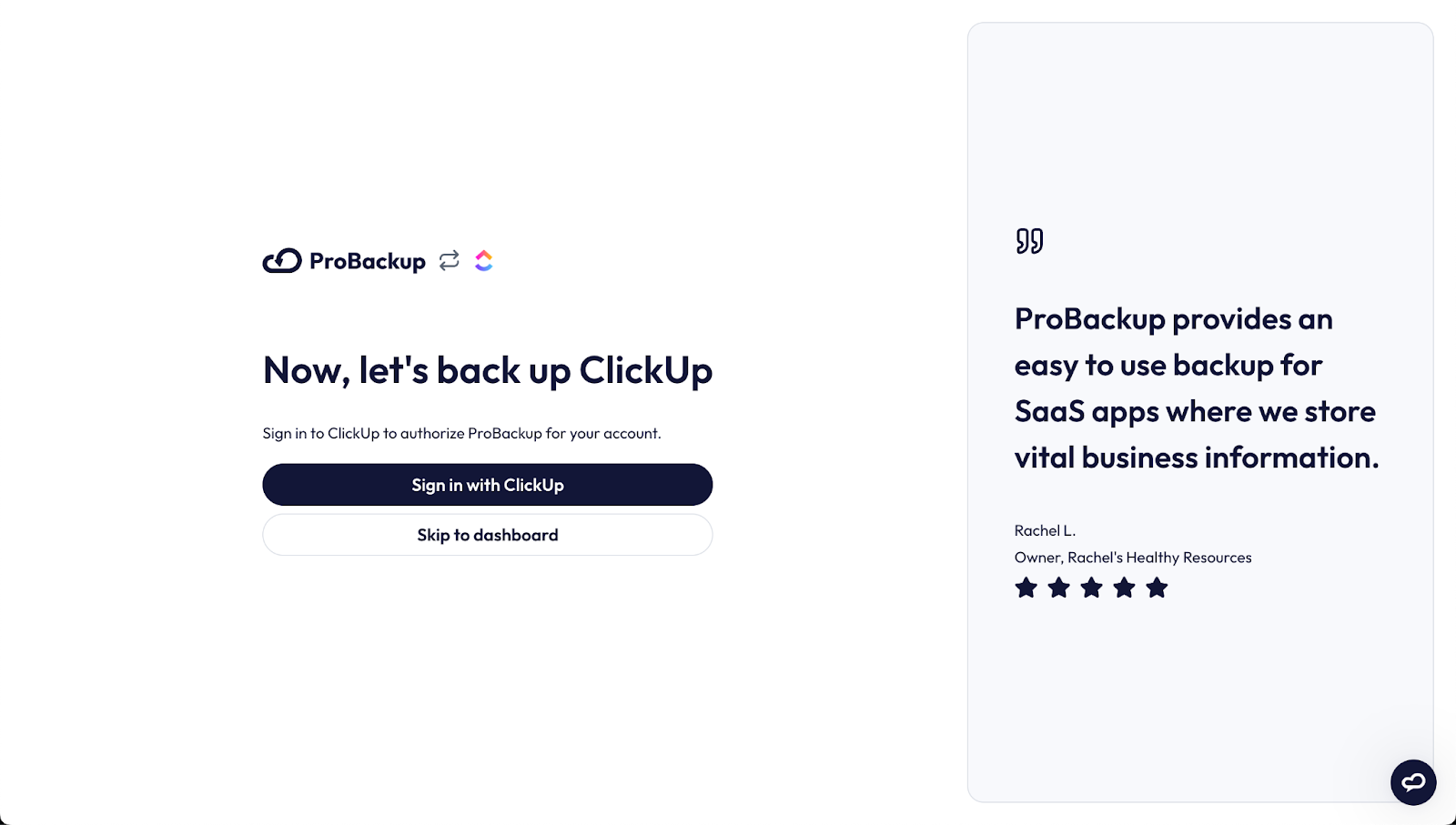
- On the ClickUp authorization page, select the workspaces you would like to back up and click on Connect Workspaces.

- Click Start Backup to grant ProBackup access and begin your first backup.
What happens next?
After you confirm, the initial backup of your selected ClickUp workspaces will begin automatically. Our backup app will fetch all relevant data types such as lists, tasks, comments, files and ClickUp docs. Depending on the size of your ClickUp account, the initial backup can take up to a few hours. You will be notified by email as soon as the first backup is complete.
Click on Go to ClickUp to view the lists that are already backed up.
That’s it! Your ClickUp account is now protected with daily automated backups, ensuring your data is safe and easily restorable when you need it most.
Inviting other ClickUp users
During the onboarding flow of ClickUp, you choose which workspaces you want to back up. Once the initial backup is started, we can back up all data that your ClickUp account has access to. This means that any private spaces, folders or lists that you don’t have access to, will not be included in the scope of the backup. You can solve this by inviting other team members to your account.
- In ProBackup, go to Settings > Users.
- Click on Invite Team Member and confirm the popup.
Each invited team member needs to create their own ProBackup account and authorize ProBackup to their ClickUp account. Once they’ve done this, then their personal spaces, folders and lists will be added to the backup scope.
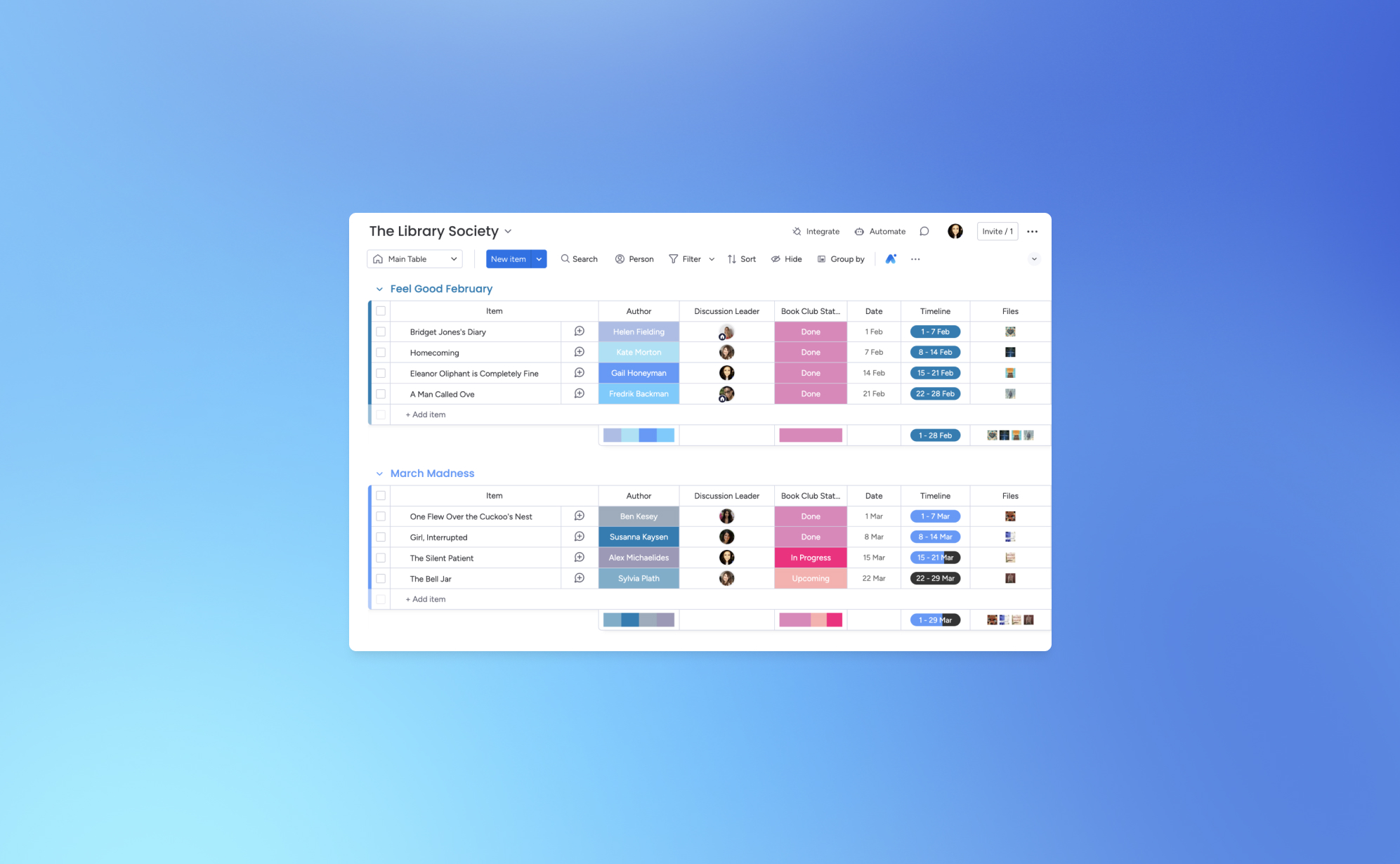
How to protect your monday.com boards: A Step-by-step guide to backing up monday.com
.png)
monday.com is a best-in-class productivity platform that allows teams to create customizable workflows to manage projects, tasks, and processes. While you rightfully trust cloud apps like monday.com to be secure and reliable, managing your business's critical data on any single platform opens the door to potential risks.
Using monday.com to manage your business can expose your team to issues such as accidental data deletion from human error, malicious actions by disgruntled employees, or data loss due to technical glitches and downtime. Losing an important monday.com board or WorkDow can set your business back hours, or even days.
To gain peace of mind and protect your work, implementing an automated backup solution is essential. This guide will walk you through setting up a daily, automated backup for your monday.com account using ProBackup.
Part 1: Create a ProBackup Account
Getting started is easy and comes with a 7-day free trial.
- Visit the ProBackup for monday.com page by navigating to https://www.probackup.io/backup/monday-com
- Click on the Start free 7 day trial button.
- Select monday.com as the app you would like to back up and click Continue
- Fill in your email, first name, and last name, then click Continue.

- Verify your email address by following the instructions sent to your inbox.
Part 2: Connect monday.com and Start Your First Backup
Once your ProBackup account is created and verified, you can connect your monday.com account.
We recommend that you sign in to the right monday.com account first, before connecting your account.
1. In ProBackup, click on Sign in with monday.com. This will redirect you to monday.com to authorize the connection. If you are not signed in to monday.com, then you will have to sign in first.

2. On the monday.com authorization page, scroll down and click on Authorize

3. On the next step of the onboarding wizard, select the workspaces you would like to back up.
4. Click on Start Backup to start your first backup.
What Happens Next?
After you confirm, the initial backup of your selected monday.com workspaces will begin automatically. Our backup app will fetch all relevant data types such as items, files, comments, fields and WorkDocs. Depending on the size of your monday.com account, the initial backup can take up to a few hours. You will be notified by email as soon as the first backup is complete.
Click on Go to monday.com to view the boards that are already backed up.
That’s it! Your monday.com account is now protected with daily automated backups, ensuring your data is safe and easily restorable when you need it most.
Inviting other monday.com users
During the onboarding flow of monday.com, you choose which workspaces you want to back up. Once the initial backup is started, we can back up all data that your monday.com account has access to. This means that any workspaces or private boards that you don’t have access to, will not be included in the scope of the backup. You can solve this by inviting other team members to your account.
- In ProBackup, go to Settings > Users.
- Click on Invite Team Member and confirm the popup.
Each invited team member needs to create their own ProBackup account and authorize ProBackup to their monday.com account. Once they’ve done this, then the additional workspaces and their private boards will be added to the backup scope.
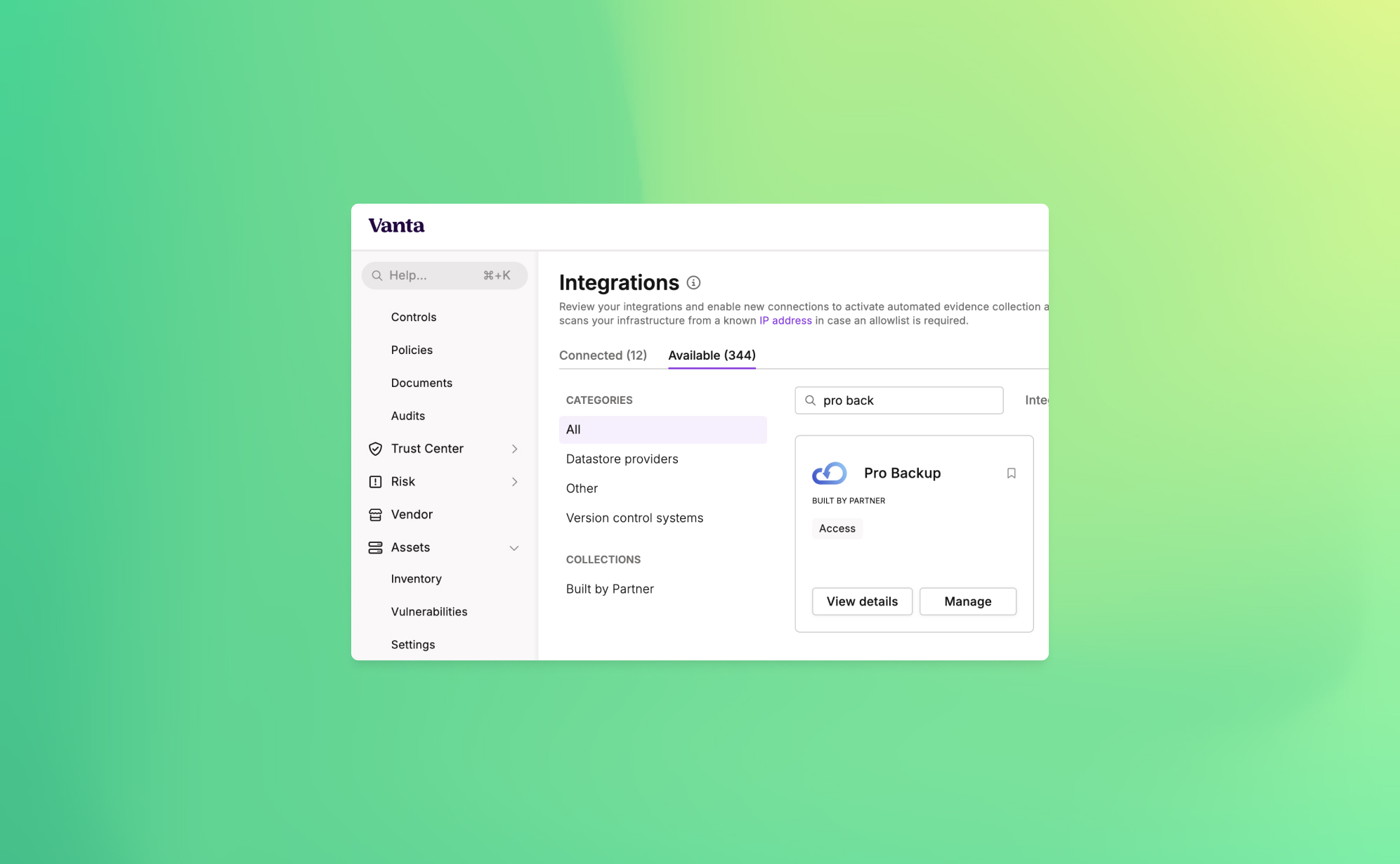
Announcing ProBackup's New Vanta Integration for SOC 2 Compliance

At ProBackup, our mission is to provide businesses with secure, reliable cloud backup solutions. As part of our commitment to security and compliance, we're excited to announce a new integration with Vanta, a leading platform that automates the path to SOC 2 compliance.
This new integration is designed to help companies strengthen their security posture by automating the compliance tests that are linked with the ProBackup platform. For organizations working towards or maintaining SOC 2 compliance, this integration provides both peace of mind and significant time savings.
Why SOC 2 Compliance Matters
SOC 2 (System and Organization Controls 2) is a crucial standard for SaaS companies, especially those dealing with sensitive customer data. It sets the guidelines for managing customer data securely, covering five key principles: security, availability, processing integrity, confidentiality, and privacy.
SOC 2 compliance assures your customers that your organization follows strict protocols to protect their data. Achieving SOC 2 compliance not only strengthens security but also builds trust and credibility with your clients.
Cloud Backups and SOC 2 Compliance
Cloud backups are a critical component of any organization's data protection strategy. However, simply having backups is not enough—SOC 2 compliance requires that backups are secure, monitored, and managed in line with strict protocols. The ProBackup + Vanta integration simplifies this process by automating the checks necessary to meet compliance requirements.
How the ProBackup + Vanta Integration Works
The integration includes 3 automated tests that Vanta runs to ensure your backup processes are secure and compliant with SOC 2 standards:
- Accounts deprovisioned when personnel leave (ProBackup): Ensures that user access to cloud backups is revoked when employees leave your organization.
- User accounts associated with users (ProBackup): Verifies that all backup accounts are correctly linked to an individual, reducing the risk of orphaned accounts.
- User accounts have MFA enabled (ProBackup): Confirms that multi-factor authentication (MFA) is enabled for all user accounts, adding an extra layer of protection.
These automated tests help your organization meet the following SOC 2 controls:
- Remote access MFA enforced: Ensures that all users accessing your systems remotely have MFA enabled, reducing the risk of unauthorized access.
- Unique production database authentication enforced: Guarantees that each user has a unique identifier for accessing the production environment, improving accountability and security.
Cloud Backups and SOC 2 Compliance
Cloud backups are a critical component of any organization's data protection strategy. However, simply having backups is not enough—SOC 2 compliance requires that backups are secure, monitored, and managed in line with strict protocols. The ProBackup + Vanta integration simplifies this process by automating the checks necessary to meet compliance requirements.
How to Get Started
To start using the new integration, simply go to the Integrations section within Vanta and link your ProBackup account. From there, the automated tests will continuously run in the background, helping your organization stay compliant without additional manual effort.
With this integration, you can rest easy knowing that your cloud backups are secure, compliant, and in line with industry best practices.

Why Cloud Backups Are Critical for SaaS Data Protection

With an increase in the number of online businesses, it has become customary for them to depend largely on Software as a Service (SaaS) platforms. These cloud-based tools are extremely useful in the optimization of processes and improving communication between employees. But with that great ease arises an important concern as well: what if you lose your data?
Many make the same mistake. They think everything is taken care of and their data is safely hosted – SaaS provides that peace of mind, but that is not entirely true. Indeed, they manage uptime and security. However, they do not protect you from accidental deletions or target attacks. This is where cloud backups protect consumers as well as many companies. Let's analyse why having cloud backups in place is essential for any business using SaaS tools,, and why such measures will save you from all headaches.
1. The Risk of Data Loss Is Real
It is very common to think that data loss will not happen to your business until it does. And the truth is that if you depend on your SaaS provider’s protection solely, that may leave you exposed more than you think. Here’s why:
- Human error: Mistakes happen. An employee leaves their hard drive plugged into a conference call system and a criminal comes in and deletes as much as possible from the poor man's hard drive.
- System glitches: Even the most reliable SaaS providers are oftentimes only 95% reliable. Programming or operator errors, hardware malfunction, power outages, and internet downtime are all common nuisance problems that waste people’s time as well as opportunities to create value in an organization.
In the absence of a substantially good backup strategy, making good the lost data may be so hard if not impossible. This is the reason why having an efficient cloud backup system is so vital.
2. Why Cloud Backups Are More Than Just a Safety Net
Cloud backup can be likened to an insurance policy – one you pray that you’ll never have to use but will be immensely grateful for how useful it is when the worst comes to the worst. This is exactly the reason they are so popular
- Backup fatigue: Because these are cloud backups, these plans will keep a copy of the data and that copy is going to be kept in other places away from where the SaaS provider’s office is located. Therefore, even if there are any inconsistencies with your SaaS data, you don’t have to fret as there’s a backup already in place B and ready to be utilized instead.
- Automatic updates: The most important feature? The majority of cloud storage backup solutions are automatic. So, once you decide how often to back up your information, you will never have to disturb yourself to back up the information regularly – your information will be backed up automatically.
Eventually, however, we can expect and appreciate cloud storage for backup and recovery of valuable information because in case the worst case scenario occurs, one does not lose information for good.
3. Cyberattacks and Ransomware: How Cloud Backups Can Save You
This age, especially after the growth of ransomware, brought the danger of cyber threats higher than ever. They take hold of the resources you have at this moment as well as your data and agree to unlock the data only for a huge fee. The damage in terms of business and processes might be preventive.
Luckily for our business, against ransomware attacks one of the most efficient measures would be the taking of online cloud backups. There is no point in stealing ANY of your SaaS data because you will always have a backup, which attackers will not be able to access.
To get more security, businesses mostly use services such as the Cheapest monthly VPN which keeps the internet traffic secure while the data is being backed up or changed. It is a clever, multi-level method to secure your information.
4. Best Practices for Cloud Backups in SaaS
If you wish to optimize the effectiveness of your cloud backups, there are several practices you should observe regarding your data.
- Backup frequently: Regularly, data loss is less likely when frequent backups are made.
- Use encryption: Encryption needs to be applied whenever and wherever your backups are being sent or kept.
- Test your backups: Make it a point to carry out some recovery testing regularly. The chances of accomplishing this in an actual crisis are quite slim so it is advisable to carry out this during a drill.
Conclusion
Cloud backups should not be considered as an additional feature: they are a must include in every strategy for SaaS data protection. They help prevent human errors, protect against hackers and assist in meeting legal requirements which is quite a valuable asset for your company. In the era we are living in, no one is too cautious about how they go about keeping the most important item in business – the data.
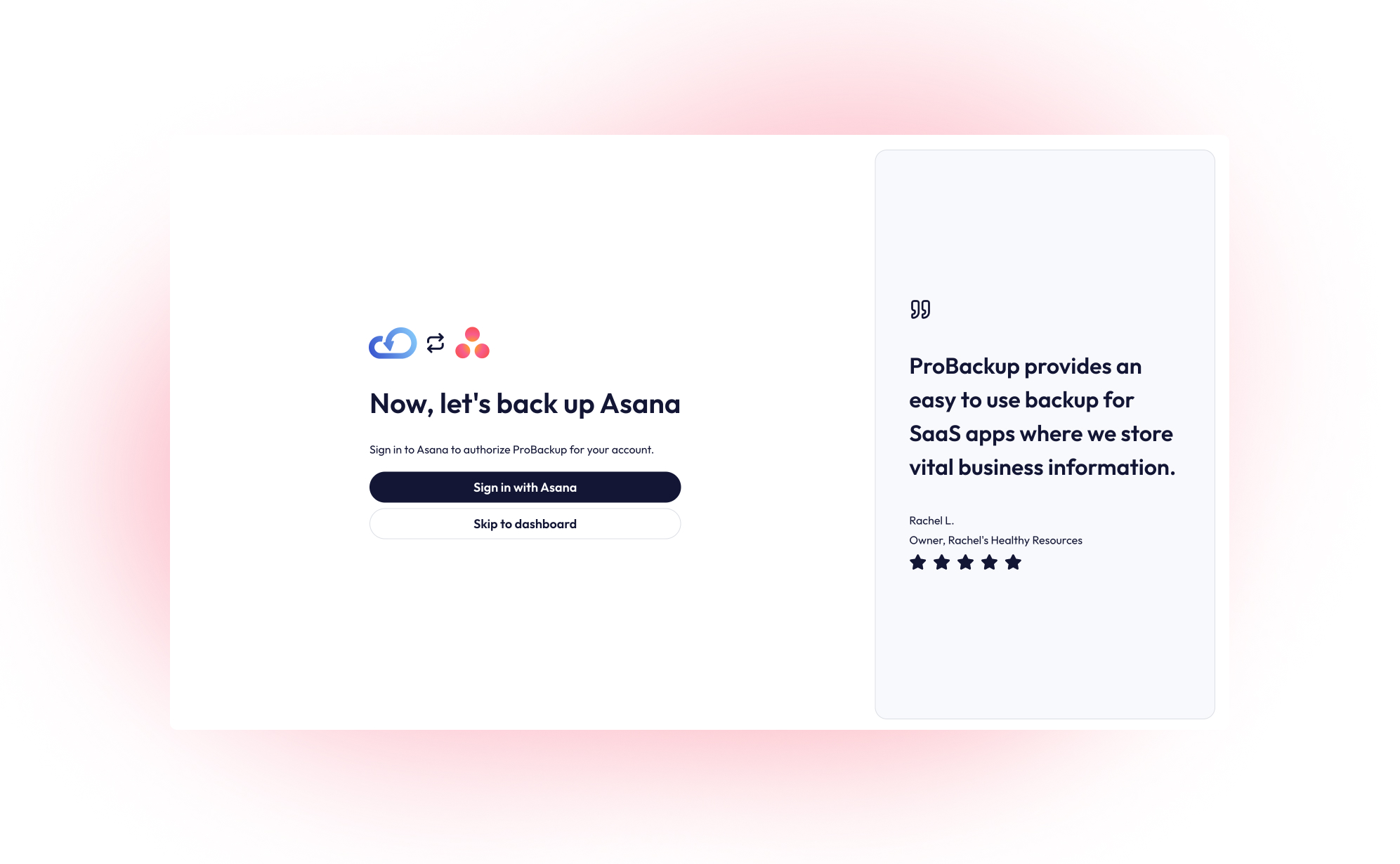
How to back up your Asana projects (and why it matters)
.png)
Asana is a leading work management platform for human and AI coordination. Whether it's managing strategic initiatives, cross-functional programs, or company-wide goals, Asana helps business bring clarity to complexity. While you rightfully trust cloud apps like Asana to be secure and reliable, managing your business's critical data on any single platform opens the door to potential risks.
Using Asana to manage your business can expose your team to issues such as accidental data deletion from human error, malicious actions by disgruntled employees, or data loss due to technical glitches and downtime. Losing an important Asana task or project can set your business back hours, or even days.
To gain peace of mind and protect your workflow, implementing an automated backup solution is essential. This guide will walk you through setting up a daily, automated backup for your Asana account using ProBackup.
Part 1: Create a ProBackup Account
Getting started is easy and comes with a 7-day free trial.
- Visit the ProBackup for Asana page by navigating to https://www.probackup.io/backup/asana
- Click on the Start free 7 day trial button.
- Select Asana as the app you would like to back up and click Continue
- Fill in your email, first name, and last name, then click Continue.
- Verify your email address by following the instructions sent to your inbox.
Part 2: Connect Asana and Start Your First Backup
Once your ProBackup account is created and verified, you can connect your Asana account.
We recommend that you sign in to the right Asana account first, before connecting your account.
- In ProBackup, click on Sign in with Asana. This will redirect you to Asana to authorize the connection. If you are not signed in to Asana, then you will have to sign in first.

- On the Asana authorization page, click on Allow.
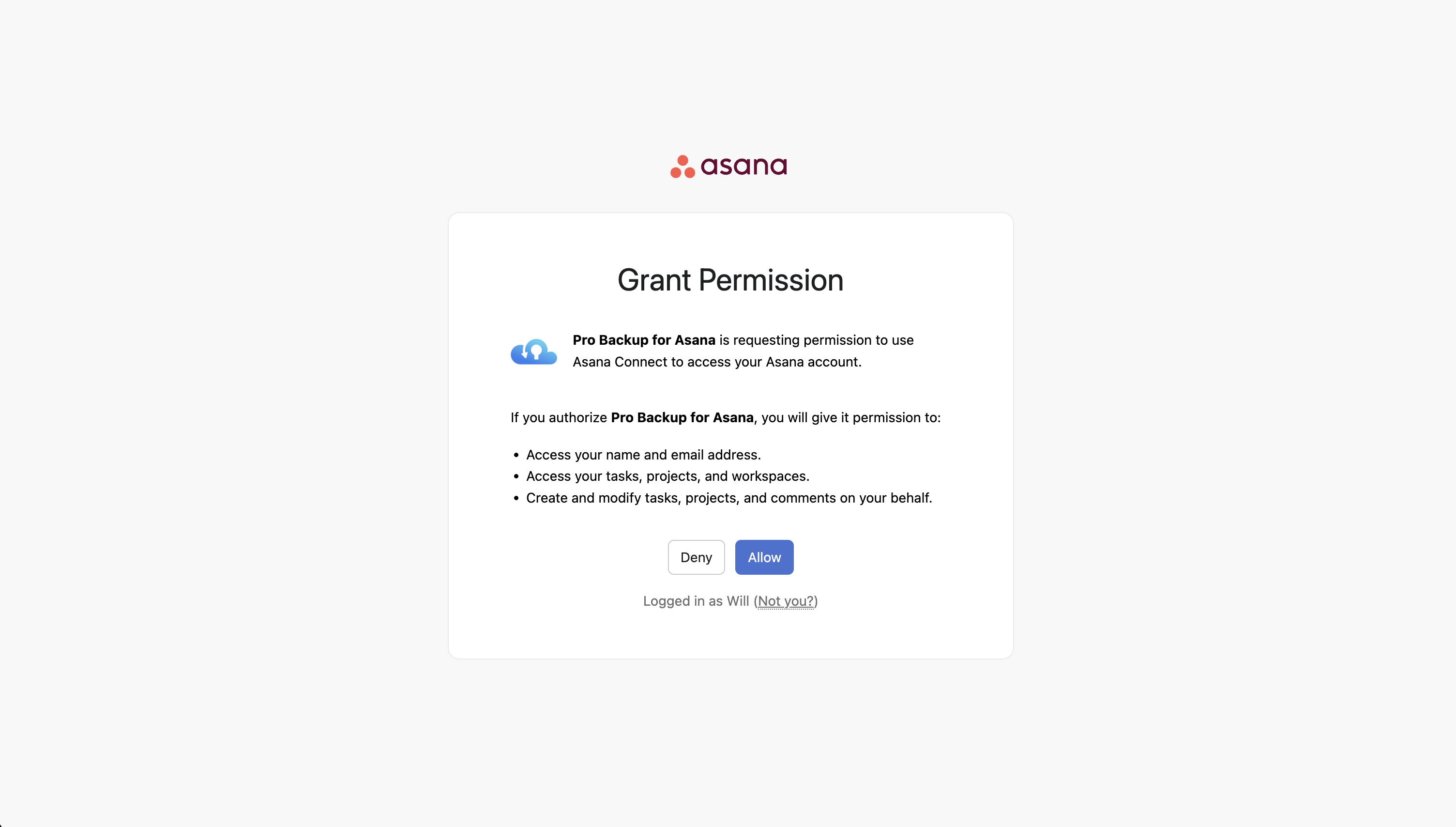
- On the next step of the onboarding wizard, select the workspaces you would like to back up.
- Click on Start backup to start your first backup.
What Happens Next?
After you confirm, the initial backup of your selected Asana workspaces will begin automatically. Our backup app will fetch all relevant data types such as projects, tasks, comments, files and custom fields. Depending on the size of your Asana account, the initial backup can take up to a few hours. You will be notified by email as soon as the first backup is complete.
Click on Go to Asana to view the projects that are already backed up.
That’s it! Your Asana account is now protected with daily automated backups, ensuring your data is safe and easily restorable when you need it most.
Inviting other Asana users
During the onboarding flow of Asana, you choose which workspaces you want to back up. Once the initial backup is started, we can back up all data that your Asana account has access to. This means that any workspaces or private projects that you don’t have access to, will not be included in the scope of the backup. You can solve this by inviting other team members to your account.
- In ProBackup, go to Settings > Users.
- Click on Invite Team Member and confirm the popup.
Each invited team member needs to create their own ProBackup account and authorize ProBackup to their Asana account. Once they’ve done this, then their added workspace and private projects will be added to the backup scope.

Guest post: Interview With SafetyDetectives

In the world of digital transformation, data is the lifeblood of businesses. Whether it’s customer information, project details, or vital internal communications, the importance of safeguarding this data cannot be overstated. However, many companies mistakenly assume their cloud apps provide adequate protection, only to find themselves scrambling when critical information is lost. Enter ProBackup, a company dedicated to filling this gap with a straightforward yet powerful solution for backing up and restoring data from popular project management and CRM apps.
SafetyDetectives recently had the opportunity to sit down with Willem Dewulf, CEO of ProBackup, to discuss the inspiration behind founding the company, what sets them apart in a crowded market, and the common misconceptions businesses have about data backups. Willem’s journey from experiencing a data loss firsthand to building a specialized backup service provides invaluable insights into why robust data protection is crucial for businesses of all sizes. Read on to learn more about ProBackup’s unique approach, their commitment to data security, and advice for companies just beginning to think about their backup strategies.
| Can you share the story behind the founding of ProBackup? What inspired you to create this service?
The idea for ProBackup came from a personal experience. Years ago, we ran a SaaS company and used Podio for our internal project management. One day, one of our clients accidentally deleted a significant amount of data, including apps and accounts. When we tried to recover it, we discovered that Podio’s backup solution was inadequate. They could only provide a raw file with basic records, but none of the metadata, comments, or files were recoverable. That was a huge problem.
This experience made us realize the need for a robust backup solution. As a tech company, we decided to build one ourselves. That was about eight years ago. Over the years, we went through several iterations of our backup app for Podio, and around four years ago, we launched Pro Backup as a dedicated service focused on providing quick and easy backup and restore solutions for popular SaaS apps. Our goal was to keep it simple, avoiding unnecessary functionalities and focusing on what really matters—backing up data and making it easily restorable.
| What sets ProBackup apart from other data backup solutions on the market?
There are a few key differences. Firstly, most cloud backup solutions target major suites like Office 365, Google Workspace, Salesforce, or HubSpot. We, on the other hand, focus on popular project and CRM apps like Trello, Asana, and ClickUp. We aim to be the best in this niche rather than competing in the crowded Office 365 space.
Secondly, our app is incredibly easy to use. You can start backing up your cloud apps in just a few minutes. We design our onboarding process to be as straightforward as using the apps we’re backing up, like Trello or Asana. Once connected, everything happens automatically—backups run every 24 hours without the need for manual scheduling.
Finally, our pricing model is a significant differentiator. We offer a simple, transparent pricing structure with three plans: Plus, Pro, and Premium. Unlike our competitors, who often charge separately for each app integration, we allow you to back up multiple apps with a single subscription. This makes it easier for customers to understand what they’re paying for and offers great value without the complexity of managing multiple subscriptions.
| What are some common misconceptions businesses have about data backups?
Two big misconceptions come to mind. First, many businesses assume that their cloud apps have built-in, foolproof backup solutions. They think, “If we delete something, the provider can recover it.” But that’s not always true. It’s surprisingly easy to permanently delete data in many apps. Additionally, some apps, like Trello, lack the necessary controls to limit actions by certain employees. For example: Anyone with access can delete a whole Trello board and empty the trash bin with just a few clicks, making the data irretrievably lost.
The second misconception involves the limitations of backing up through public APIs. We can only back up what the app’s public API allows us to access. This means certain data types, like automations or specific metadata, might not be backed up because they’re not available through the API. We strive to be transparent about these limitations with our customers, but it can still lead to disappointment when users expect a full, 100% backup.
| How does ProBackup ensure data security, especially when dealing with sensitive company information?
Security is our top priority. From the start, we’ve made it a core part of our company culture. We use the latest encryption technologies and leverage the security features provided by AWS, as we store our data on S3. Internally, we follow strict security protocols. Access is tightly controlled, and all team members undergo regular training on data security. Even our admin access is restricted; we limit the number of accounts any admin can access daily, and we have alerts in place for any unusual activity. Most importantly, the majority of the data isn’t accessible to our team by default. We’ve designed our processes to minimize risk at every level.
| How do you see AI and machine learning impacting the future of cloud backups?
For us, AI is mostly a tool to enhance productivity and speed up certain processes. We use AI to assist with coding and other tasks, but when it comes to data backups, we don’t see an immediate impact. Our data backups are highly secure, and we don’t view them as a data source for machine learning. The complexity involved in developing backup integrations for new SaaS apps still requires a lot of human input and understanding. We’re not at a point where AI can fully automate this process. So, while AI is valuable, we don’t currently see it revolutionizing our core backup functions.
| What advice would you give to small businesses just starting to think about their data backup strategy?
It depends on the size of your business, but as soon as you start relying on any cloud app to manage your business, you should consider securing that data. Start by thinking about worst-case scenarios. In the beginning, manual exports on a weekly basis might suffice. But as you grow, switching to a daily automatic backup solution makes more sense. We’ve seen many small businesses come to us in panic after losing critical data, only realizing the importance of backups after the fact. Just like you wouldn’t wait to get car insurance after a crash, don’t wait to set up a backup after losing data. It’s crucial to have a plan in place from the start to avoid potential disasters.
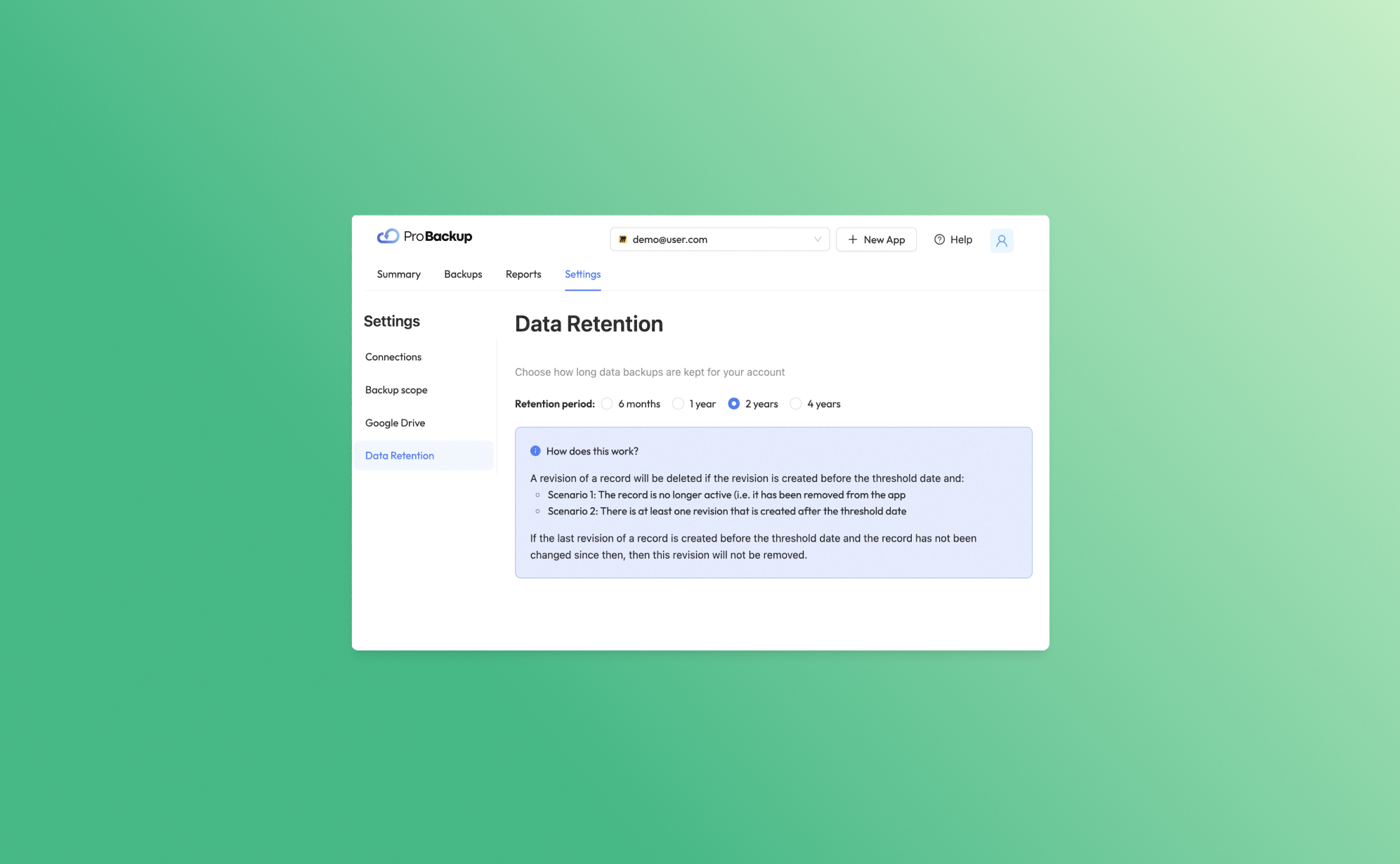
Introducing Our New Data Retention Feature

At Pro Backup, we are dedicated to providing top-tier cloud backup solutions tailored to meet the diverse needs of our B2B clients. Today, we are thrilled to unveil a powerful new feature designed to give you greater control and flexibility over your data management: Data Retention. This feature allows you to determine how long we keep your data backups, ensuring you can comply with various regulatory requirements and internal policies.
Understanding Data Retention
Data Retention is a feature that enables you to manage the lifecycle of your data backups. Each time an item is created or changed in your application, a new revision of that record is created. Depending on your subscription plan, the retention period for these revisions varies:
- Plus Plan: Revisions are kept for up to 6 months.
- Pro Plan: Revisions are kept for up to 2 years.
- Premium Plan: Revisions are kept for up to 4 years.
Tip: Users on the Pro and Premium plans can further customize their data retention period by navigating to Settings > Data Retention. This means you can set shorter retention periods if required, offering you greater flexibility.
What Happens with Older Revisions?
Our data retention policy ensures that your storage is optimized by removing unnecessary older revisions under certain conditions. Here’s how it works:
Inactive Records
If a revision is created before the threshold date and the record is no longer active (i.e., it has been deleted from the app), that revision will be deleted.
Example: Suppose you have a client record that was last updated on January 1st, 2020, and you are on the Pro plan. If you delete this client record on February 1st, 2021, the revision from January 1st, 2020, will be removed since it is no longer active and past the threshold date of January 1st, 2022.
Active Records
If a revision is created before the threshold date but there is at least one newer revision created after the threshold date, the older revision will be deleted.
Example: You have a project file that was revised on January 1st, 2020, and again on January 1st, 2021. If you are on the Pro plan, the older revision (from 2020) will be deleted after January 1st, 2022, since there is a newer revision from 2021.
If the last revision of a record was created before the threshold date and the record has not been modified since then, this revision will remain. This ensures that the most recent state of your records is always preserved.
Subscription and Trial Policy
It's important to note that in the event of an expired trial or a canceled subscription, your data backups will be removed within 10 days. This policy helps us maintain a streamlined and efficient backup environment.
We are confident that the Data Retention feature will significantly enhance your data management capabilities, providing you with the necessary tools to align with your data governance strategies. Should you have any questions or need assistance configuring your data retention settings, our support team is always here to help.
Thank you for entrusting Pro Backup with your cloud backup needs. Stay tuned for more exciting updates and features that will continue to empower your business!
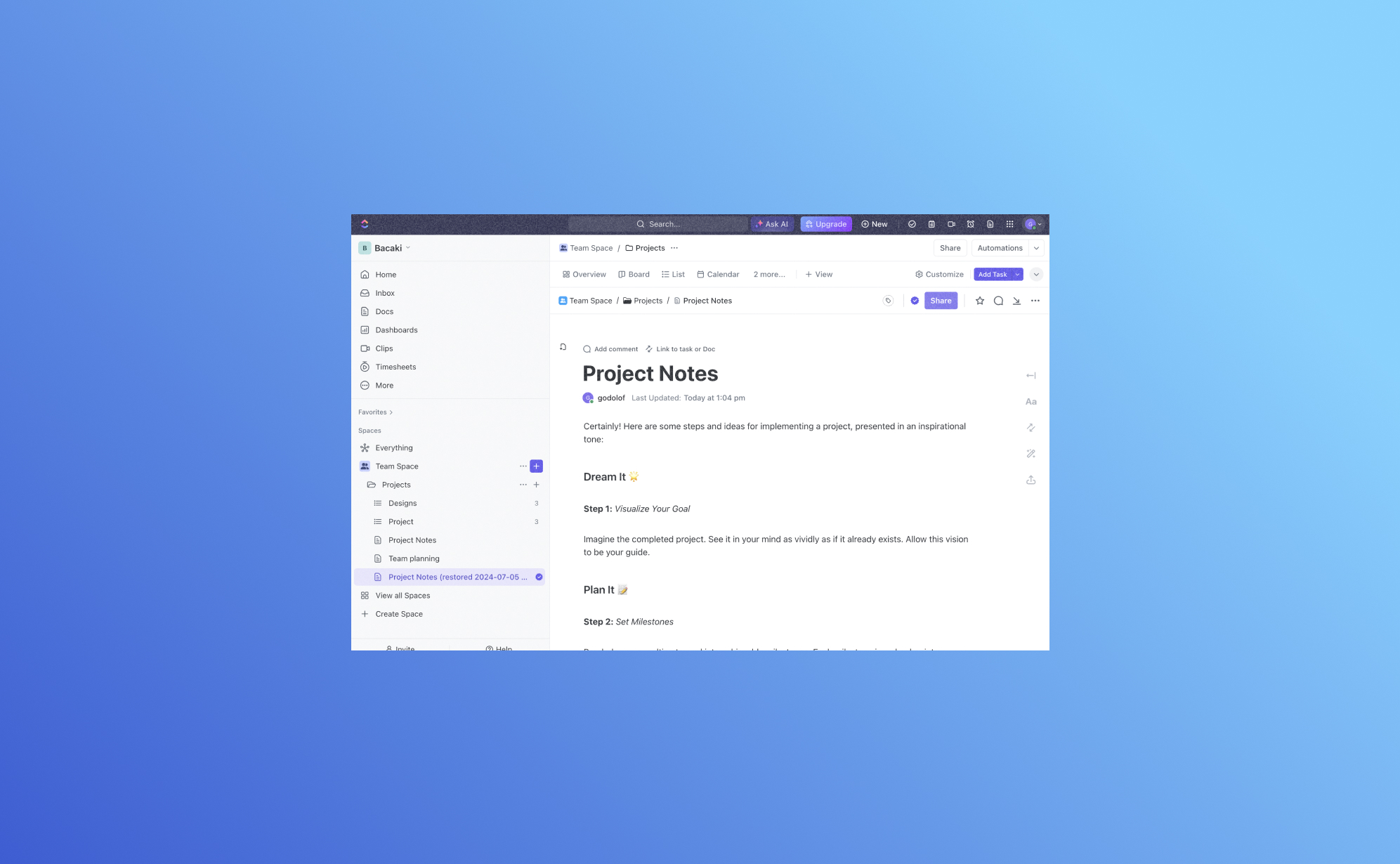
Exciting Update: Backup and Restore ClickUp Docs with Pro Backup

We are thrilled to introduce a significant enhancement to Pro Backup: you can now back up and restore your ClickUp Docs!
Why back up your ClickUp Docs?
ClickUp Docs is a powerful feature within the ClickUp ecosystem, enabling teams to create, edit, and collaborate on documents seamlessly. From project plans and meeting notes to knowledge bases and team documentation, ClickUp Docs plays a vital role in organizing and storing critical information. Losing this data can be detrimental to your business operations. That’s why having a reliable backup and restore solution is crucial.
Thanks to a recent update to ClickUp's API, Pro Backup can now extend its robust backup and restore capabilities to include ClickUp Docs. This way you can ensure that all your valuable documentation is securely backed up and easily recoverable, minimizing the risk of data loss and ensuring business continuity.
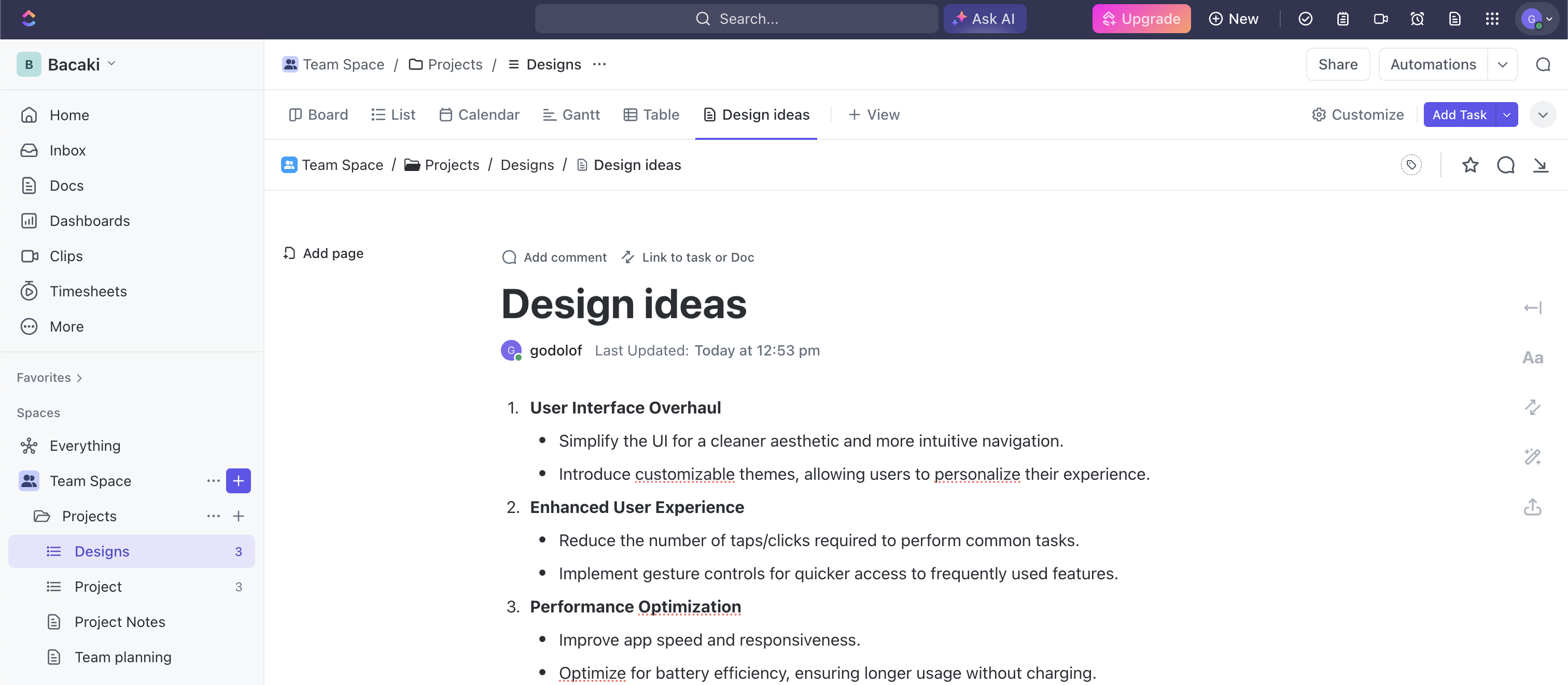
How to get started?
Setting up the back up of your ClickUp Docs is a very quick & easy process. Simply visit this link to create your Pro Backup account and add ClickUp as a backup to your account. Here's a youtube tutorial on how you start backing up your ClickUp data. Once set up, your ClickUp Docs will be backed up regularly without any need for manual intervention. This ensures that your data is always up-to-date and secure.
If you already have an active backup running for your ClickUp account, then your Docs will be automatically added to the backup scope.
How to view your ClickUp docs?
To access your Docs, go to the Backups page and click on Docs in the left side pane.

In the table you will see the your ClickUp Docs created within your account. We collect and backup Docs an each level: workspace, list & task. To preview your in Doc directly in Pro Backup, click on Show Doc. This will open a popup with the latest version of your ClickUp Doc. You can look up a previous version of your document by changing the version date above the table.

How to restore your ClickUp docs?
To recover and restore a previous version of any your Docs, select the item in the table and click on restore.
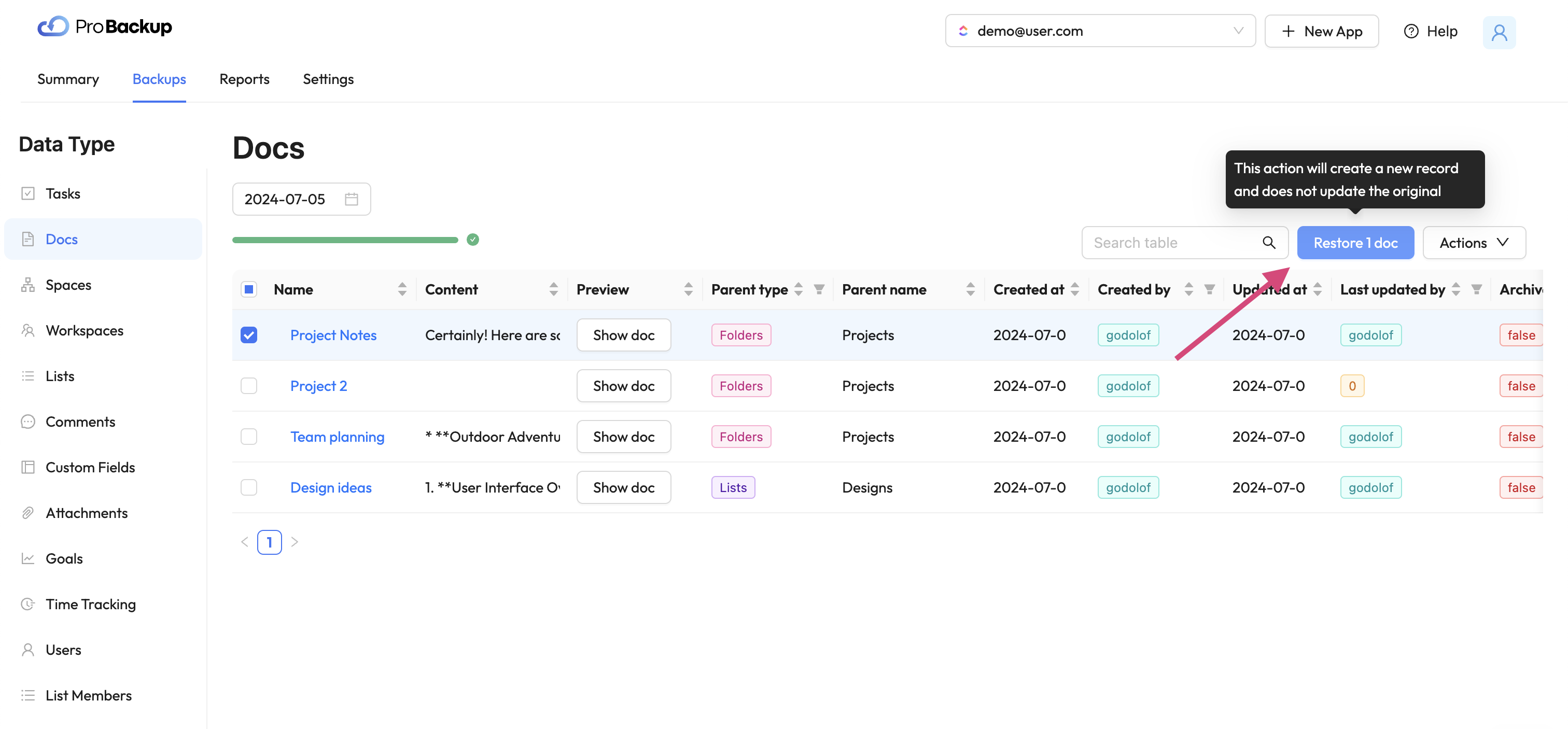
Once you have restored a Doc, a new copy of this ClickUp Doc will be created in your account. The name of the restored document will be appended with the restore date. The restore functionality allows you to recover Docs that were deleted from your ClickUp account, but also Docs that are still available. For example: It can be useful to restore a previous version of a Doc, even when the latest version is still available in your account.

Start Protecting Your ClickUp Docs Today
Don’t wait until it’s too late. Start protecting your ClickUp Docs with Pro Backup today and enjoy the peace of mind that comes with knowing your critical documentation is safe. Our new backup and restore feature is designed to provide you with a robust and reliable solution to safeguard your data.
For more detailed instructions and support, visit our help center.
Stay secure and keep your ClickUp Docs protected with Pro Backup!

How to Back Up Your Slack Channels?
.png)
If your team uses Slack, you know it’s more than just a chat tool - it’s where important conversations, files, and decisions happen every day. But what would happen if any of that data disappeared? Mistaken deletions, account changes, or even accidental closures can result in the loss of critical information. That’s why it’s worth having a reliable backup strategy in place for your Slack channels.
In this post, we’ll walk you through why it’s essential to back up Slack and share simple ways to protect your team’s conversations.
Why Backing Up Your Slack Data is Essential
While Slack stores a lot of information, there are still good reasons to have your own backup:
- Data Loss Risks – We’ve all seen it happen: messages or files get accidentally deleted. Having a backup means you can restore that lost data with just a few clicks.
- Compliance Needs – Certain industries, like finance or healthcare, require records of communication for compliance. Backups ensure you have data stored long-term to meet these requirements.
- Business Continuity – When disruptions occur, it’s comforting to know that you can recover Slack data without missing a beat.
What ProBackup Covers
With ProBackup, you don’t have to worry about losing the most important parts of your Slack workspace. Here’s what we back up:
- Users – We capture the information of all workspace members.
- Channels – ProBackup covers both public and private channels, keeping track of all those valuable team conversations.
- Threads – Preserve context by backing up threaded conversations.
- Messages – Every message in your channels is backed up, so nothing slips through the cracks.
- Attachments – Files, images, and any other media shared in channels are backed up too.
- Direct Messages – We back up direct messages (DMs) that the workspace admin has access to, so you don’t lose any critical one-on-one discussions.
With this coverage, ProBackup gives you the peace of mind that, if needed, you can restore complete conversations and files quickly.
Three Ways to Back Up Slack Data
Let’s take a look at the main ways to create Slack backups:
1) Manual Exports
Slack allows workspace owners and admins to export data. To do this:
- Go to Settings & Administration > Workspace Settings in the Admin Dashboard.
- Head to Import/Export Data and choose Export to download your public channel messages and files.
Manual exports have some limitations, though. For example, direct messages and private channels aren’t always included on the free and standard plans, and the export format (JSON) requires extra steps if you need to review or restore content.
2) Automated Daily Backups with ProBackup
For a set-it-and-forget-it solution, ProBackup offers automated daily backups. Once you set up ProBackup, it will back up your Slack data daily without any extra work on your end. This includes:
- Continuous Backup – You won’t need to manually export or worry about missing anything, as ProBackup does this daily.
- Access Control – Customize who can access or restore the data, which is helpful if only certain admins need that responsibility.
- Customizable Retention Policies – Choose how long to retain data to meet your compliance or archival needs.
Daily backups keep your Slack data fresh and up to date, so your team’s conversations are always protected.
3) Slack’s Built-In Retention Policies
For organizations on Slack’s Enterprise Grid, there are advanced retention policies that allow you to schedule deletions of messages based on compliance requirements. While these are useful for compliance, they aren’t a true backup solution, as data is deleted once the retention period expires.
Best Practices for Slack Backups
To ensure you’re covering all your bases:
- Use Daily Backups: ProBackup’s daily automated backups make sure your Slack data stays safe without requiring any manual steps.
- Define Your Backup Scope: Identify the channels and types of messages (public, private, DMs) you want to protect.
- Consider Data Privacy: Be mindful of data privacy standards, especially if you’re backing up sensitive information.
- Test Restores: Run periodic tests to confirm that you can restore data smoothly if you need it.
Protect Your Slack Data with ProBackup
At ProBackup, we specialize in making sure your team’s data across SaaS tools, including Slack, stays safe and accessible. ProBackup offers:
- Complete Coverage – We back up channels, messages, threads, files, and DMs that you need.
- Ease of Use – Quick setup and easy integration with your worksfdfdfdfdpace.
- Security – We store your backups securely, meeting industry encryption standards.
Start protecting your Slack conversations today with ProBackup and stay prepared for whatever comes your way.
.jpg)
How to secure your Trello boards: A step-by-step guide to backing up Trello

Trello is a powerful, visual collaboration tool that uses boards, cards and lists to help teams and businesses organize and prioritize their projects and collaborate effictively.
As Trello can be used for a wide range of projects, from simple to-do lists to complex workflows, it's a popular choice for many businesses across all verticals. While you rightfully trust cloud apps like Trello to be secure and reliable, managing your team's work in one cloud app opens the door to potential risks. It can expose your team to issues such as accidental data deletion from human error, malicious actions by disgruntled employees, or data loss due to technical glitches and downtime. Losing an important Trello card or board can set your business back hours, or even days.
To gain peace of mind and protect your work, implementing an automated backup solution is essential. This guide will walk you through setting up a daily, automated backup for your Trello boards using ProBackup.
Part 1: Create a ProBackup Account
Getting started is easy and comes with a 7-day free trial.
- Visit the ProBackup for Trello page by navigating to https://www.probackup.io/backup/trello
- Click on the Start free 7 day trial button.
- Select Trello as the app you would like to back up and click Continue
- Fill in your email, first name, and last name, then click Continue.
- Verify your email address by following the instructions sent to your inbox.
Part 2: Connect Trello and Start Your First Backup
Once your ProBackup account is created and verified, you can connect your Trello account.
We recommend that you sign in to the right Trello account first, before connecting your account.
- In ProBackup, click on Sign in with Trello. This will redirect you to Trello to authorize the connection. If you are not signed in to Trello, then you will have to sign in first.
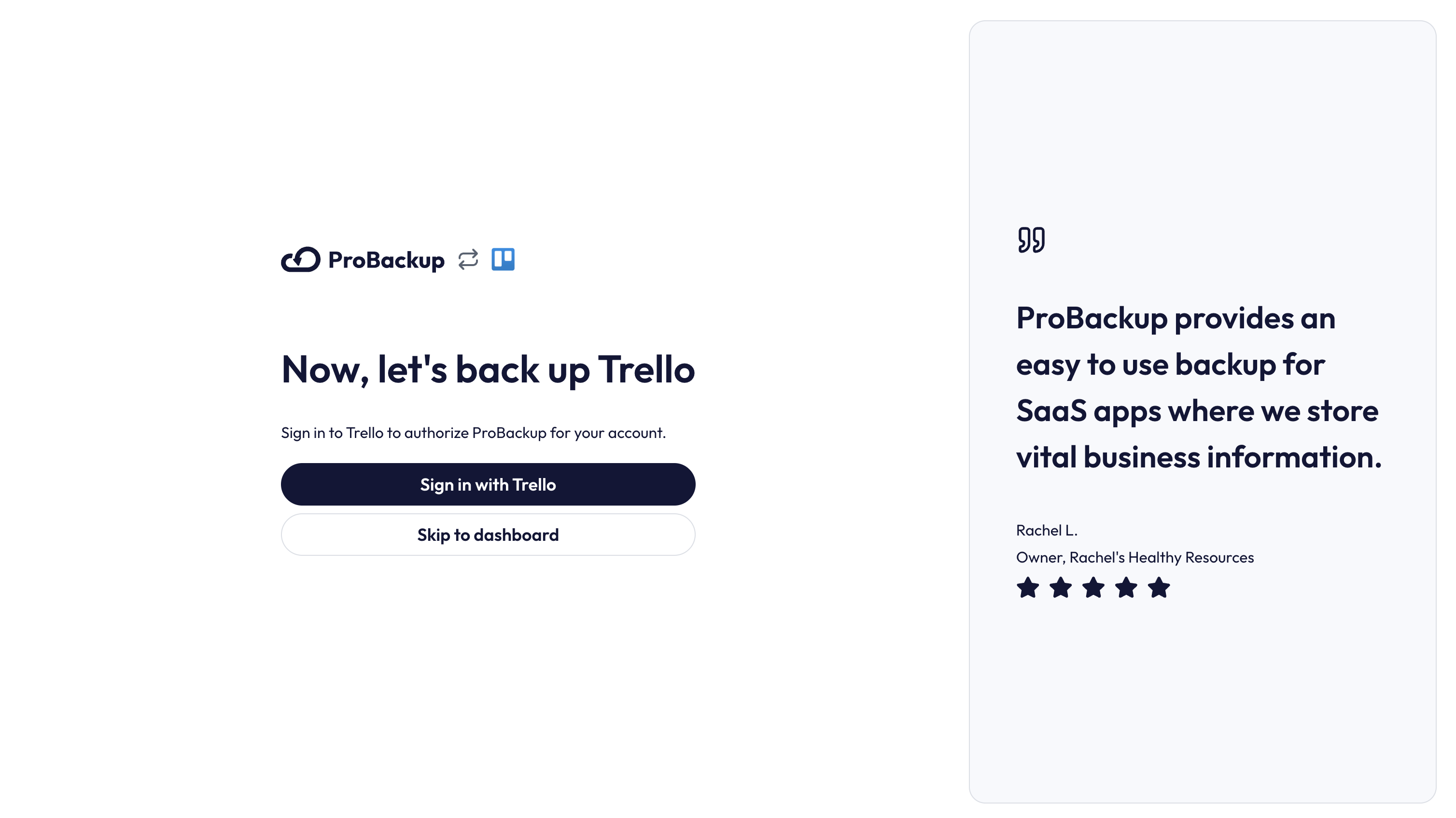
- On the Trello authorization page, scroll down and click on Allow.

- On the next step of the onboarding wizard, select the workspaces you would like to back up.
- Click on Start Backup to start your first backup.
What Happens Next?
After you confirm, the initial backup of your selected Trello workspaces will begin automatically. Our backup app will fetch all relevant data types such as cards, files, comments and check lists. Depending on the size of your Trello account, the initial backup can take up to a few hours. You will be notified by email as soon as the first backup is complete.
In the meantime, you can click on Go to Trello to view the cards that are already backed up.
That’s it! Your Trello account is now protected with daily automated backups, ensuring your data is safe and easily restorable when you need it most.
Inviting other Trello users
During the onboarding flow of Trello, you choose which workspaces you want to back up. Once the initial backup is started, we can back up all data that your Trello account has access to. This means that any workspaces or private boards that you don’t have access to, will not be included in the scope of the backup. You can solve this by inviting other team members to your account.
- In ProBackup, go to Settings > Users.
- Click on Invite Team Member and confirm the popup.
Each invited team member needs to create their own ProBackup account and authorize ProBackup to their Trello account. Once they’ve done this, then their workspaces and personal boards will be added to the backup scope.

Asana Vs. Trello Vs. Monday.com: Which Project Management Platform Is Right For You?
.png)
When it comes to project management, there are a lot of tools on the market. While having options is great, the truth is that all of these competing platforms can make choosing the right project management service for your team feel like searching for a needle in a never-ending haystack.
That’s where we come in.
Today, we’re taking a deep dive into three of today’s leading project management platforms: Asana, Trello, and Monday.com. Not only that, we'll be giving you insight into the types of teams and projects best suited to each platform so that you can make an informed decision about your operation's future.
Let’s get straight to it!
Asana
As a legacy project management platform with more than 15 years in the marketplace, Asana offers teams endless options for collaboration, automation, and creating a fully integrated workflow. With both free and paid plan options, Asana makes it easy for organizations to customize their plans based on the size of their team, making it a strong choice for operations looking to scale.
Pros
100+ Software Integrations
Tired of constantly switching between platforms in your workflow? Asana eliminates speedbumps in your operation with more than 100 software integrations featuring the tools your team already knows and loves, like Microsoft Teams and Google Workspace.
Customized Automation
Your workflow is about your rules. That’s why Asana strives to offer more customization opportunities for its users, allowing you to automate your process based on your own criteria. This feature helps to take the stress out of routine tasks and gives your team the freedom to focus on more pressing jobs.
Multiple Views
From Lists and Timelines to Calendars and Progress Tracking, Asana allows all users to access multiple viewpoints for every single task. Ultimately, this leads to fewer errors in your workflow and greater prioritization for your most high-stake projects.
Who It’s For?
Asana is a versatile platform for teams of every size, but we think this tool works best for agile organizations with lean teams. In the free plan alone, Asana allows up to 15 users, with additional users costing just 10.99 per user per month beyond that point.
Cons
Since the paid version of Asana charges per user each month, this platform can be somewhat pricey for larger teams or organizations who anticipate adding new members as they scale.
Trello
Launched in 2011, Trello gives users a unique approach to project management that fuses simplicity, efficiency, and collaboration all in one. Unlike other popular team-driven platforms, Trello features a Kanban-inspired layout that uses visual cues to encourage better organization and streamlined workflows. Simply put, Trello is a sleek, modern approach to project management that is easy and accessible for every member of your team.
Pros
List-Style Format
At its core, Trello is a list-making tool. Although that may sound restrictive in terms of managing projects, the platform allows users to create unique columns, boards, and project cards that can seamlessly be moved from one list to the next. This creates a visually-driven project-tracking system that takes the stress out of figuring out which tasks require the most attention.
User-Friendly Interface
Because Trello follows a simplified Kanban methodology for organization, the platform is naturally easy to use. In just a few clicks, team members can assign tasks, create sub-projects on each card, and move their work through the project pipeline without the need for additional tools or training.
Optimized For Mobile
One of the most alluring features of Trello is its mobile optimization, which allows teams to work more effectively from anywhere in the world. This makes it an ideal choice for teams with members who work remotely around the globe or who need to adjust their workflow while on the go.
Who It’s For?
Thanks to its simplicity, Trello is the ideal choice for teams who need to work quickly at moving projects through their pipeline and regularly onboard new members. Most importantly, Trello offers both a free plan and three paid tiers, allowing you to find the perfect price for your operation.
Cons
While we may love Trello for its list-style format, this can also make managing complex tasks more challenging and may require additional integrations to handle large-scale projects.
Monday.com
Despite being one of the newer project management platforms on the market, Monday.com has amassed a loyal following of users since its launch in 2019, and for good reason. This cloud-based platform offers some of the best customization and collaboration tools on the market, earning it plenty of recognition from organizations with diverse teams. Plus, Monday.com offers 24/7 live customer support for its users, a rarity in the project management space.
Pros
Visual Dashboards
When you need a quick snapshot of your project status, Monday.com has you covered. The platform uses visual dashboards to give you insight into all current projects and customizable Kanban, list style, and other views.
Real-Time Collaborations
Collaboration is the heart and soul of Monday.com’s project management approach, offering real-time collaboration tools that can be utilized by multiple team members at a time. This allows you to create custom access for specific users to edit tasks, assign collaborative projects, and everything in between.
Customization-Driven
Like Asana, Monday.com also leans heavily into customization and automation. This allows organizations to set their own rules and create a workflow unique to their tasks, and the platform has over 200 customizable project templates to help you get started.
Who It’s For?
Monday.com offers both free and flexible plans that go up to 16 per month, which makes it a great choice for small teams and entrepreneurs who are just beginning to grow their operations. However, thanks to its growing prominence in the market, we suspect that organizations of every size will soon be leveraging Monday.com’s benefits.
Cons
As Monday.com is still relatively new, the brand is continuing to evolve its approach to project management, which may result in hesitation from higher-ups and senior management.
Which Project Management Tool Is Right For You?
No matter the size and scope of your team, there are certainly plenty of project management tools designed to meet your needs. Whether you’re looking for a traditional approach to organizing tasks like Asana, a scaled-down alternative like Trello, or Monday.com’s innovative mix of both worlds, your team is sure t1o work more efficiently than ever before.

5 Ways to Increase Your Productivity with Monday.com
.png)
When you have five tasks due by the end of the day, three meetings to attend, and four follow-up calls to make, it's easy for your thoughts to get jumbled. Staying on top of your tasks and duties without a way to keep organized, the quality of your work can start to decline. One of the best ways to add order to your to-do list is with a work management app like Monday.com.
Below, we'll highlight some of the best features of Monday.com and help you see how to use it to ease your daily schedule. By optimizing your tasks, you'll find yourself accomplishing more in less time, thus freeing up valuable moments for the things that truly matter.
What is Monday.com?
Monday.com is a cloud-based work management tool that virtually connects team members and provides a flexible platform for all types of work. Designed to boost productivity and foster collaboration, it offers ways to delegate and track responsibilities for teams and businesses of all sizes.
Its user-friendly interface and customizable templates, like Kanban boards and Gantt charts, make it a popular choice for streamlined project management. This platform is best for groups looking to organize their work, track progress, and collaborate more efficiently in a centralized space.
1. Streamlining Workflow with Automation
Automation in platforms like Monday.com allows for the replacement of manual, repetitive tasks with automated processes. This shift saves time and minimizes the chance of human error. For example, when a task's status is updated, a notification can be sent to the relevant team members. With this, everyone is instantly advised about project updates, decreasing the frequency of manual follow-ups.
Automation allows for the uniform execution of routine tasks. This consistency helps maintain a smooth flow of operations and keeps team members focused on their core responsibilities. Monday.com facilitates better resource management. It promotes the allocation of tasks based on team members' availability or expertise, leading to a more balanced workload distribution and a more streamlined, error-free work function.
2. Enhancing Collaboration with Team Management Features
Monday.com's team management features are designed to foster a collaborative environment, making it easier for teams to work together efficiently, regardless of their location. One significant feature is the real-time communication capability. This allows team members to discuss projects, share updates, and solve issues directly within the platform. Doing so eliminates the need for lengthy email threads or external messaging apps, keeping all communication centralized and accessible.
Having a shared workspace where team members can view, edit, and manage tasks collectively maintains transparency. This keeps everyone on the same page and helps managers or task leaders monitor the status of each project. Similarly, team leaders can assign tasks to specific members and track progress to ensure accountability and evenly distribute the workload.
These collaborative features enhance teamwork and contribute to a more organized and productive work environment. By providing tools that facilitate easy communication and resource sharing, Monday.com can improve the overall efficiency of teams.
3. Customizable Workspaces for Tailored Efficiency
Customizable workspaces allow businesses to suit their online boards to their specific needs. This individualization extends across the whole platform, including project boards, workflows, and dashboards.
For instance, a marketing team might customize their board to track campaign progress with columns for campaign stages, budgets, and deadlines. However, a software development team can set up a board that follows their sprint cycles with columns for sprint planning, development, testing, and deployment.
Because customization takes time that companies often don't have, Monday.com offers a wide variety of templates, like a content planning template for editorial teams or a project roadmap template for project managers. These can be further tailored to meet specific project requirements. The ability to adjust these elements means that every team, regardless of its size or the complexity of its projects, can set up a workspace that aligns perfectly with its operational requirements.
4. Integration with Other Tools
Integrating management apps with other popular tools and services allows for seamless synchronization and data sharing across different platforms, ensuring that users can maintain a cohesive workflow without constantly switching between applications. Monday.com integrates with common communication tools like Slack and Microsoft Teams, making group collaboration more streamlined. It also connects with cloud storage services such as Google Drive and Dropbox, simplifying file sharing and access.
These integrations save time and reduce the potential for errors from transferring data manually between systems. They enable a more efficient workflow, where information updates in one platform are automatically reflected in others.
5. Tracking and Reporting Data
While many business management apps offer data analytics features, they don’t all add up to what insights Monday.com can provide. Some of the specific analytics tools used in Monday.com include:
- Overview Widget: Follow the status of all projects based on the number of remaining assignments. The widget visually depicts whether projects are on track, completed, or at risk by displaying an easy-to-understand progress bar next to each assignment.
- Performance Insights View: This feature tracks how long items have been spent in specific statuses or phases, offering valuable data on team tasks and project progression. It's similar to the Overview, but more specific to timeframes.
- Search Everything: Like the “Find” function on documents, the Search Everything tool allows you to find any keyword in your Monday.com board. Say you need to find your assigned projects - simply search your name. Alternatively, try the word "Stuck" to locate the tasks that take longer than expected to complete.
- Word Cloud: This visualization tool turns textual data into more meaningful insights, highlighting key terms in a visually impactful way. It tells you which key terms are mentioned the most across your board.
There are dozens of additional tools on Monday.com to analyze business performance. Each one leads to more informed decisions and streamlined processes by enhancing workflow management and productivity.
Unlocking Productivity and Collaboration with Monday.com
When you want to add a little - or a lot - more order to your company’s workflow, Monday.com may be your tool. Its host of features can help enhance team collaboration and boost overall productivity.
As you use Monday.com, though it's cloud-based, don't let unexpected data loss hinder your team's progress. To safeguard your work, consider the added security and peace of mind with Pro Backup. This way, all your content and sensitive information is safe and retrievable, no matter what happens.
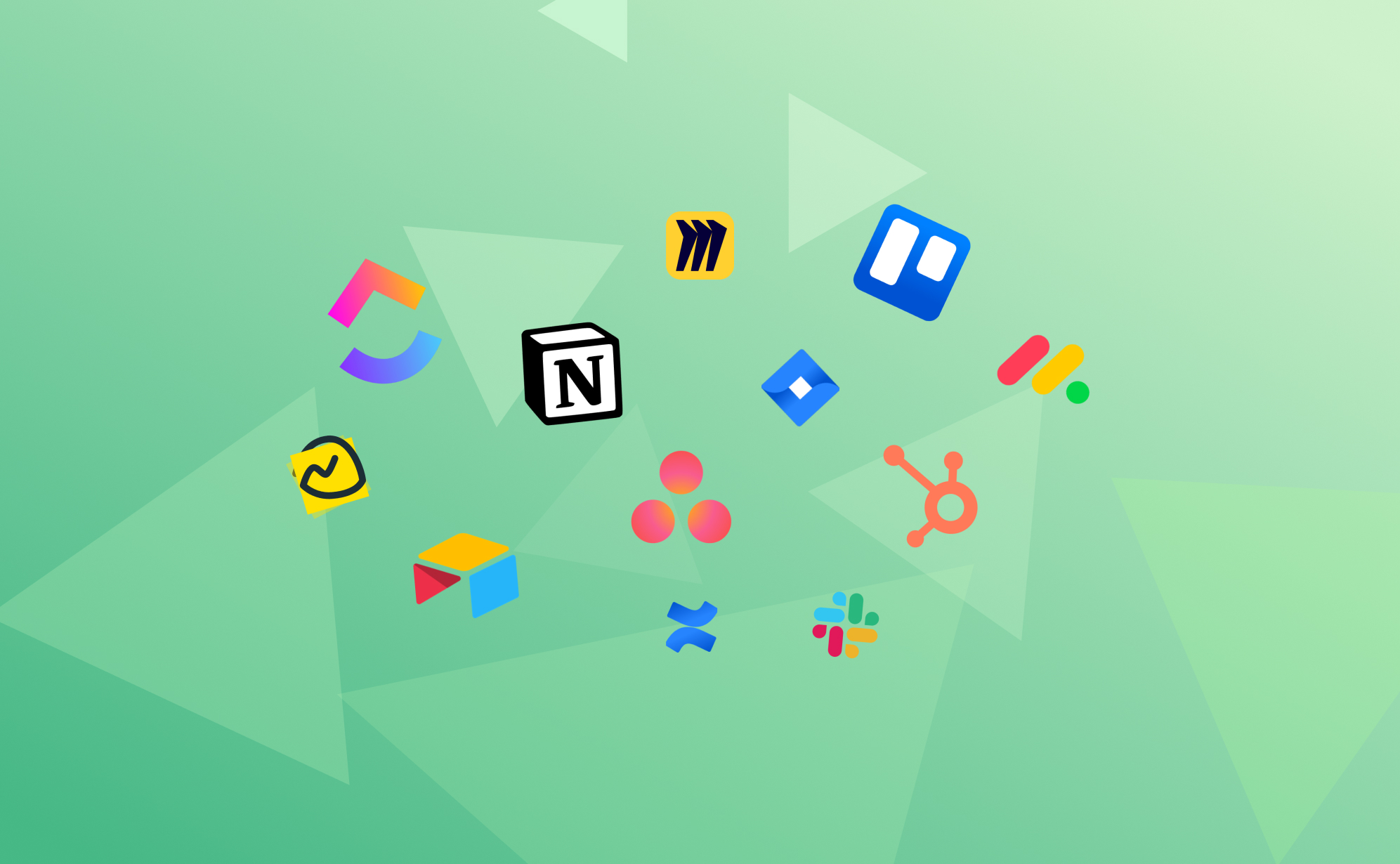
The 7 Best Project Management Apps in 2024

In my role as product manager for Pro Backup I work a lot with the project management apps that we integrate with: Not only do we explore their core features to ensure a deeply-integrated backup solution but we also keep track of their new features and updates. We speak with a lot of implementation partners about their needs and requests, which gives us a good grasp of the strengths and weaknesses of the most popular project management apps.
With an array of options at our fingertips, choosing the right tool can significantly enhance productivity and streamline workflows. In this article we wanted to give an overview of the best tools currently dominating the market, each excelling in unique ways. Whether for data management, automation, or collaborative whiteboarding, we've got the insights to help you make an informed choice in this digital era.
Why Use a Project Management App
In our competitive environment of digital outreach, the use of a project management app has become more of a necessity than a luxury. These productivity platforms offer many benefits that streamline workflows, enhance productivity, and foster collaboration, regardless of your team's size or industry. Some of the top reasons you may consider utilizing a management app include:
- Enhanced Organization: Apps provide a structured platform to manage tasks, projects, and deadlines. They allow you to organize work into manageable segments, ensuring nothing falls through the cracks. This organization is crucial for keeping track of multiple projects and meeting deadlines.
- Improved Communication and Collaboration: These apps often include tools that facilitate better team collaboration. Whether assigning tasks, sharing updates, or giving feedback, everything happens in one place, reducing the need for lengthy email threads and meetings.
- Accessibility and Flexibility: Cloud apps have cloud-based functionality, meaning they offer the flexibility to access your work anywhere and anytime. This accessibility is essential for remote teams or individuals who travel frequently.
- Time Management and Efficiency: By providing an overview of tasks and deadlines, these apps help prioritize work, leading to better time management. Many of these cloud apps also include time-tracking features, offering insights into time spent on each task, which is valuable for productivity analysis.
- Data-Driven Decision Making: Many of these productivity platforms have reporting tools, providing data and insights on project progress, team performance, and resource allocation. This information is vital for making informed decisions and strategizing future projects.
Project management apps are the backbone of modern, efficient, and practical work methods. They simplify task management and contribute to a more organized, collaborative, and data-driven work culture.
Task Management Tools with Asana

Asana is an extensive project management tool that excels in organizing work into manageable tasks and projects. It offers various views, including lists, calendars, timelines, Gantt charts, and Kanban boards, making it versatile for different team needs. Asana enables effective top-down task delegation, starting by defining goals & milestones, to then structure your projects with clear due dates and responsibilities.
Its custom fields feature allows for personalized task organization, facilitating easier sorting and filtering. Additionally, Asana provides real-time status updates, time tracking, and reporting dashboards, offering insights into team progress. It supports automated workflows, resource management, and integrates with various popular tools, enhancing overall team coordination and efficiency.
Prioritization Tactics with Trello
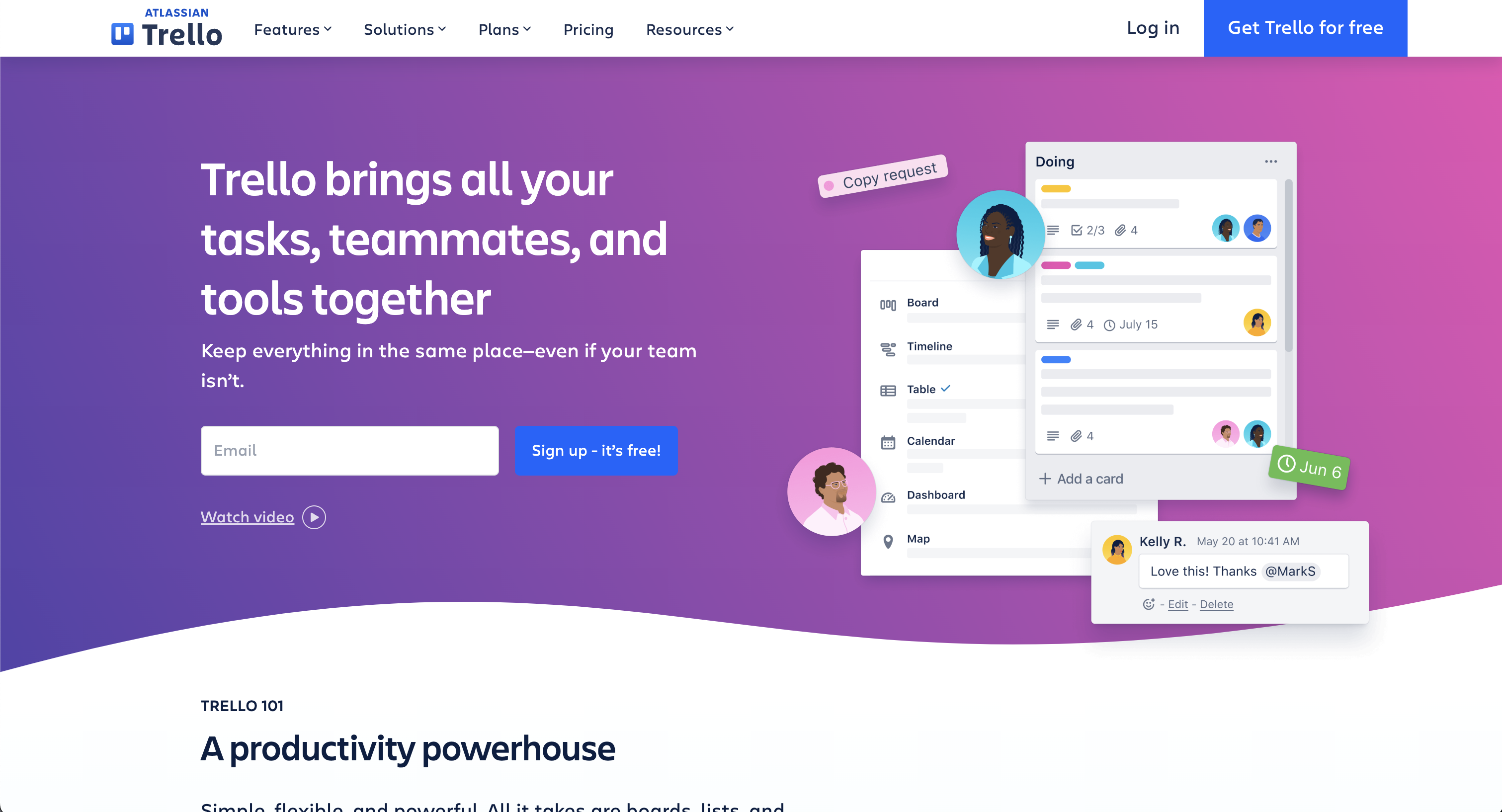
Trello is a versatile project management app known for its ease of use and visual approach to organizing projects. It employs a the classic Kanban system with cards and boards, allowing teams to create, assign, and track tasks visually. These days many apps offer a similar kanban option but we think the Trello's Kanban system is the most fun to work with. Trello's flexible setup is ideal for various methodologies, including Scrum and Kanban, making it suitable for a wide range of projects and teams.
Its features include customizable boards, lists, and cards, along with integrations with other popular tools, enhancing its functionality. Trello's simplicity and visual appeal make it a popular choice for teams prioritizing ease of use and clear communication.
Doing it All with ClickUp

ClickUp stands as a multifaceted project management tool, offering a suite of features to cater to diverse work needs. It's highly customizable, with over 35 ClickApps to tailor task management. Key features include nested subtasks, checklists, time tracking, voice & video recording, and a variety of views like List, Board, and Calendar.
ClickUp enhances team collaboration with real-time chat, document sharing, and proofing tools. It also excels in automation, offering over 50 actions to streamline workflows. It even offers features like video recording and whiteboards. The platform integrates seamlessly with more than 1,000 tools, making it a top choice for adaptable project management, remote work, and team collaboration. With all of these ClickUp is making good on its promise to build "one app to replace them all". If you want avoid switching apps too often, then ClickUp might be the ideal solution for you.
Visual Representation with Notion
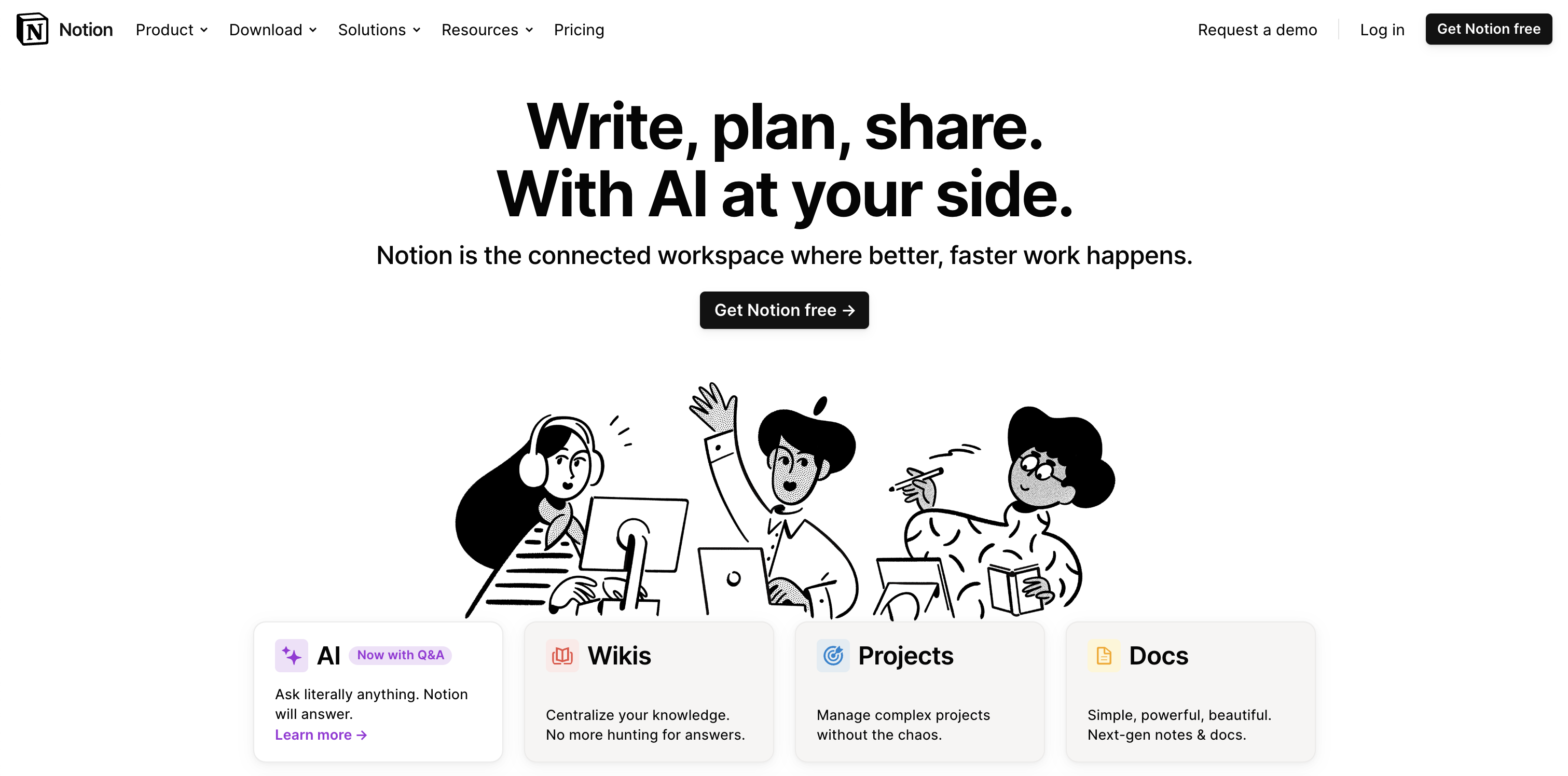
Notion is renowned for its exceptional visual dashboards, which allow for a highly personalized and flexible project management experience. Its interface supports intricate project planning and tracking with customizable tables and timeline views. Notion's strength lies in its ability to represent complex information visually, making project oversight more intuitive and accessible.
The platform's versatility extends to managing tasks with calendar views, embedding diverse content types, and offering a cohesive workspace that can adapt to various project requirements. This visual approach ensures a clear and engaging overview of projects, enhancing team collaboration and productivity.
Present Data Sets with Airtable
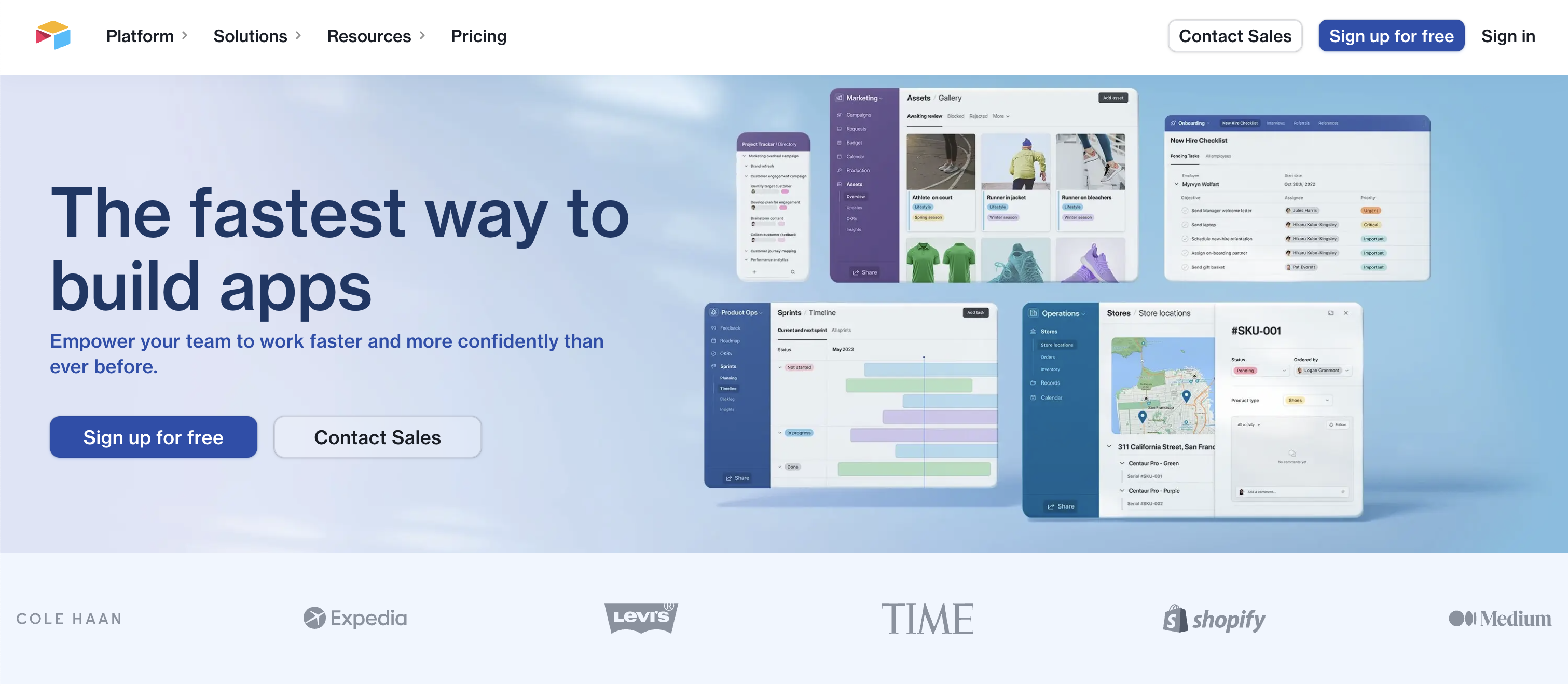
Airtable excels in managing complex data sets and creating linked tables, making it a powerful tool for data organization and analysis. It offers the flexibility of a database with the ease of a spreadsheet. Users can customize fields to store various types of data, link records between tables to show how data is related, and create views that display this information in meaningful ways (e.g. table, kanban, calendar).
Airtable's rich field types, like checkboxes, dropdowns, and file attachments, enhance its capability to handle diverse data needs, making it ideal for detailed project management and comprehensive data analysis. Its focus on the table view make Airtable the ideal candidate when you have to deal with a higher amount (let's say more than 100) records in a project or base.
Automate Your Work with Monday
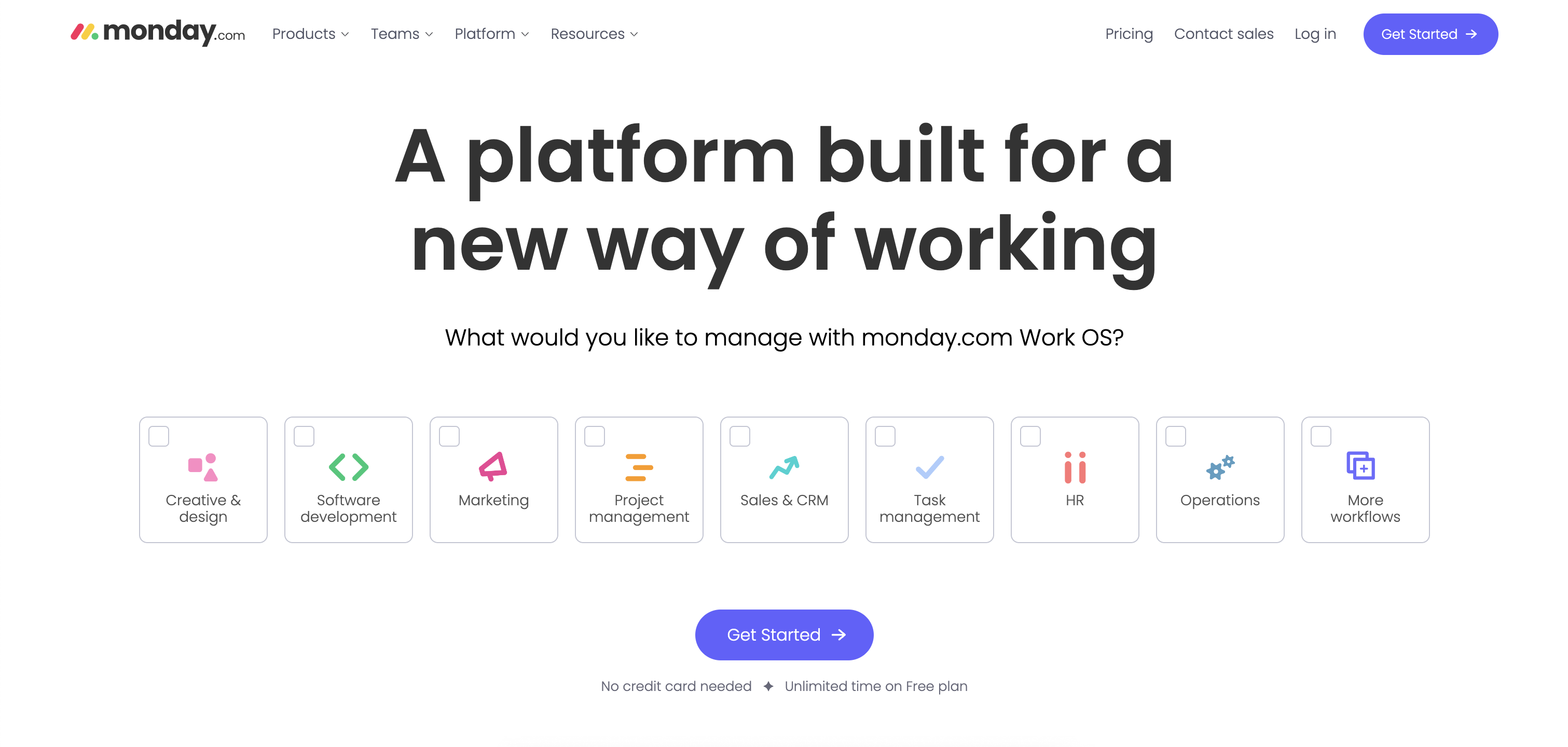
Monday.com is a dynamic project management platform that uniquely combines automation with other advanced features. It offers customizable automation for streamlining workflows and reducing manual tasks by automating task assignments, status updates, and notifications. Most project management app offer some form of automation but we believe that monday.com excels in this domain. The process of creating new automations is both very intuitive & detailed, allowing you to build advanced automations in no time.
Alongside this, Monday.com provides customizable templates, diverse views like timelines and Kanban, and seamless integrations with other tools. This blend of automation and versatility enhances team collaboration and productivity, making Monday.com a comprehensive solution for various business needs, all while maintaining a user-friendly and visually appealing interface.
Operate Whiteboards with Miro
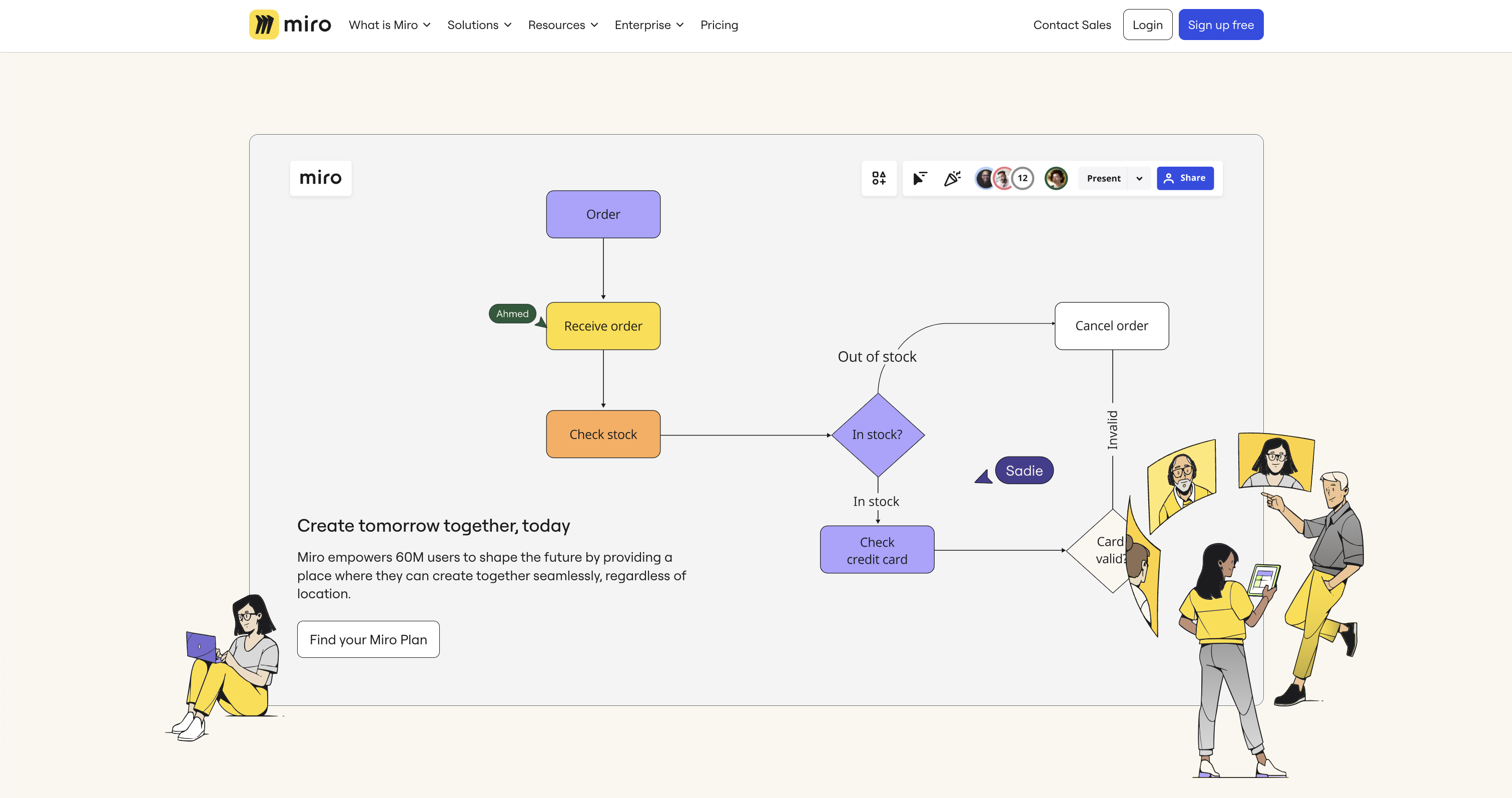
Miro is a robust platform known for its extensive whiteboarding capabilities, ideal for creative brainstorming and collaborative planning. It features an infinite canvas that allows teams to map out ideas freely, with tools like sticky notes and smart drawing.
Miro also supports various workstyles with customizable templates and seamless integrations with other cloud apps. This makes it perfect for diverse teams to collaborate visually, regardless of location. Miro's emphasis on whiteboards and visual tools fosters a dynamic and engaging way to manage projects and ideas. If you want to focus on ideation and brainstorming, rather than following up on tasks and projects, then Miro is the ideal tool for you.
Cloud Apps Today
Each of these apps have approached project management from a different angle: Trello started with its Kanban design, Airtable focused on spreadsheets, Miro on whiteboards, etc. However in the last few years each of these apps have added features that brought them closer to each other. This complicates the selection process, though each apps caters to different aspects of work and project management. Choosing the right app depends on the specific requirements of your projects and team dynamics, making it crucial to explore and understand the strengths of each tool.

ClickUp 3.0 has arrived: Here's what's new

The world of productivity and project management just got a major upgrade with the launch of ClickUp 3.0. ClickUp has been a game-changer for individuals and teams looking to streamline their work processes, and this latest update takes it to the next level. In this blog post, we have selected some of the most exciting new features that ClickUp 3.0 brings to the table. Let's dig in!
Stunning new design
The first change that you will notice is of course the new user interface. It’s generally cleaner and more modern. This means there are fewer distractions so that you can fully focus on your work. We think that the new user interface is a big improvement as the previous UI felt quite cluttered compared to other productivity apps such as Asana or Notion. At the same time we don't feel that any features are hidden in submenus; everything still feels readily accessible.
A few key things that have changed in the UI are the sidebar, table view and especially the task view: Task view 3.0 acts as more of a command center instead of a static single data source. It is now easier to navigate to other tasks, to view and edit custom fields, and to build relationships without having to leave the task view. This allows you to build or design new processes directly in the parent task.
And lastly, this new UI also brings a significant increase in speed & reliability: The new UI responds a lot faster so getting work done never looked and felt so good. With this ClickUp has tackled one of the other minor shortcomings of the previous versions so it's great to see that they have their priorities straight.

Find data instantly with global search
ClickUp 3.0 also comes with an upgrade on the search bar. Using this search bar will pull results from almost anywhere on the platform, including comments, chats, and files. The added filters such as "Current location," "Created by," and "Assigned to" make it even easier to find what you're looking for. In the short time we've worked in ClickUp 3.0 this quickly became our most used feature. No more clicking or navigating in the sidebar, the search bar brings you immediately where you need to be. The search bar also comes with added buttons which allows you to track time, start a whiteboard, and even manage your account settings from this new search bar.
Hubs for Docs, Dashboards & Whiteboards
It is clear that ClickUp has put a lot of focus on making data more readily available to you. Next to the search bar, they have updated the inbox as well as added brand new hubs for Docs, Dashboards and Whiteboards.
The Hubs allows you to organize, search, and create Docs, Dashboards and Whiteboards from a centralized location. This will make it easier to bring work to light for your teams. Don't waste time digging for context, sending status updates, or looking for project summaries. Simply get a quick view of all the work happening within any Space, Folder, or List. The Hub for dashboard proved to be particularly helpful, as it allows you to create your own custom quick overview of the most important data. Together with the inbox it becomes very easy to keep track of all things; something that is often very challenging when working productivity apps.
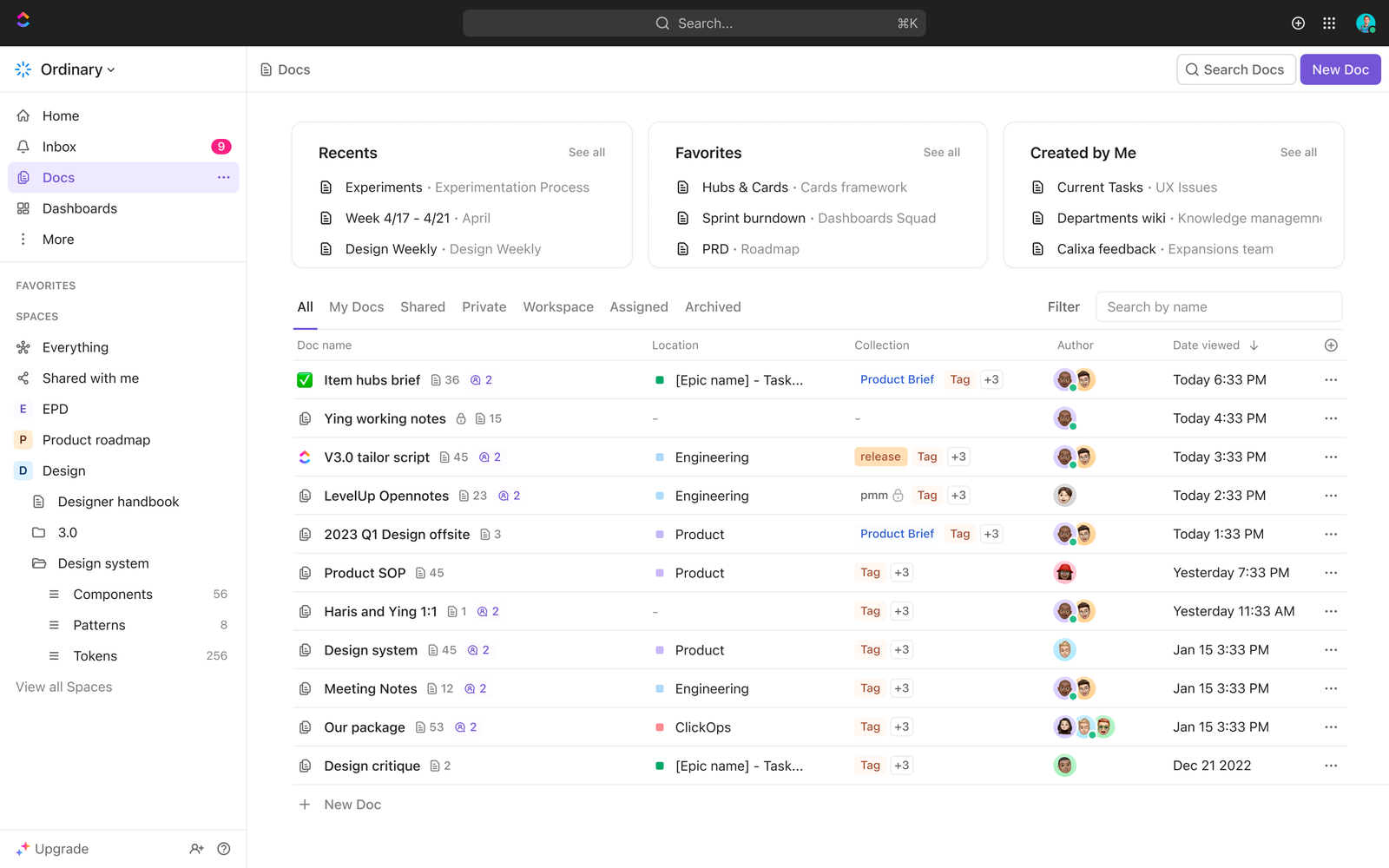
ClickUp AI
Since the launch of ChatGPT AI is everywhere and ClickUp is keeping up with the latest hype. In ClickUp 3.0 you can now use AI prompts to automatically generate creative ideas, summarize lengthy texts, and elevate your writing skills - in seconds. These AI prompts are especially useful when working in ClickUp Docs. It takes a bit of practice, but once you're familiar with the power of AI you will save a lot of time and strongly improve the quality of your work.
Custom field manager
If you have worked a long time with productivity apps then you know that custom fields can be both a blessing and a curse: They offer extreme flexibility to shape your data the way you want, but they can also be a gateway to create overly complex tables with numerous similar fields living next to each other. The system admin might still have an idea what's going on but most users end up being confused when adding or editing records.
This is why we're a big fan of the new custom field manager that's been added in ClickUp 3.0. This custom field manager allows you to manage, edit and search your custom fields in one place, making it a lot easier to keep your list templates clean and to streamline processes across different departments. We strongly recommend each system admin to use this feature to simplify the custom fields in their accounts.
And there's more.. a lot more
Next to these big updates, ClickUp 3.0 has even more in store for you. For a complete list of new features we refer to the website of ClickUp, but here are some other features that caught our eye.
Conditional Logic in Forms
It's been almost three years since ClickUp introduced Form View. Since then, it has become a fan-favorite feature because forms can be used as the primary way for users to capture information from people and bring that data into ClickUp. With this update you can now build smarter forms that can handle conditional logic. Conditional logic allows you to hide or show certain questions based on previous answers. This avoids that forms can become too long and significantly improve the conversion rate of these webforms. A lot of productivity apps have some sort of basic webform functionality, but they rarely go far enough to make it very usable. ClickUp understands that it needs to go further and did a great job with this update.
Whiteboards
Working on digital whiteboards have become increasingly popular in the last few years. They allow you to structure thoughts, design flow diagrams and integrate mind mappings together with your team members. The Whiteboard functionality of ClickUp has all key functionalities covered: Frames, arrows, text, notes, comments & files can be added with just a few clicks. They also offer a range of templates to get you started even quicker. This means that you no longer need to switch to using separate apps such as Miro to manage whiteboards. Instead you can do it all in ClickUp which is both convenient and saves money.
Sprints
Everyone who works in technology has probably heard of the SCRUM methodology. It's a way of working where you define the work for (bi)weekly sprints. It's great to see this way of working enabled with the new Sprint feature in ClickUp. It's now possible to tailor sprint durations to match everyone’s work days and you have access to more accurate sprint reporting.
Conclusion
It's clear that with this update, ClickUp 3.0 is getting closer to achieving their vision of "one app to rule them all". Its enhanced customization, mind mapping, time tracking, integrations, automations, and collaboration features cater to the diverse needs of teams and individuals across various industries. With ClickUp 3.0, you can streamline your work processes, boost productivity, and achieve greater success in your projects.
If you're looking for a comprehensive, user-friendly, and highly customizable project management solution, ClickUp 3.0 should be at the top of your list. Try it out and experience the future of productivity and collaboration today!
.jpg)
Announcing Pro Backup 2.0: A New Benchmark in Cloud Backup Solutions

We're thrilled to unveil the latest version of Pro Backup. This upgrade isn't just an update—it's a leap forward, designed to make your backup process easier and more secure.
Why Upgrade?
We listened to your feedback and made sweeping enhancements to serve you better. Here are some key features that set the new version apart:
Increased Performance & Security
We've optimized our algorithms and fortified security protocols to ensure your data is backed up quicker and stored with maximum security. Our engineering team has re-written all backup & sync engines from scratch, applying the lessons learned from +10 years of experience. In addition to this, we’ve also added some new security measures such as password protected accounts, 2FA and Single-Sign-On (SSO will become available later this month).
Fresh & super fast User Interface
The new UI offers a more intuitive experience, streamlining the functionalities and presenting a clutter-free workspace. Snapshot and Recovery have been merged to Backups, which makes it easier to search through your data backups and compare backup versions. The data tables are now also loading with lightning speed which makes that you can view and export your data backups much faster.
The new Reports page gives you more insights about the backup & restore processes and will inform you about potential warnings or hiccups.

Team Invites
Now you can easily bring your whole team onboard. Send invites directly from the app to share your data backups and to add your team members’ data to the backup scope.
Manage Multiple Backups in One Account
No more juggling between different accounts for various applications. You can now manage all your backups from a single dashboard.
How to Upgrade
Log in to your existing Pro Backup account. Follow the prompt to transition to the new version.
If you need help during the transition, our support team is available at support@probackup.io
Final Thoughts
We believe this upgrade will redefine what you expect from a cloud backup service. Go ahead and take the new version for a spin and let us know your thoughts.
Here’s to smarter, safer, and faster backups!
- The Pro Backup Team

How Do B2B SaaS Apps Protect Your Data?

Many businesses depend on Software as a Service (SaaS) apps to help operate and manage their organizations. SaaS apps are used to manage internal projects, development cycles, ticketing & customer relationships. Some examples of the most popular SaaS apps for businesses are DocuSign, HubSpot, Jira, monday.com, Slack and Trello.
Do you know what all these apps have in common? Each transmits and stores sensitive data on cloud servers to provide fast and easy access to commercial users. Because of this, the app companies have an obligation to secure and protect all their stored and transmitted data. Not only is it a moral obligation for app companies to protect their users’ data, but it is also a legal obligation.
In this blog post we are taking a deeper look on how these SaaS providers project your data, what the main security risks are and how you can mitigate against them.
How do SaaS apps transmit your data?
SaaS backup and data security are essential for protecting user privacy when businesses send information through a subscription-based software platform. But to understand the potential data security risks of such a platform, you have to understand how SaaS data transmits in the first place.
Data is transmitted through the following three locations:
- The Cloud Server
- The Network / Internet
- The Client’s Computer
The cloud server (1) hosts the framework of the software application and stores the data of all the application clients. A client will download the software application onto their computer (2) or mobile device to access it. The network (3) is the cyber pathway responsible for transmitting information between the cloud server and the downloaded software application on the client’s computer.
When the client performs actions and saves content on the application, the updated data gets transmitted through the network and stored on the cloud server. As a result, the client can access their data from any computer or mobile device with the application downloaded on it. All they have to do is log into their SaaS account using their username and password credentials to retrieve the stored data from the cloud.
The Top 3 Data Security Risks to SaaS Apps
Several potential data security risks can occur in any of the three locations of data transmission: the cloud server, the network, and the client’s computer. The risk level depends on how much time and effort a SaaS company has invested in securing its cloud storage system, network, and user application.
Some SaaS apps are more secure than others. Therefore, you should be aware of the potential SaaS data risks involved so you can look for alternative ways to boost your SaaS data security.
Here are the top three SaaS data risks below:
1) System Hijacking
Cybercriminals usually target SaaS network computers because they are the least secure and most vulnerable. Since network computers actively transmit sensitive data, it opens up more pathways for cybercriminals to gain entry to the systems. Once that happens, the cybercriminals could hijack user accounts, access sensitive data, and upload viruses, malware, or ransomware to destroy the computer systems.
2) Poorly Configured SaaS Application
SaaS companies must adequately configure their app and its architecture with the latest security protocols to prevent data security breaches and cyberattacks. Unfortunately, SaaS companies sometimes misconfigured their apps or fail to update the security protocols. This failure leaves SaaS apps extremely susceptible to cyberattacks and unauthorized access to sensitive user information.
3) Failure to Track and Monitor Unusual Data Access Attempts
Cybercriminals will often prey upon poorly monitored SaaS apps. They may perform several login attempts using various hacking methods to gain unauthorized access to user accounts. If the SaaS app software operators are not actively monitoring for unusual login activity, they will not catch a pending cyberattack before it strikes.
The Top 4 Data Protection Methods for SaaS Apps
The best SaaS app companies use highly effective data protection methods to secure user data and prevent unauthorized access. But if you are not happy with the data protection features of a particular SaaS app, look for third-party data security integrations to improve your company’s data protection when using the app. You will learn about one example as you continue reading.
Here are the top four data protection methods below:
1) Cloud Backup Data Protection
Some SaaS companies can back up your cloud-stored data in case it gets deleted accidentally or maliciously. A cloud backup creates a saved copy of the currently stored information and puts it in a secure location where it can never be overwritten or altered. It will ensure you can retrieve your data under any circumstances, such as after a ransomware attack, virus, or data-overriding mistake.
However, not all SaaS apps have cloud backup features for restoring lost data. That is why you may need to use a backup-as-a-service (BaaS) app to safeguard the sensitive data on your SaaS apps to ensure you never lose your data. All you need to do is find a reliable BaaS app that can easily integrate into your SaaS apps.
Of course we recommend using Pro Backup as your designated backup-as-a-service app. Pro Backup is trusted by many businesses world-wide and allows you to back up data on many popular cloud-based SaaS apps, such as Airtable, Jira, and Trello. It has several easy integration options to back up your precious data flawlessly.
Pro Backup also features advanced encryption protection (256-bit) to safeguard your backups and make the data retrievable whenever the original data is lost or destroyed. The best part is that all the team members on your SaaS user account can operate Pro Backup under one license.
2) Data Encryption
Encrypting your backup data is essential, but you must also encrypt the transmitted and stored data. Security breaches usually occur within the network, allowing cybercriminals to view unencrypted or poorly encrypted sensitive information. But if you use a 256-bit encryption key to shield your data from unauthorized access in the network, you can prevent cybercriminals from gaining access to your data.
Professional SaaS companies will not allow data transmission through FTP or HTTP because they are easily compromised. Instead, they will use more secure data encryption methods like transport data encryption (TDE) or Transport Layer Security (TLS).
3) User Authentication
Secure data systems use digital key certificates to verify user identities and prevent unauthorized access to their data. Virtually all SaaS companies use key certificates or key vault services to boost user login security and ensure that only authorized people can successfully access their data. These keys may contain a series of encrypted numbers which act as digital signatures for the users. A new encrypted digital key is created each time a user logs into their account.
4) Monitor All Login Attempts
Backend cloud system monitoring is another critical security task of SaaS companies. They must monitor and record all login attempts to track suspicious activity and potential cyber-criminal wrongdoing. When a SaaS company constantly monitors attempted logins and access to the cloud, they have a better chance of stopping data breaches and implementing more robust data security techniques in the future.
Conclusion
Are you ready to begin protecting your SaaS user data? If so, you should start with probackup.io because it offers professional and reliable cloud backup services at affordable prices. It is the perfect BaaS app for saving, recovering, and retrieving data files without any risk of deleting them.

The Top 3 Latest Trends in Data Security

Most modern businesses digitally store and transmit the sensitive information of their customers, employees, and other stakeholders. Digital data technology increases the productivity of companies and allows them to serve their customers faster and better.
Unfortunately, digital information is under constant threat from hackers and cybercriminals worldwide. No matter where your company stores and transmits information, a hacker could steal the data or damage the cloud server storing it if you don’t have the proper safeguards to prevent such attacks.
The Importance of Data Security
Data security refers to the procedures, processes, and technologies designed to protect digital information wherever it is transmitted, such as a client’s computer, the organizational network, and the cloud servers and storage devices.
The best data security measures will protect sensitive digital information from disclosure, theft, damage, corruption, or unauthorized access. These security measures must consider the vulnerabilities of physical hardware, software applications, user data accessibility, and organizational policy standards (CFI).
New threats to digital information exist every day. For this reason, companies must frequently update their database security technologies and protocols to better protect data from the latest malware, ransomware, and other security threats circulating on the internet.
If a company fails to protect its data from cybercriminals and their attacks, it could jeopardize the privacy of its customers, reduce productivity, and damage the overall reputation of the business. That is why you must take data security seriously if you want to protect the productivity and integrity of your business.
Watch for Data Breaches
A data breach is when an unauthorized person or third party may have accessed, stolen, copied, modified, or retrieved sensitive information from a company’s cloud server, network, or client’s computer (Wikipedia). Some people may also refer to it as a data leak or security breach, but they are the same thing.
Data breaches can happen to even the most protected and updated security systems. Here are some examples of common data security breaches (Sutcliffe Insurance):
- Weak security credentials are easily susceptible to hackers
- Software application vulnerabilities (e.g., poor configurations, back doors, etc.)
- Malware unintentionally downloaded into the security system
- Too many access permissions granted (increases the risk of hackers gaining unauthorized access to user accounts)
- Stolen login credentials of authorized users
- Failure to update security protocols and configurations
- Physical attacks on security systems (insider threats)
- Lack of data encryption technologies
Major corporations spend millions of dollars on data loss prevention each year but still suffer data security breaches periodically. Here are a few notable examples of famous data security breaches from recent years (Drapkin & Farrelly):
1) T-Mobile Security Breach – May 2023
The famous cellphone service provider, T-Mobile, suffered a cyber attack affecting roughly 800 customers. Based on reporting, unauthorized parties accessed sensitive customer data, including ID cards, PINs, social security numbers, and contact information. It was T-Mobile’s second security breach within one year.
2) Chick-fil-A Security Breach – January 2023
Suspicious activity was suspected on several customer accounts of the popular fast-food chain restaurant Chick-fil-A. The company urged customers to report all suspicious or unusual activity on their accounts, such as strange login activity. Unauthorized third parties may have accessed some customers’ names, phone numbers, email addresses, physical addresses, and stored payment information.
3) MGM Resorts International – September 2023
A ransomware cyber attack was inflicted upon MGM Resorts International, reducing its operational productivity and costing the company around $80 million in lost revenue in under one week. The hacker may have used the “social engineering” technique to break through the company’s cybersecurity defenses. Combating social engineering requires better employee training and the ability to spot phishing and baiting attempts online.
The Newest Trends in Data Security
Companies of all industries are eager to search for effective ways to protect their computer systems and cloud data storage servers from the most common types of modern cyberattacks, such as phishing and ransomware. Because of this, new data security methods and protections are trending almost every month.
Here are the top five newest trends in data security methodology and technology (DeVry University):
1) Machine Learning & Artificial Intelligence
Machine learning is a data security practice utilizing the power of artificial intelligence to locate cyber threats and vulnerabilities in a security system. It is a faster, cheaper, and effective way for companies to safeguard their data without relying entirely on humans. After all, humans are more prone to making mistakes than AI.
Machine learning is the future of cloud security and data leakage prevention. AI is a more sophisticated form of data security in cloud computing. Although not many companies use machine learning for data loss protection right now, it is only a matter of time before it becomes the new norm in clou data security.
Of course, there are plenty of data protection services available to assist companies who are ready to implement machine learning protections into their data security systems. We recommend you act sooner rather than later to stay ahead of the attacks before they occur.
2) Multi-Factor Authentication
Have you noticed how most companies now require their customers and clients to submit at least two or more user credentials to verify their identities before logging into their accounts? This multi-layered login security method is called multi-factor authentication.
Multi-factor authentication usually applies to personal accounts. Some companies require users to submit multiple credentials to log into their accounts, while others only make it optional.
For instance, a user may have to submit a username and password as one credential. Then, on the next screen, they may have to submit a temporary six-digit code sent to their cell phone number. This double-layer authentication method helps ensure the account’s true owner is the one logging in.
3) Firewall as a Service
Firewall as a Service (FWaaS) is a new cloud firewall security service that blocks potential malware and other malicious attacks on a network before they reach a cloud server or computer hardware that stores sensitive information.
FWaaS is a vast improvement from traditional firewall software because a single computer console can manage the entire network’s security protection. In other words, you can manage the firewall protection of an entire network of computers from one console without having to update the computers separately.
Why You Need Cloud Backups for Your Business
Do you have cloud backups to protect your business data in case of a malware attack, hardware failure, or other incident that could result in the loss or theft of your data? Without a cloud backup, you will not be able to retrieve lost or stolen data resulting from these incidents.
ProBackup offers professional cloud data security and backup services to businesses of all industries. We can safeguard your company’s sensitive data by saving backup copies of encrypted cloud storage regularly. Then, if a cybercriminal ever attacks your cloud data servers, you can restore the lost data through the backup data copies generated previously. You will never have to worry about losing data to cyberattacks ever again.
References
- DeVry University - 15 cyber security trends expected in 2023. devry.edu. (n.d.). https://www.devry.edu/blog/cyber-security-trends.html
- Corporate Finance Institute (CFI). Data Security. (2023, November 21). https://corporatefinanceinstitute.com/resources/data-science/data-security/
- Kaspersky. (2023, April 19). Top ten cybersecurity trends. usa.kaspersky.com. https://usa.kaspersky.com/resource-center/preemptive-safety/cyber-security-trends
- Sutcliffe Insurance. (2018, October 8). 8 most common causes of Data Breach. Sutcliffe Insurance. https://www.sutcliffeinsurance.co.uk/news/8-most-common-causes-of-data-breach/
- Wikimedia Foundation. (2023, December 11). Data breach. Wikipedia. https://en.wikipedia.org/wiki/Data_breach
- Drapkin, Aaron. (2023, December 12). Data breaches that have happened in 2023 so far - updated list. Tech.co. https://tech.co/news/data-breaches-updated-list
.jpg)
GDPR and backups: How to handle deletion requests?

Since the introduction of GDPR, backups have been a hotly debated topic. Many organizations tried to figure out what is required of their GDPR and backup strategy to ensure compliance.
Previously we addressed some of the key implications of GDPR on your cloud backups. In this blog post we will address 2 issues that are at play with backups and the right to be forgotten.
Does a deletion request include removing data from backups?
GDPR allows an EU citizen to ask an organization to remove any record of personal data.
In the last year, several EU supervising authorities have released recommendations on how to address this issue of GDPR and backup. The Danish authority, the Data Inspectorate, states deletion of record data from backups is mandatory “if this is technically possible.” holds that record data does not need to be deleted from a backup.
Additionally, according to a Quantum blog, the French National Commission on Informatics and Liberty (CNIL) said “organizations will have to clearly explain to the data subject (using clear and plain language) that his or her personal data has been removed from production systems, but a backup copy may remain, but will expire after a certain amount of time.” We recommend our Pro Backup clients to communicate this as clearly as possible to their customers. Additionally they should also clearly specify the retention time in your communication with the data subject.
What if a deleted record is restored through an old backup?
The second issue around GDPR and backup is that, should an organization delete a record and then recover from an older backup (containing the now-deleted record), the deleted record will be reanimated and put back into production, making the organization noncompliant.
Therefore we advise our clients to maintain an index of requested deletes – using non-identifiable markers, such as a database row number rather than personal detail – that correspond to a given backup’s retention time. This way, should recovery require the use of an older backup containing now-deleted records, the organization can re-delete the records again.

GDPR implications for your cloud backups

On May 25th 2018 the General Data Protection Regulation (GDPR) went into application. It’s a regulation in EU law on data protection and privacy in the European Union (EU) and the European Economic Area (EEA). Given that the parent company of Pro Backup – B4B IT – is located in Belgium, we need to be compliant with this legislation.
In this blog post we will first address 3 key implications of GDPR on your cloud backups.
Backup and disaster recovery is essential under GDPR
The following comes directly from Article 32 of the GDPR act: Security of Processing
- (c) the ability to restore the availability and access to personal data in a timely manner in the event of a physical or technical incident;
- (d) a process for regularly testing, assessing and evaluating the effectiveness of technical and organisational measures for ensuring the security of the processing.
From this, we can see that organisations are held responsible for their ability to recover lost personal data that they hold in a timely manner. In order to remain compliant, they must have the necessary backup and disaster recovery strategies in place and actively take the time to regularly test the integrity and the effectiveness of the solution.
Otherwise, your organisation could face heavy fines for failing to protect the data that you hold and monitor. In recent years we are now seeing more and more organisations falling victim to sophisticated ransomware and cyber attacks because they do not have the necessary backup and disaster recovery solutions in place. We therefore recommend you to read up on how to protect your company against ransomware.
Data backups need to be regular
GDPR requires the data to be available at all times to the subject; therefore you need to be ensuring that the data is backed up to reflect the live data.
You therefore need to ask yourself how often you or your provider backup your data. If your backups are not automated then you will have to consider increasing the number of times your backups are conducted to keep in line with your live data.
Your third-party providers need to be compliant
To decide to outsource your backup and disaster recovery solution is a good first step, but you are only part of the way to becoming compliant. Now you need to ensure that your chosen provider is also following GDPR compliance.
Since they will be handling, managing, and backing up all your data, they fall under the title of ‘data processor’ and therefore must follow the same data handling and protection rules as you do.
At Pro Backup we work together with Dirk De Bot, a Belgian Data privacy specialist, to ensure that we are GDPR compliant. You can find more info on this on the footer of our website.
.jpg)
Cybernews: What Is Data Loss Prevention & Why Is It Important?

Data is arguably one of the most valuable assets in the modern marketplace. But it’s usually sensitive, and organizations do their best to prevent unauthorized disclosure of confidential data.
However, data loss still remains a huge concern for businesses because they can spend a fortune on data recovery in case something happens. Not only that, but the consequences of data loss can be damaging to businesses as it can ruin their reputation, affect productivity and stop organizational processes.
That’s where data loss prevention comes in.
Organizations have increased their spending on data loss prevention practices and software tools. The global market is expected to grow to $6.4 billion by 2028, and rightly so. Research has shown that you might end up paying more for data recovery solutions than you typically would for data protection measures.
This is why data loss prevention is important. We’ve prepared the following post to serve as a brief guide to everything you need to know about data loss prevention and why it is necessary.
What Is Data Loss Prevention?
Data Loss Prevention (DLP) refers to the process of preventing sensitive data from being disclosed or stolen. It is a crucial way to protect your company’s assets and information. This data could include intellectual property, corporate data, and consumer data.
The thing is, data resides in various devices, including physical servers, databases, personal computers, file servers, flash drives, and mobile phones. Not only that, it moves through many network access points, including VPNs, wire lines, and wireless connections.
There are many ways that data loss can happen. This includes human error, system failure, data corruption, theft, software corruption, natural disasters, and perhaps the most notorious one of them all, hacking.
Data loss prevention aims to provide solutions to these problems. Think of it as a combination of practices and software tools designed to prevent unauthorized access to data.
Why is Data Loss Prevention (DLP) important?
Data loss prevention is crucial because it helps minimize the risks of data being stolen, lost, or compromised. These practices and software solutions prevent data from being lost by identifying and monitoring all the different sources of data leakage.
The implications of data loss can be detrimental to organizations. For instance, business operations can come to a halt, reputations can be ruined, and money can be lost, not to mention legal actions and lawsuits.
Data loss prevention can’t be overlooked because the consequences can be devastating if an organization’s data is breached. For example, if a company has a breach of its payroll system, it might not have any money to pay its employees or make payroll deposits. This could lead to bankruptcy or, even worse – shutting down completely.
Another example would be if a healthcare provider had a breach of their records system. If private patient information leaks, it could lead to a ton of identity theft cases with patients. Not only that, but the healthcare provider would be subject to harsh legal ramifications.
5 Data Loss Prevention (DLP) best practices
1) Back up your data
Backing up your data is an essential practice in data loss prevention because it ensures that you have a copy of your data in case anything happens to the original. This way, you can restore all your files and programs.
2) Consider using a VPN
A VPN is a Virtual Private Network that provides an encrypted connection between two endpoints. This encryption means that all data sent over the network is scrambled and can’t be read by anyone else.
A VPN is essential for data loss prevention because it prevents people from intercepting, accessing, and tampering with sensitive information. And in the process, it also helps in protection against malware attacks. It would be in your best interest to carefully compare some of the best VPNs out there and choose the right solution if you want to ensure data moves securely within your organization.
3) Improve your network security
DLP focuses on protecting information as it moves across different media, such as email, cloud storage, social media, and other platforms. Network security can be improved to prevent data breaches by implementing DLP.
This can be achieved by using tools that monitor network activity to identify potential threats that could lead to unauthorized access or leakage of sensitive information.
4) Educate employees on data loss prevention practices
Employees are one of the first lines of defense against data breaches in an organization. So, investing in their education, training and raising cybersecurity awareness would be in your best interest.
Education should cover areas including using strong passwords, identifying and dealing with phishing attacks, using encryption software, deleting confidential material, and using encrypted USB drives, just to mention a few.
5) Implement a DLP policy
Data loss prevention practices outline how your organization protects and shares its data. They include written rules and procedures to ensure protection against data loss or lawsuits.
Bottom Line
Data is an essential yet sensitive asset for many businesses. Data loss often results in damaging outcomes, including tarnished reputations, loss of revenue, and interrupted business processes. To stop this from happening, organizations turn to data loss prevention.
Data loss prevention is essential as it helps businesses avoid potential data leaks, cybersecurity attacks, and lawsuits. There are many data loss prevention techniques, including backing up data, using VPNs, educating employees on DLP practices, improving network security, and introducing DLP policies.
About Cybernews
The team at Cybernews works diligently to bring breaking reports of online privacy and security issues, backed by in-depth technical analysis and investigative reporting. You can find more of their articles on Cybernews.com and reach them on Twitter (@CyberNews) anytime.

